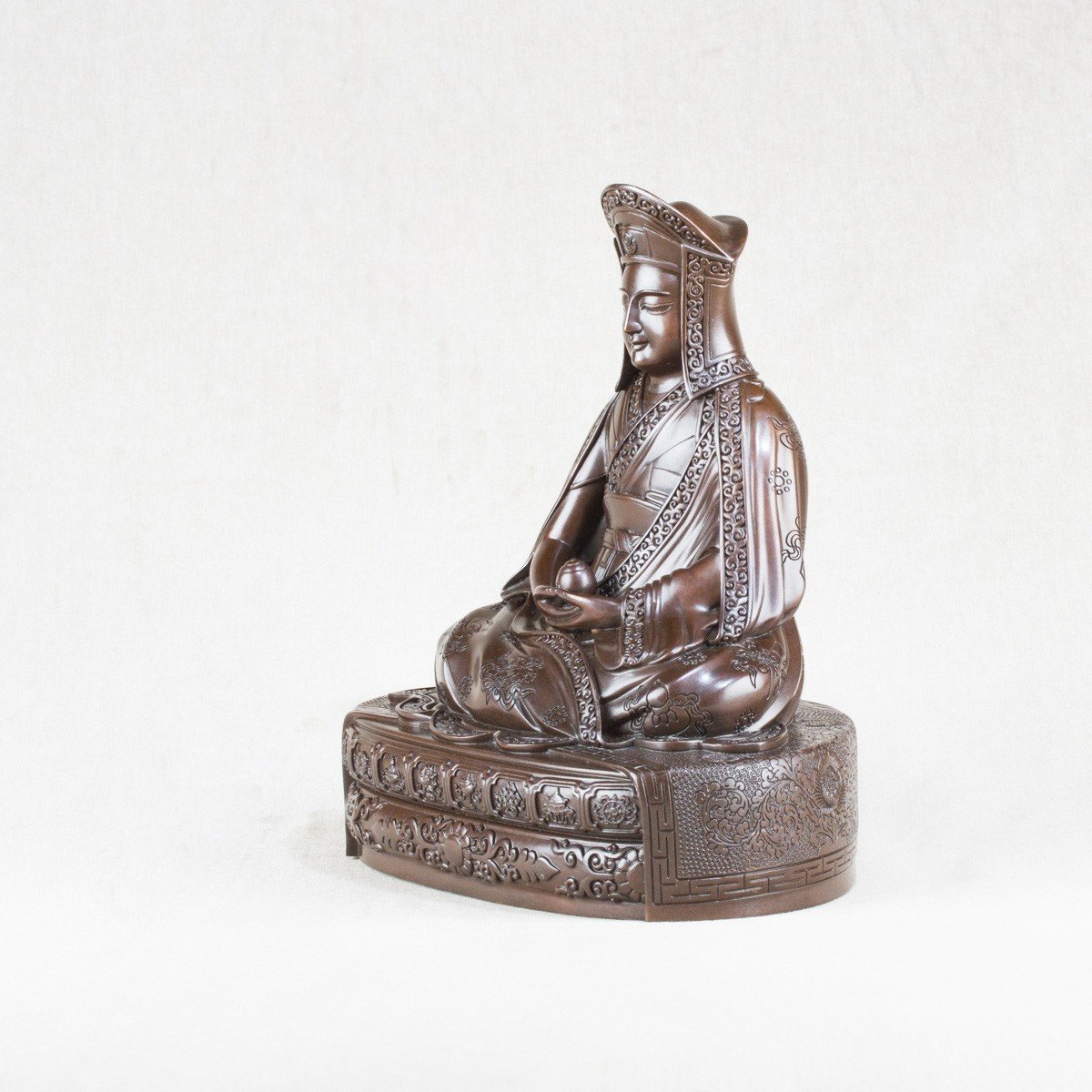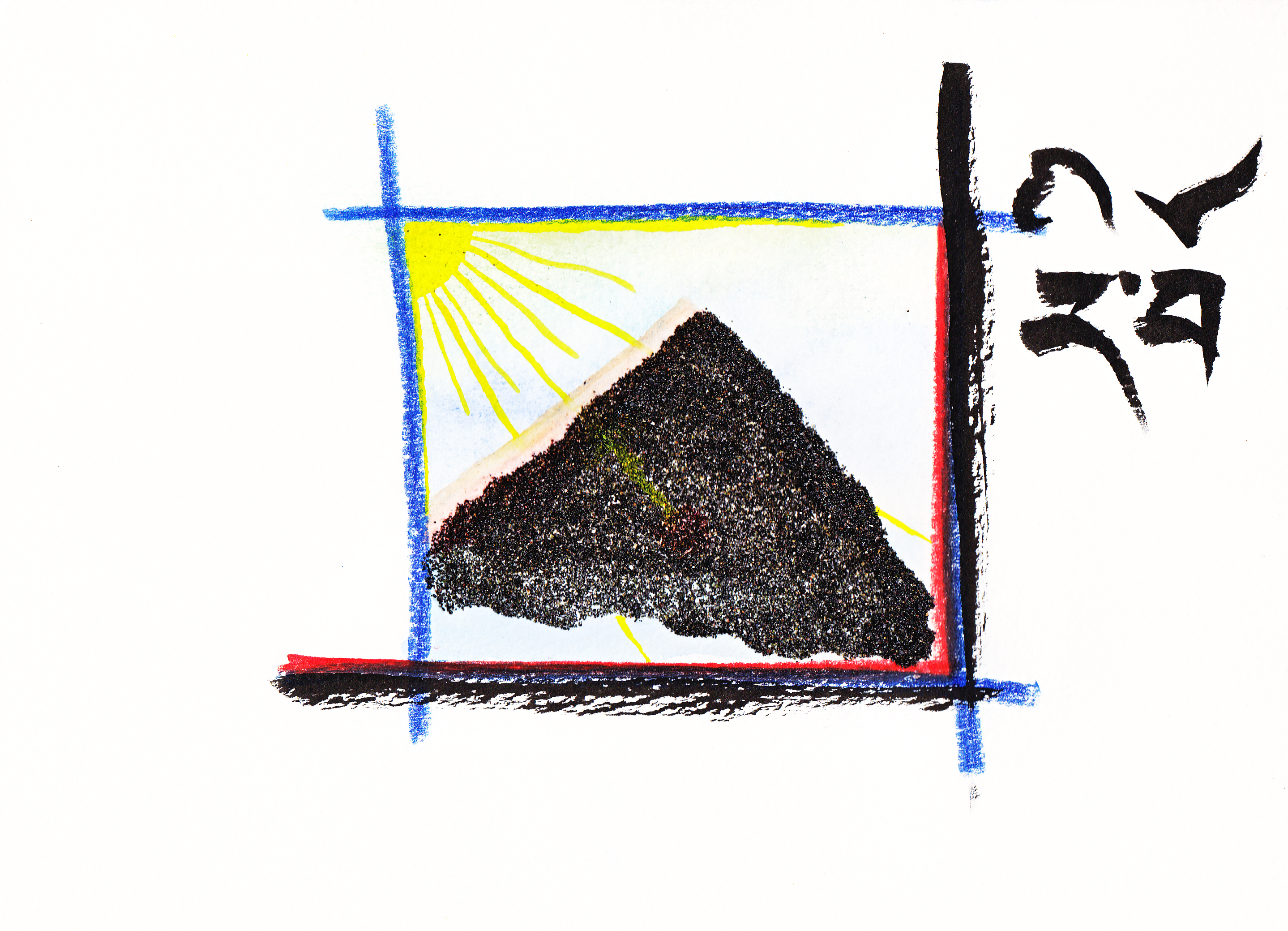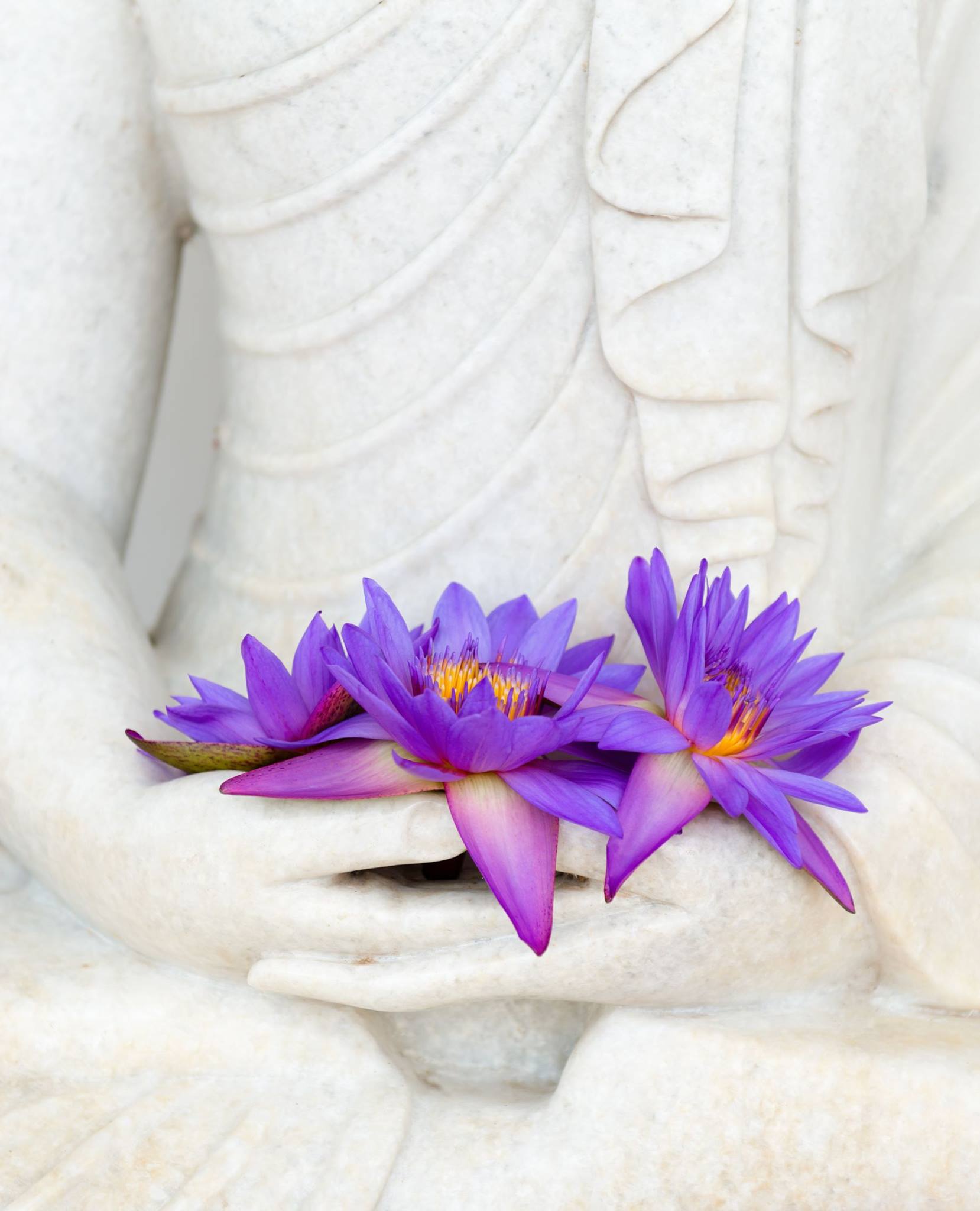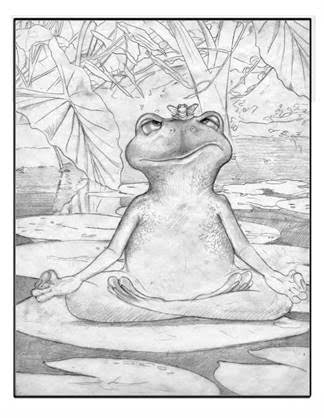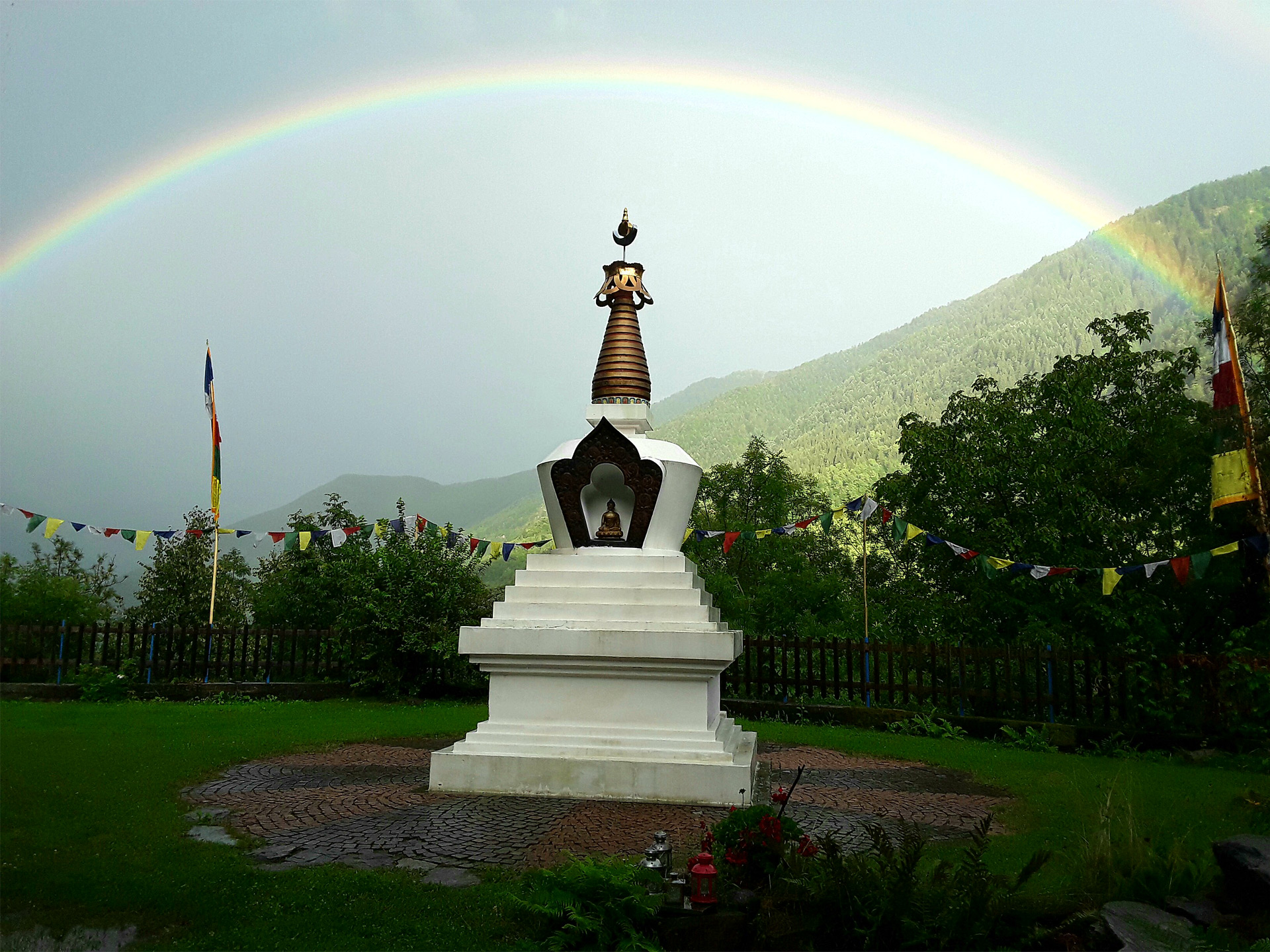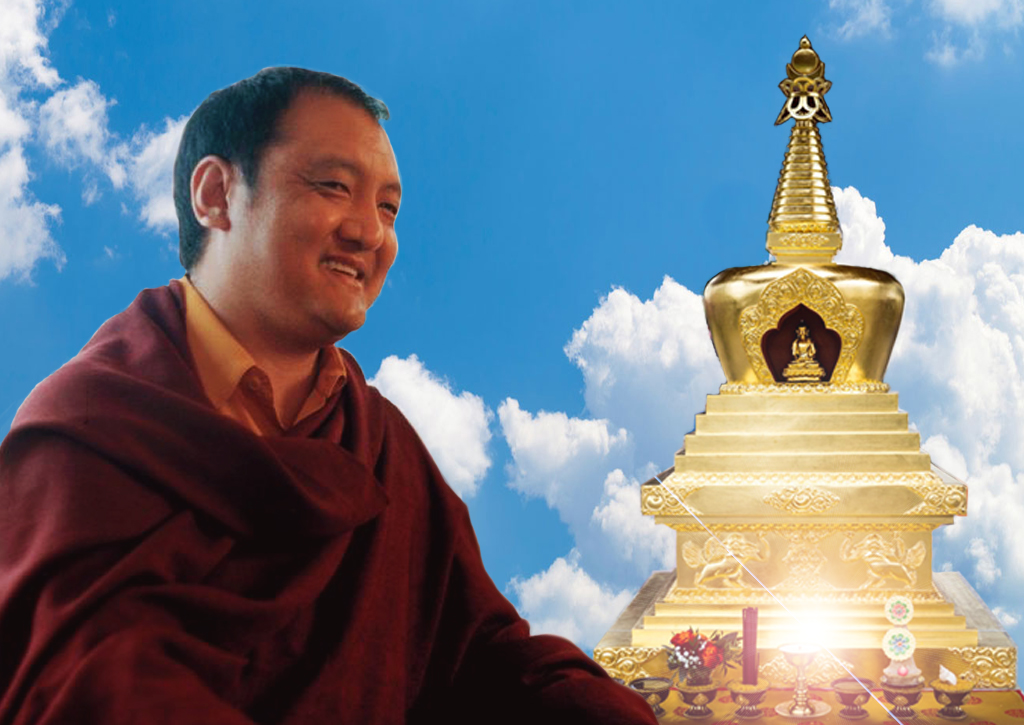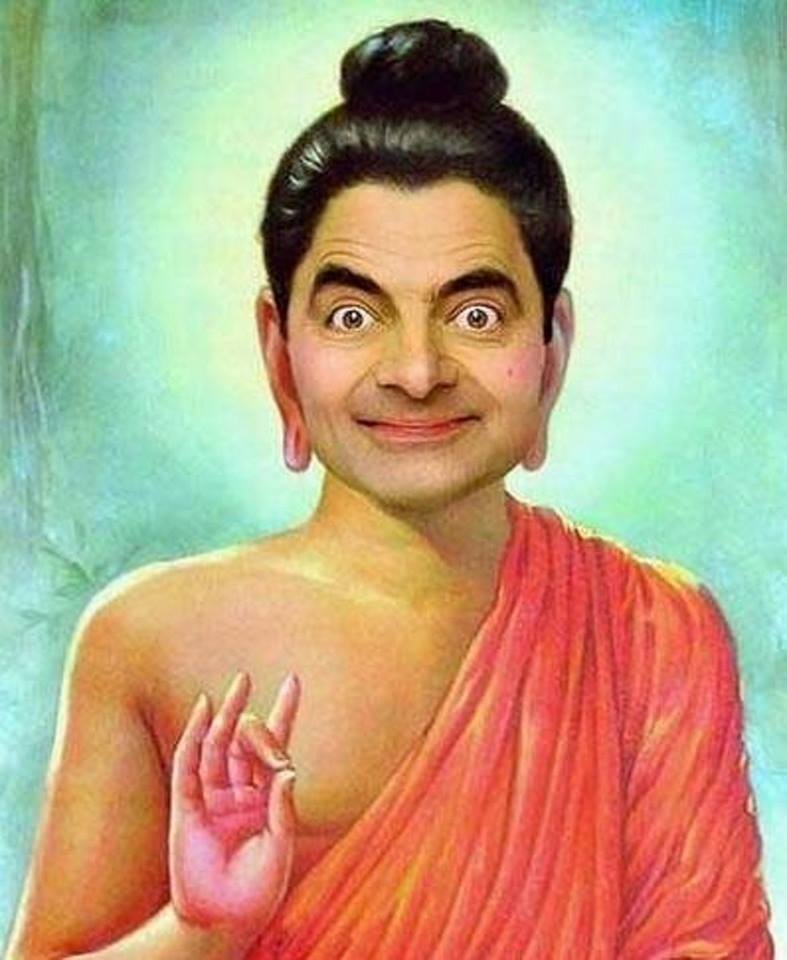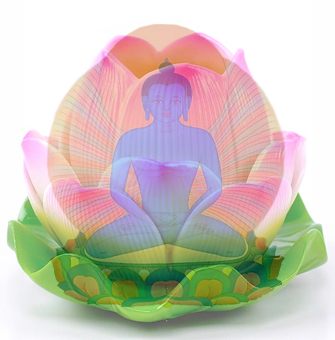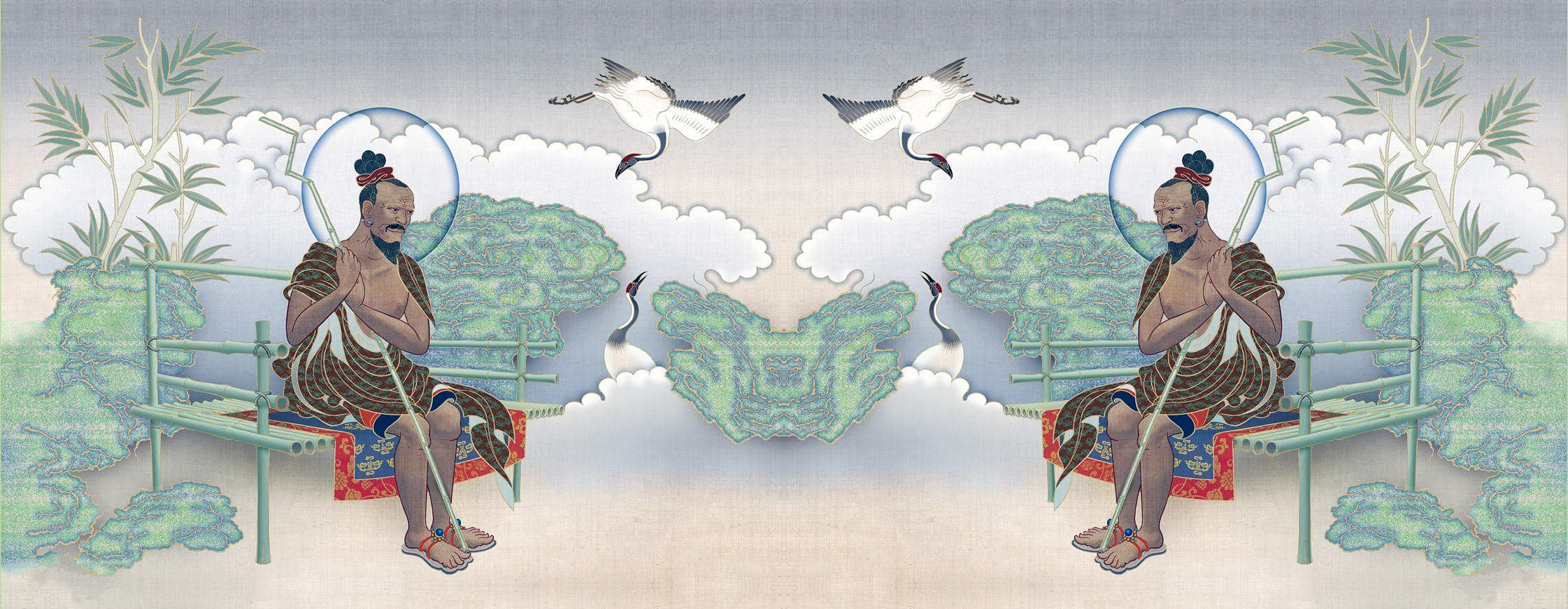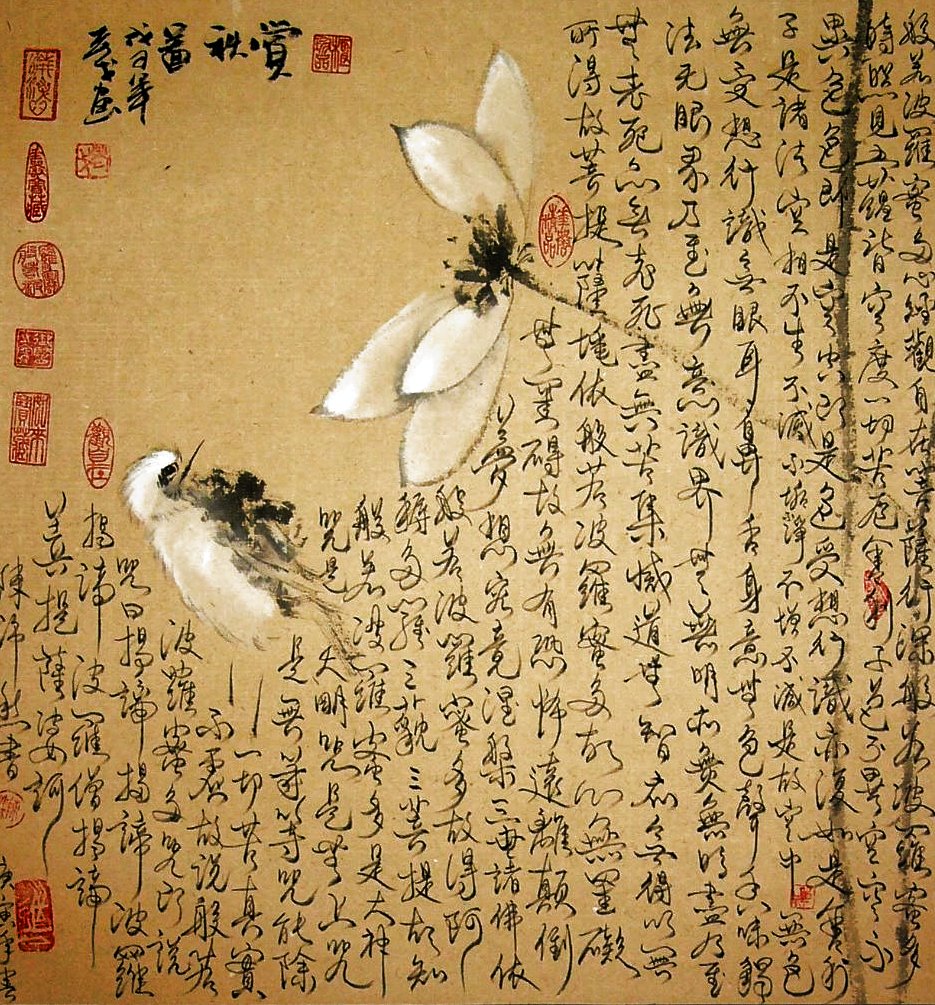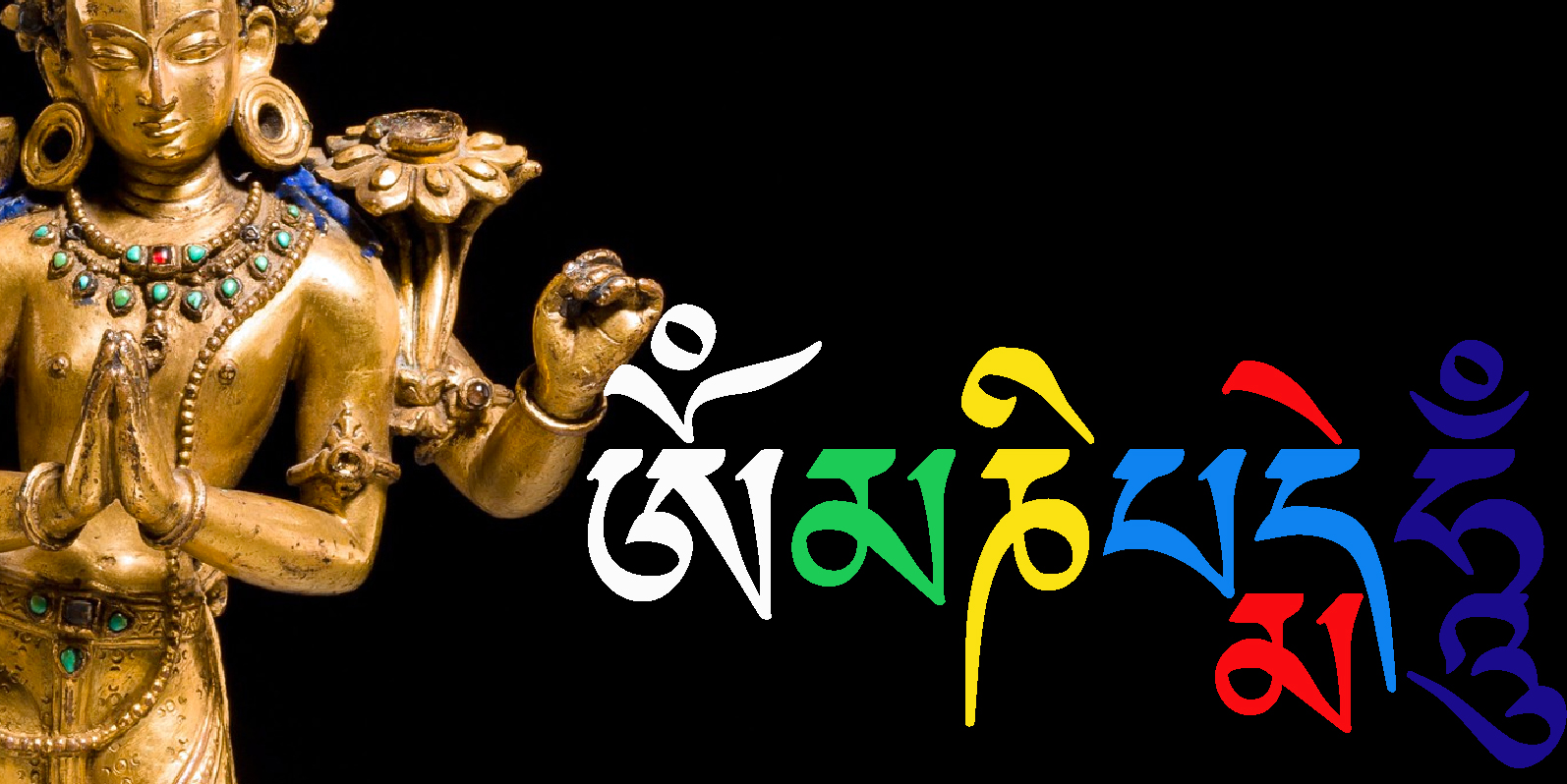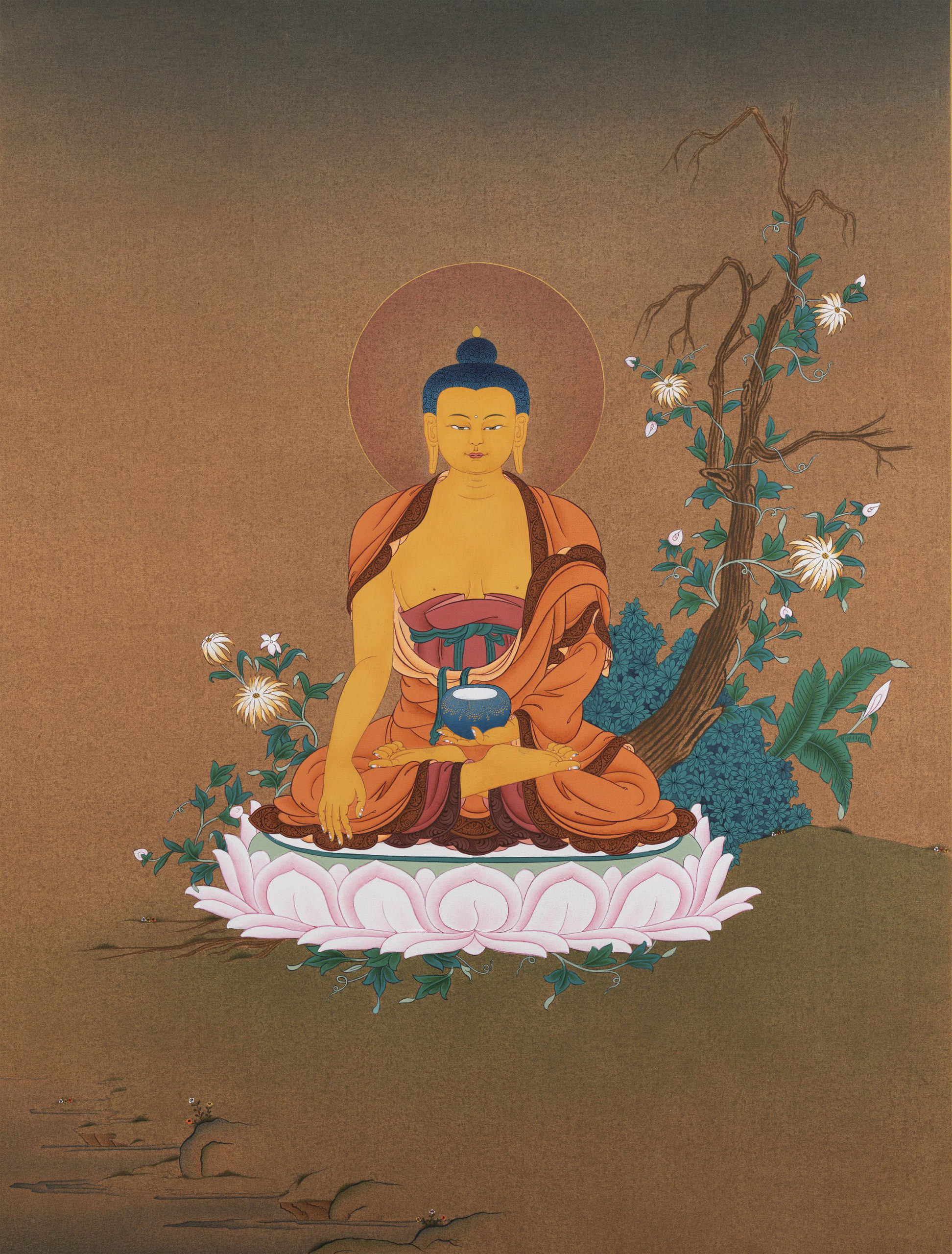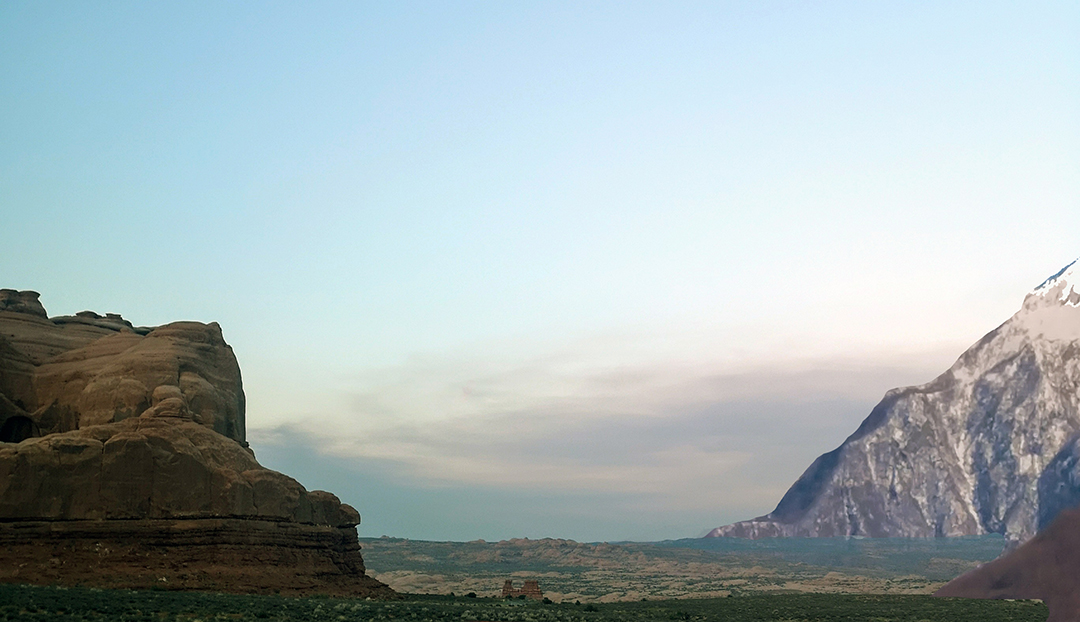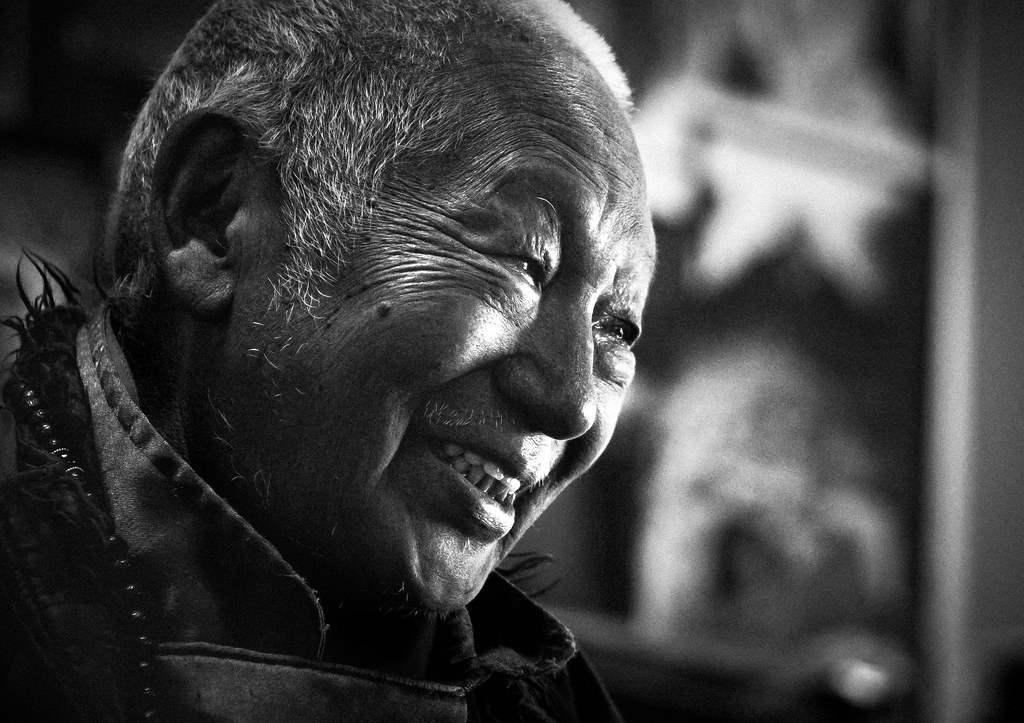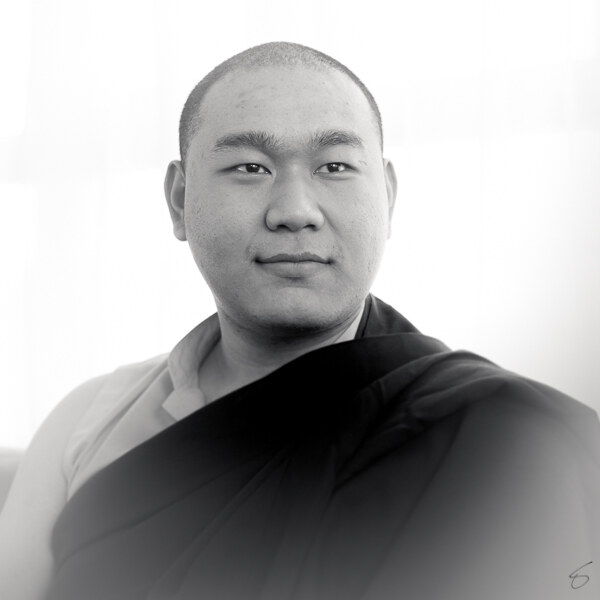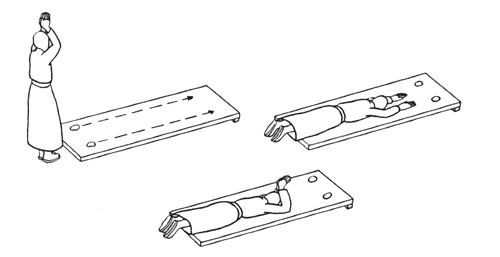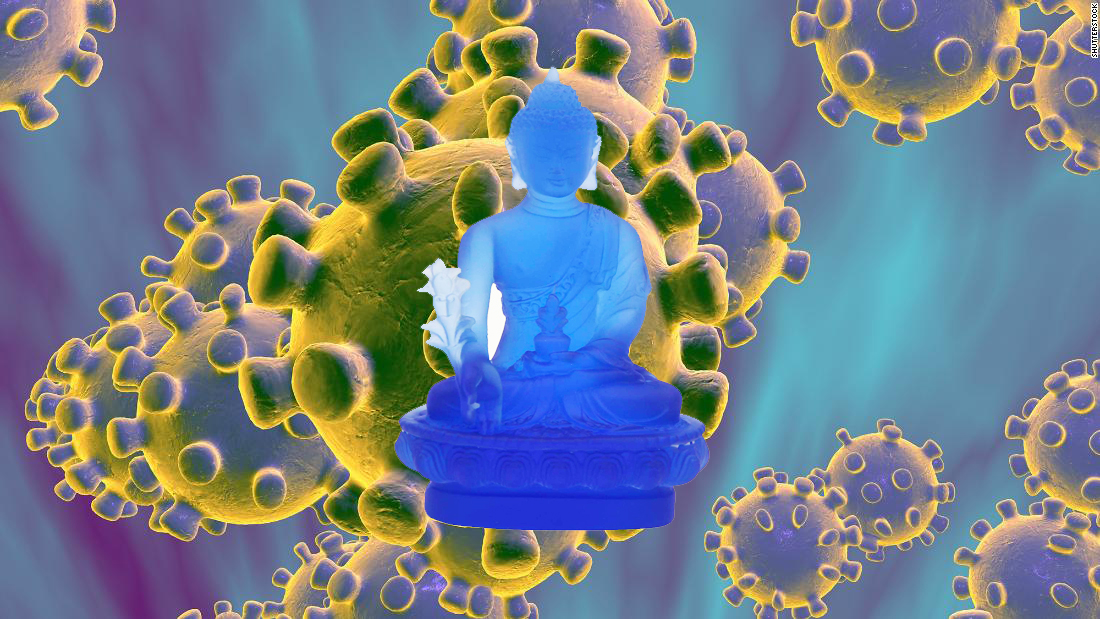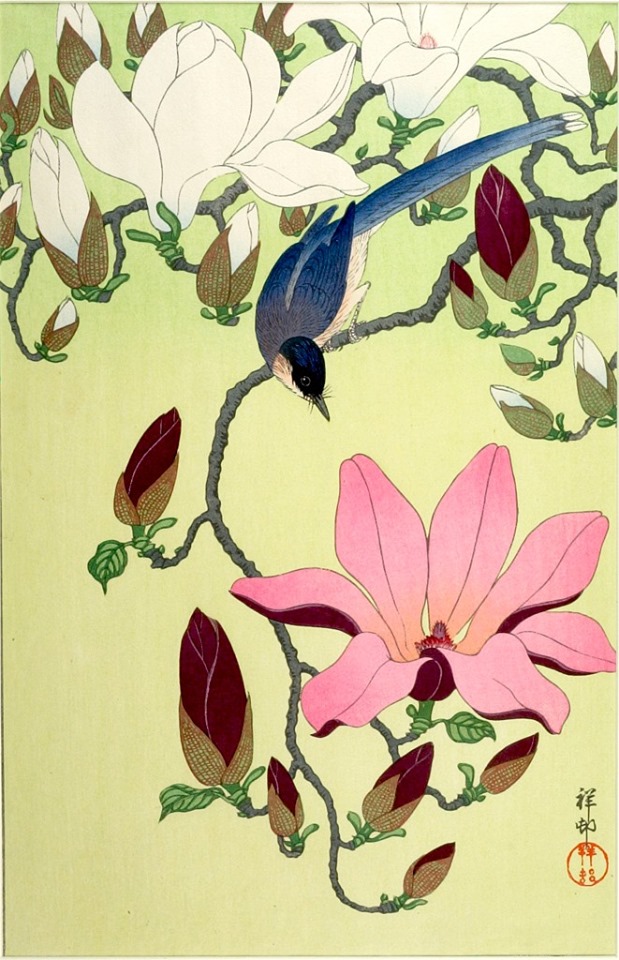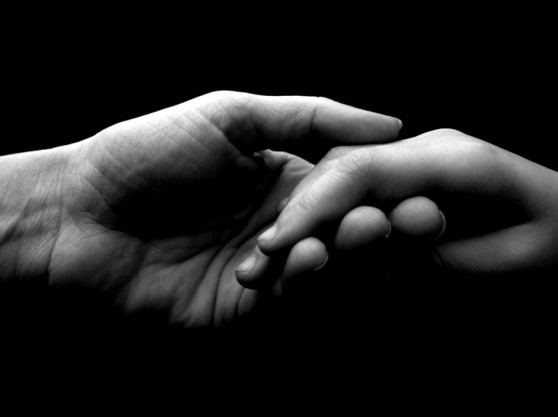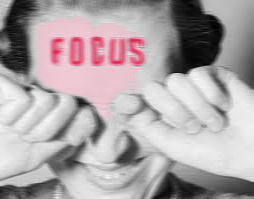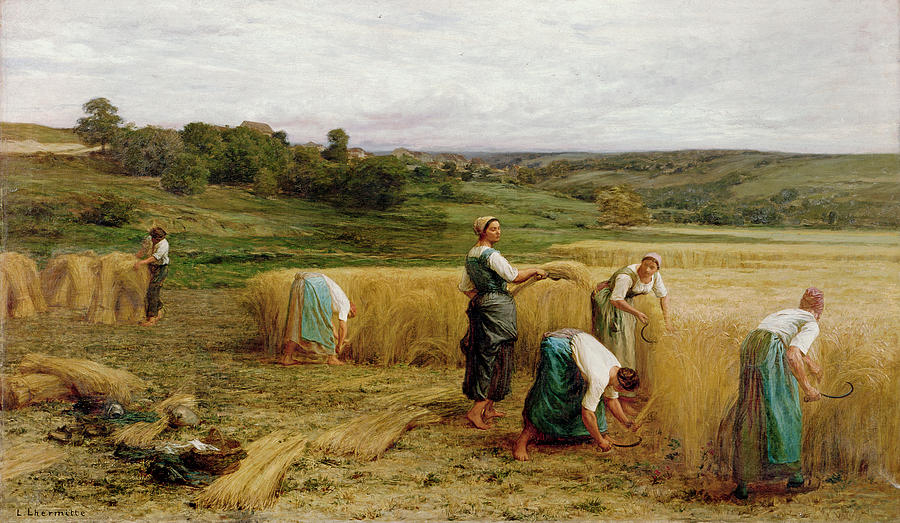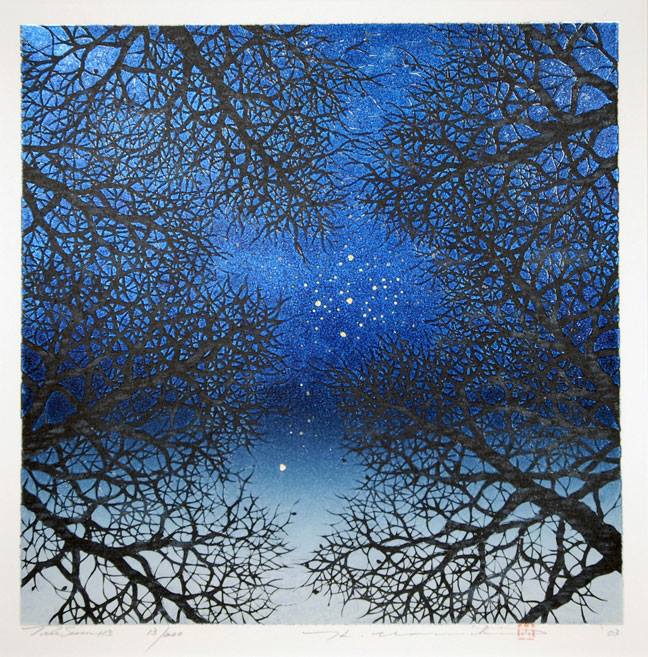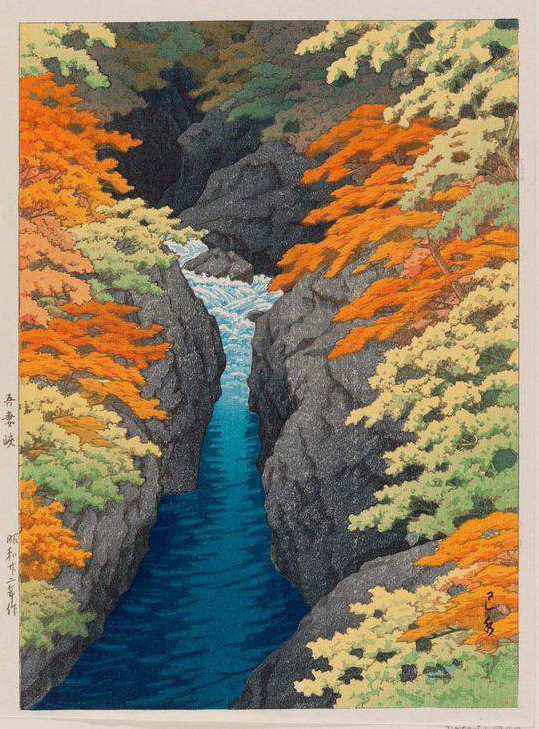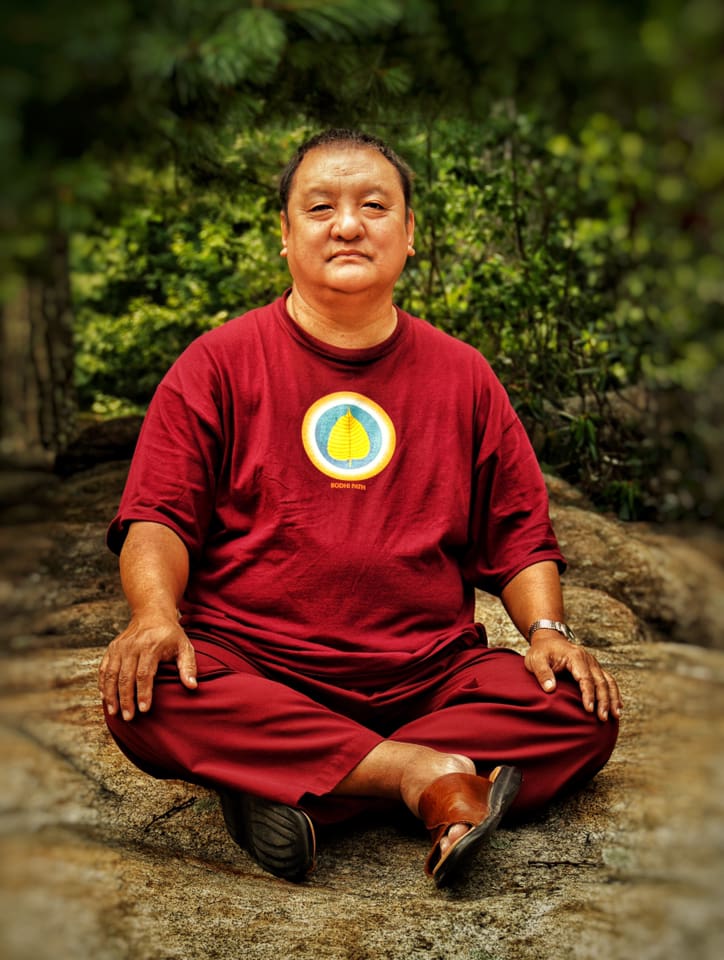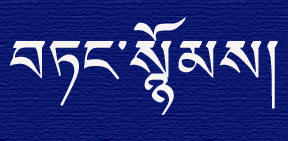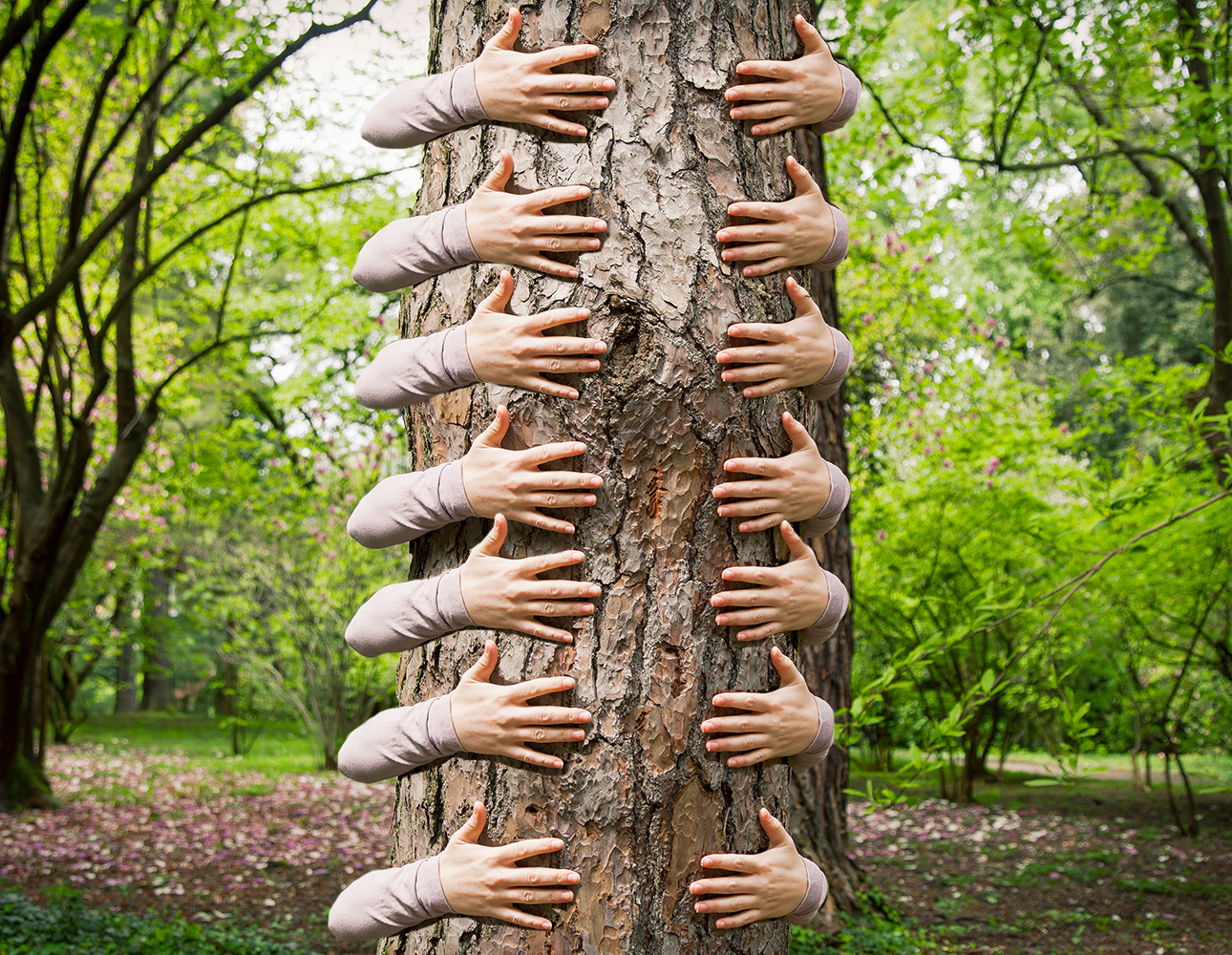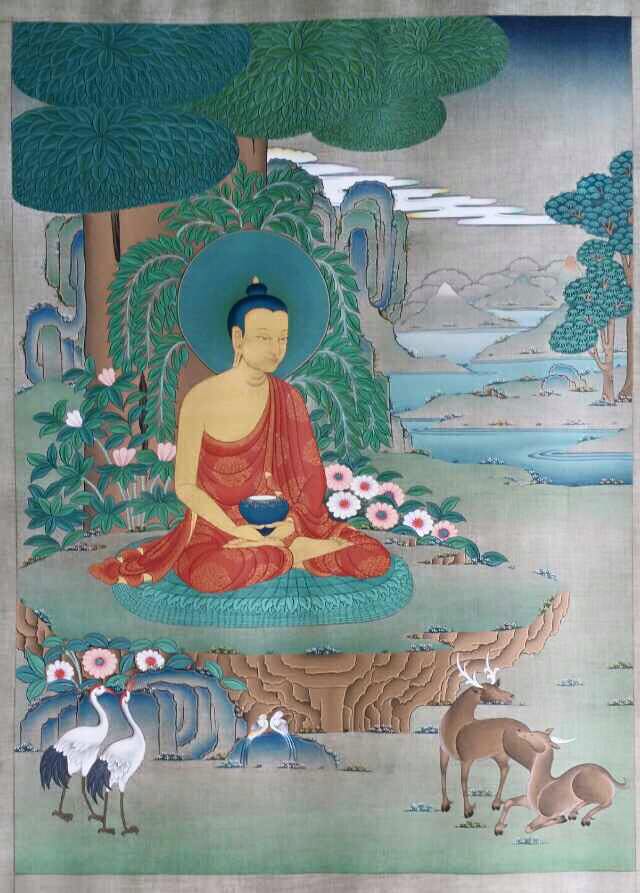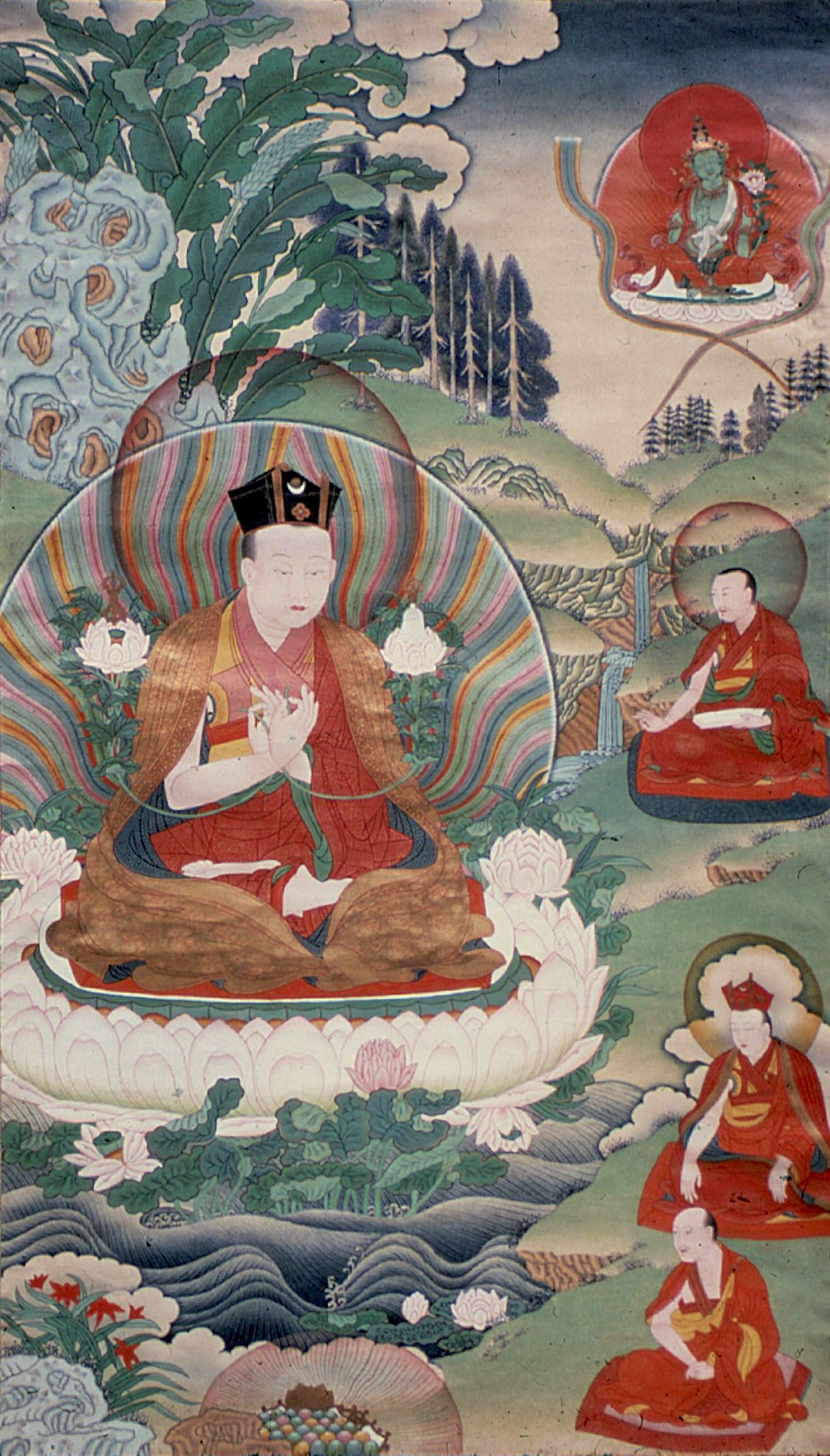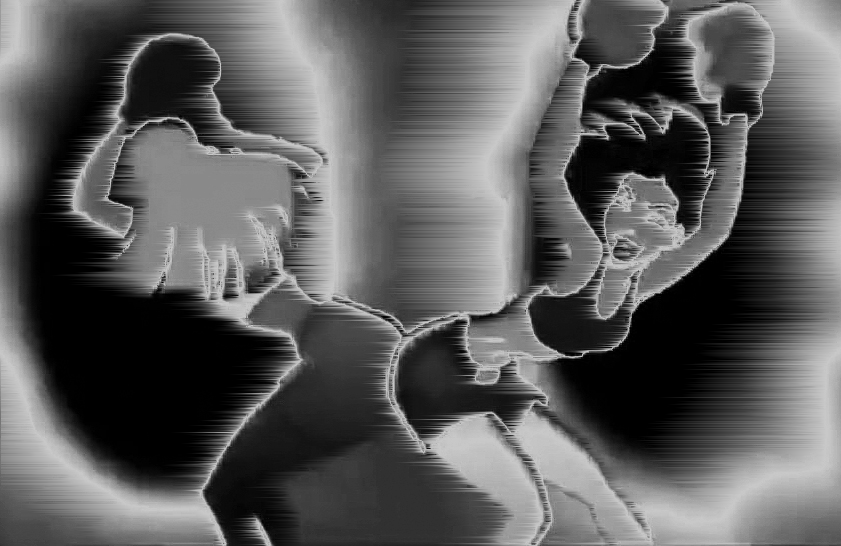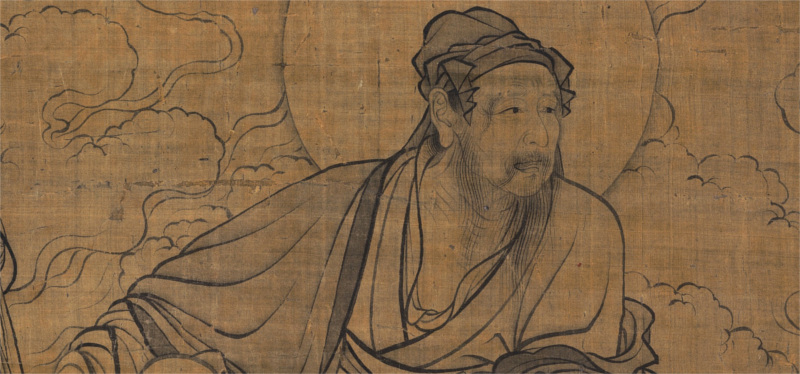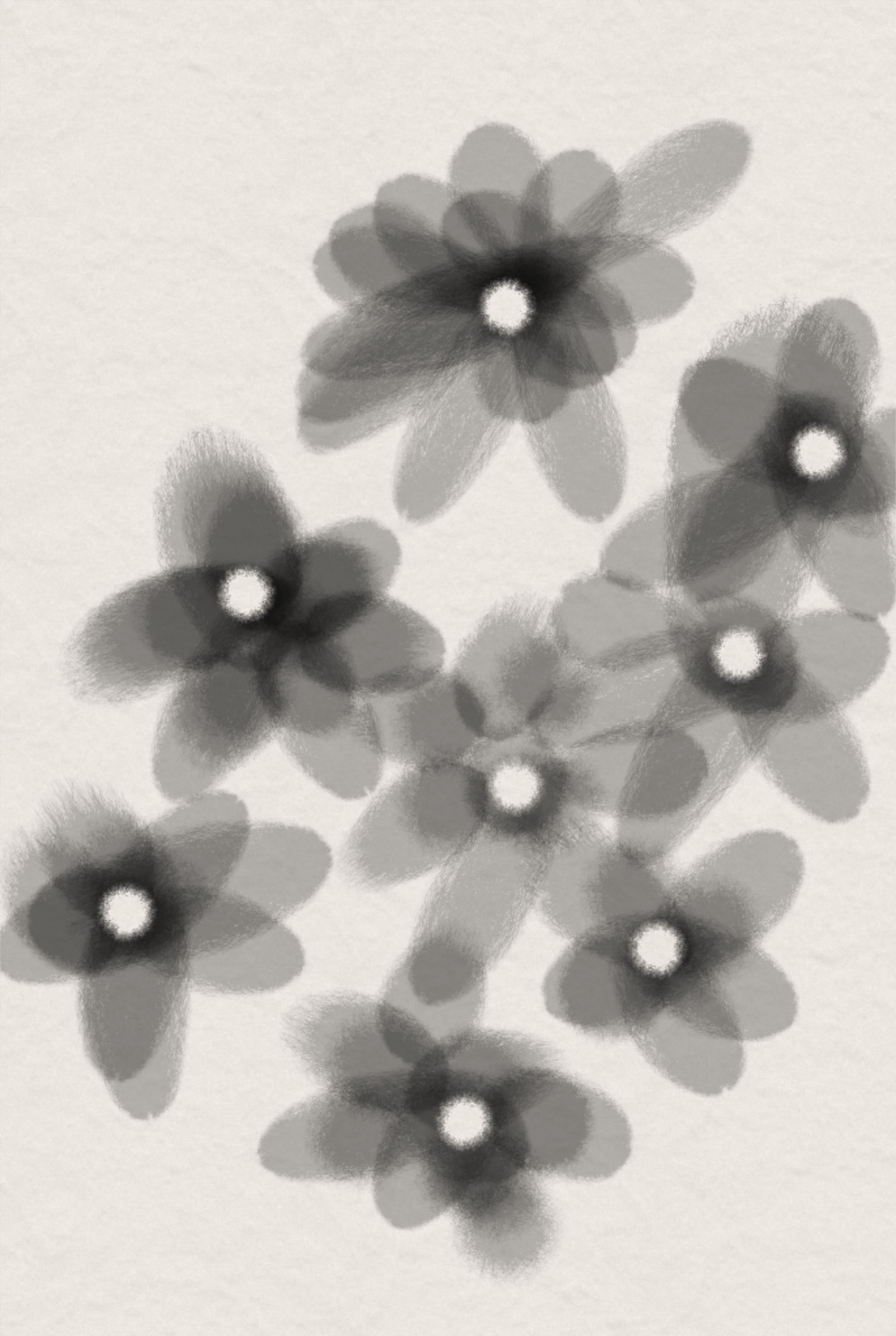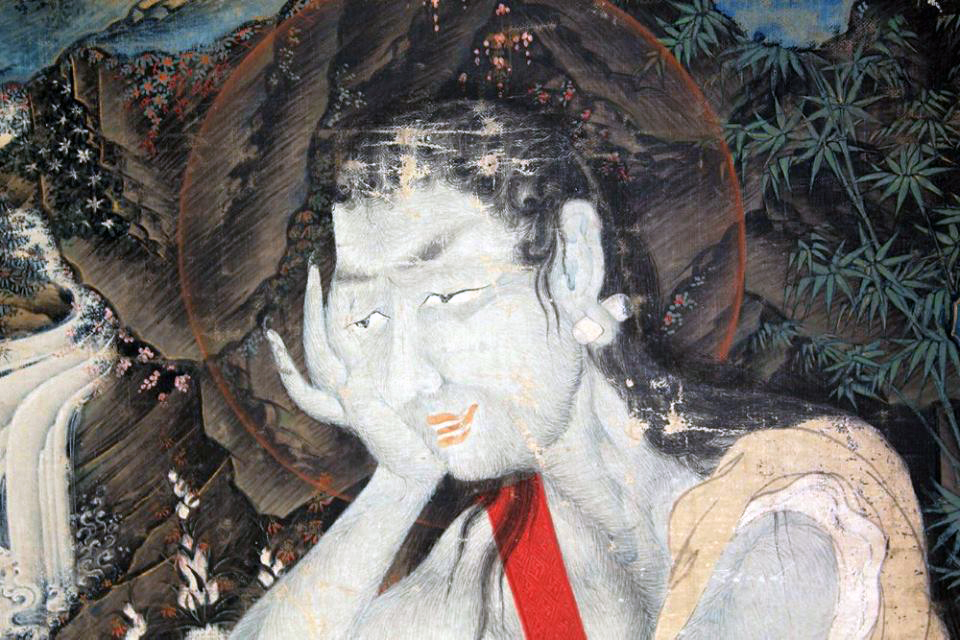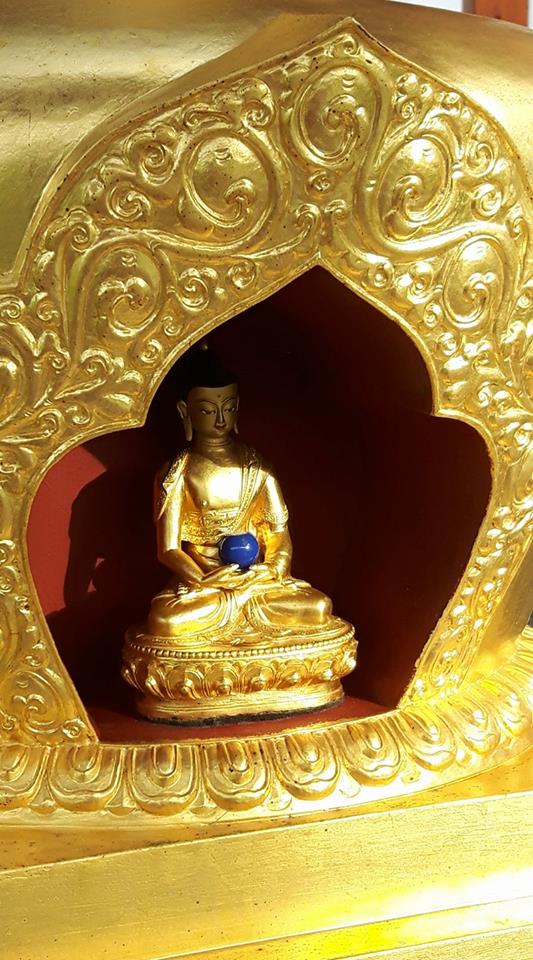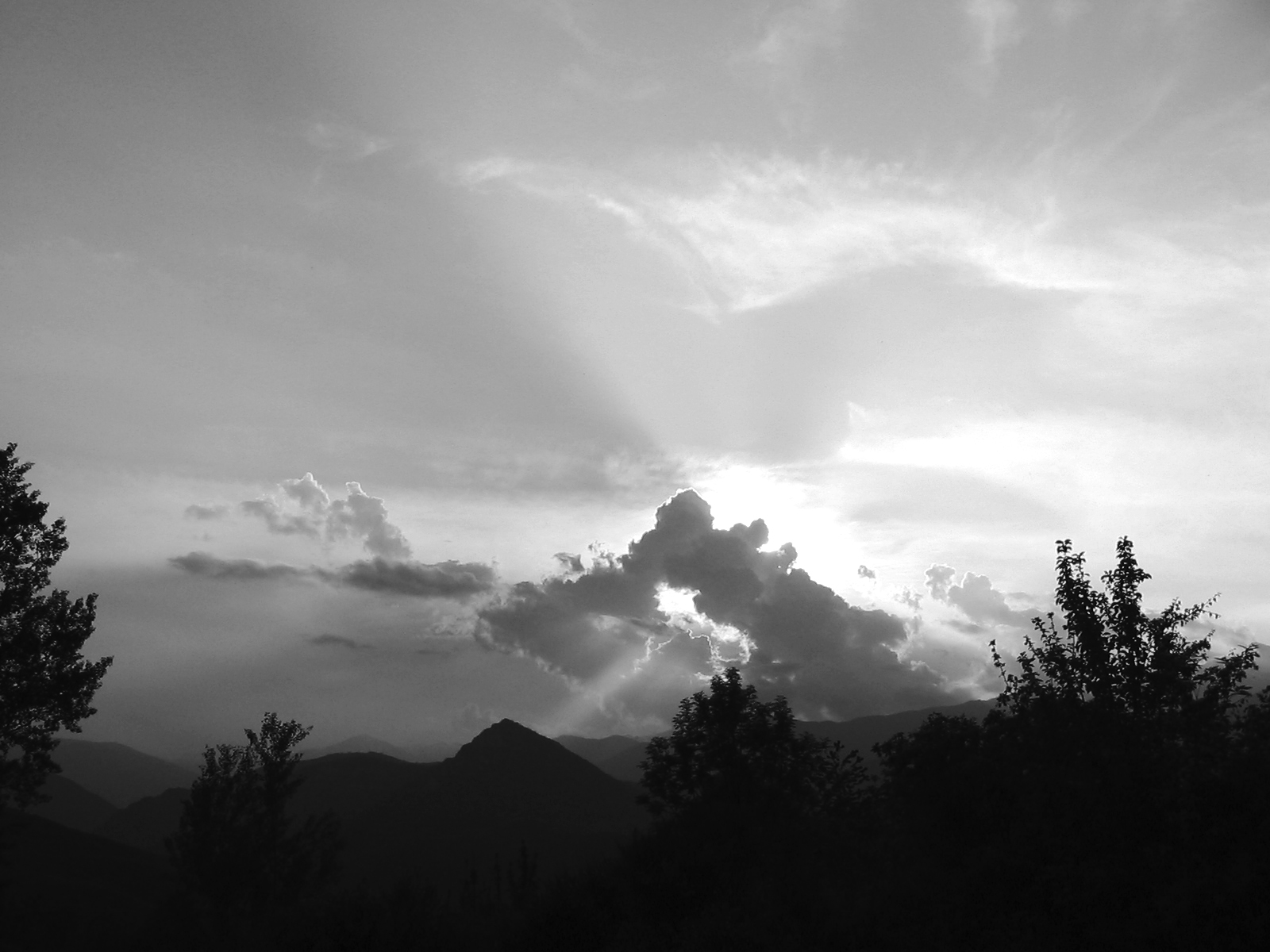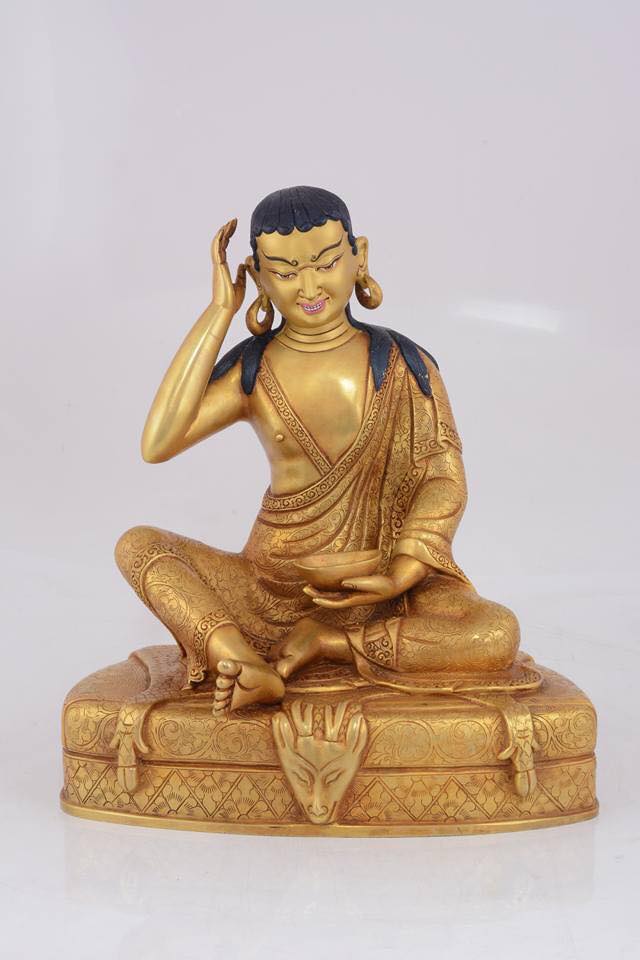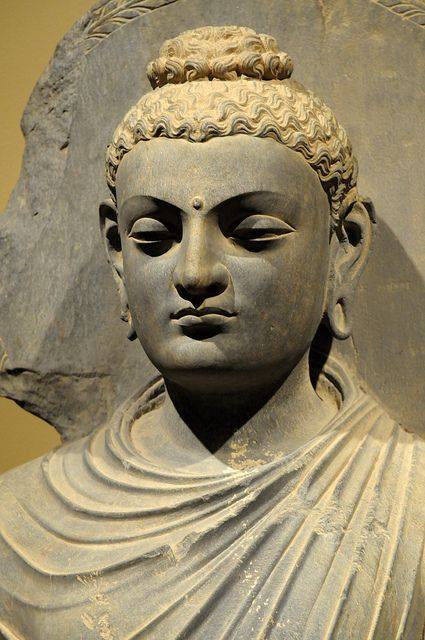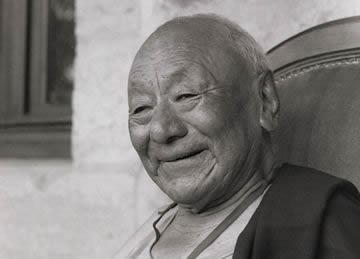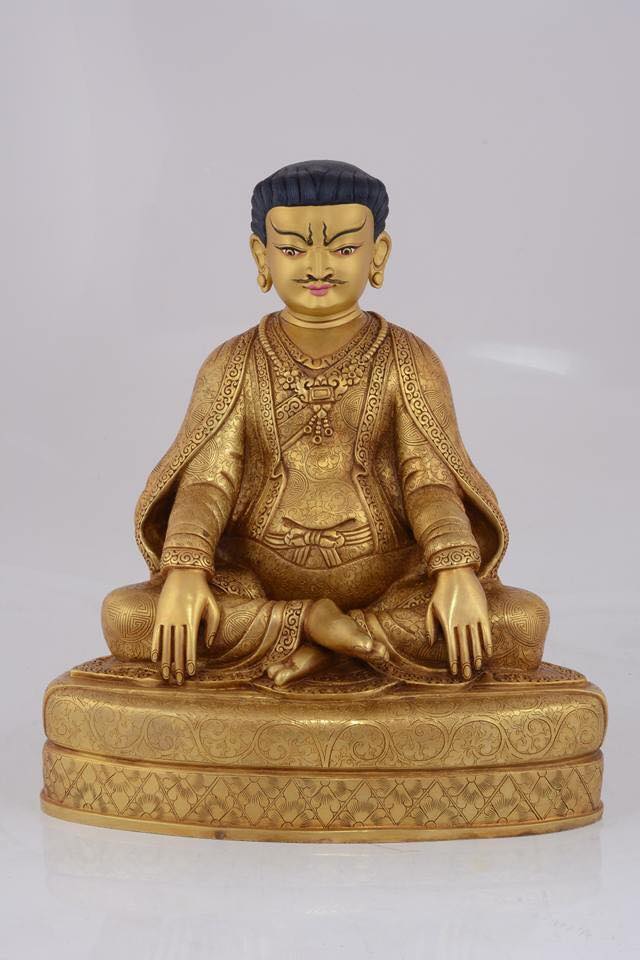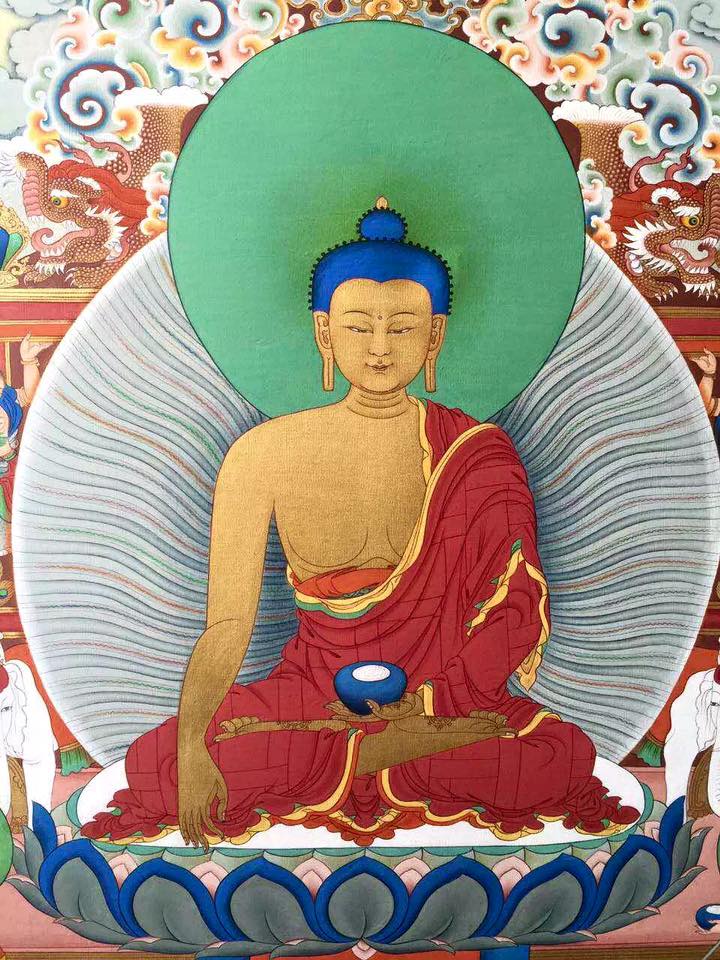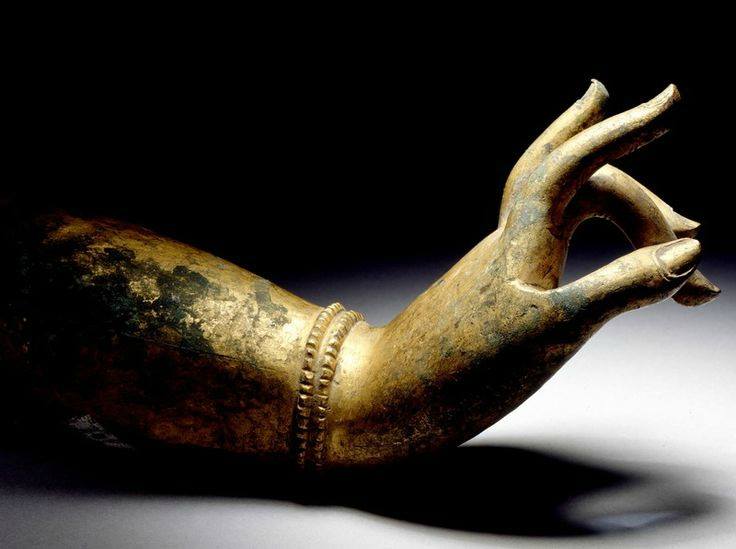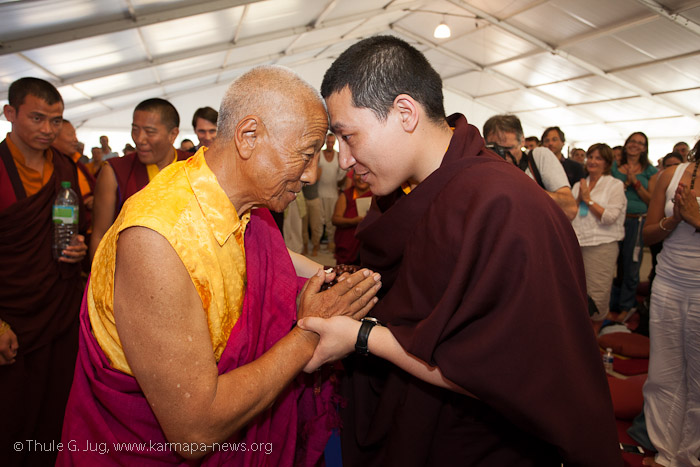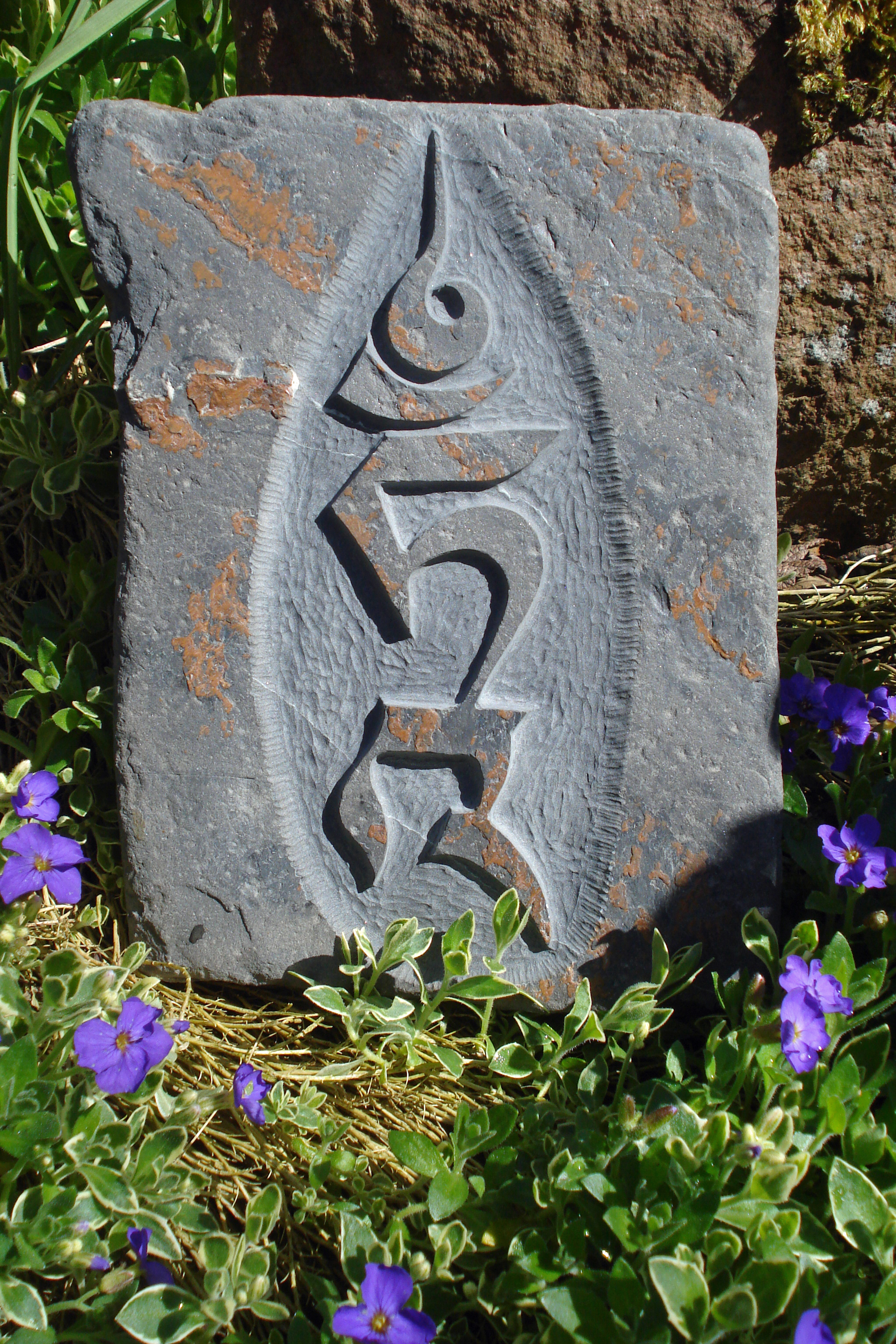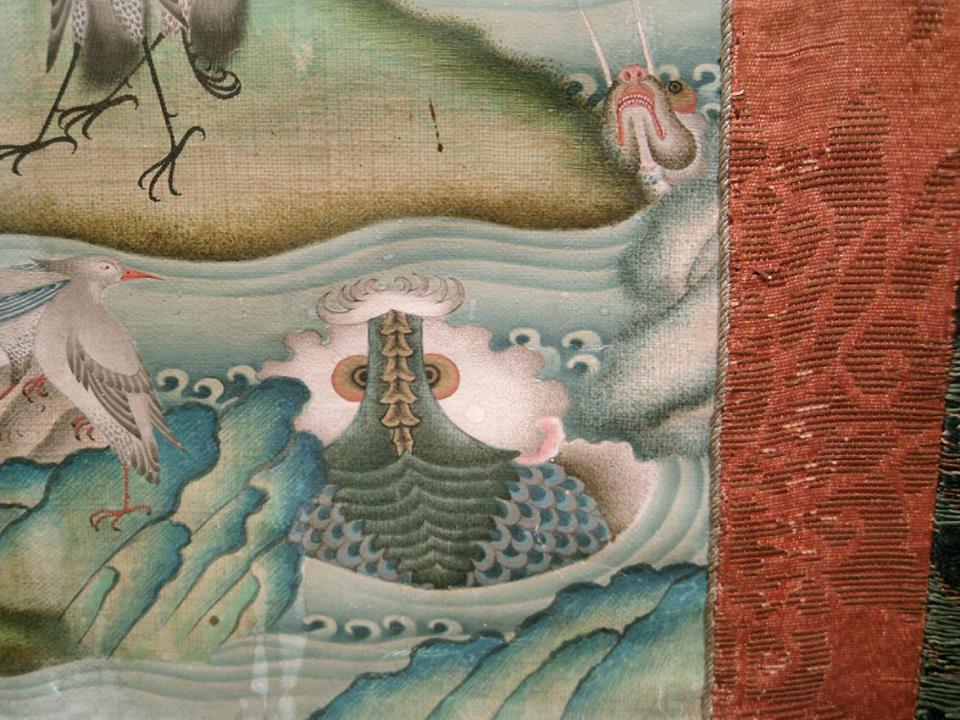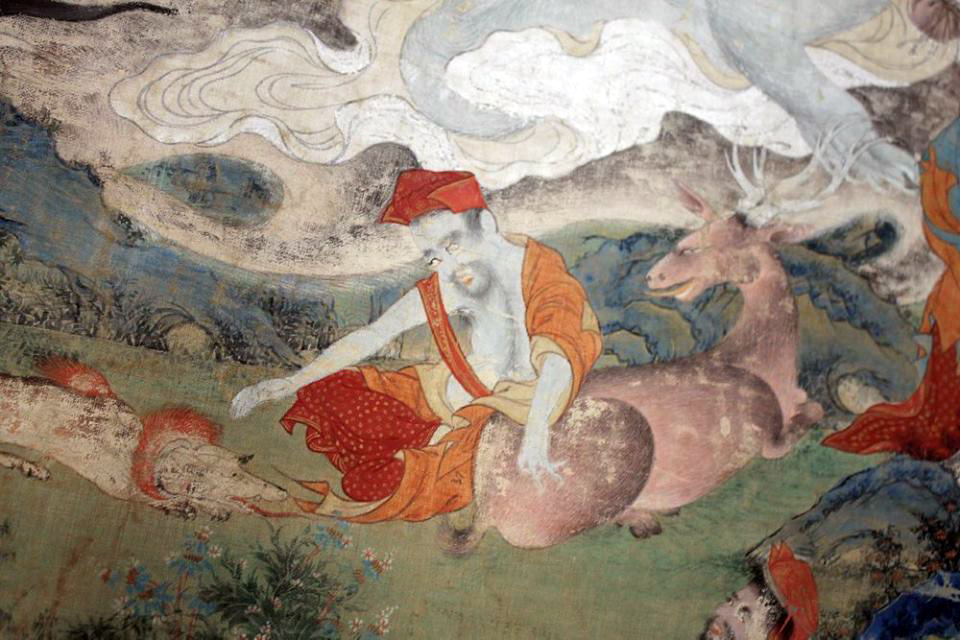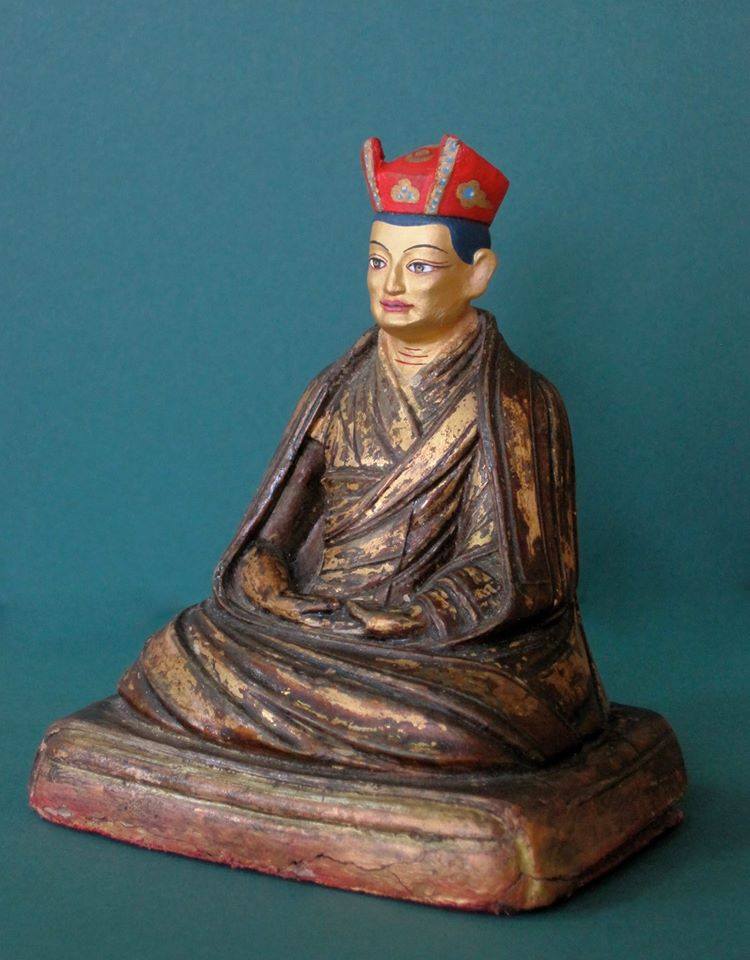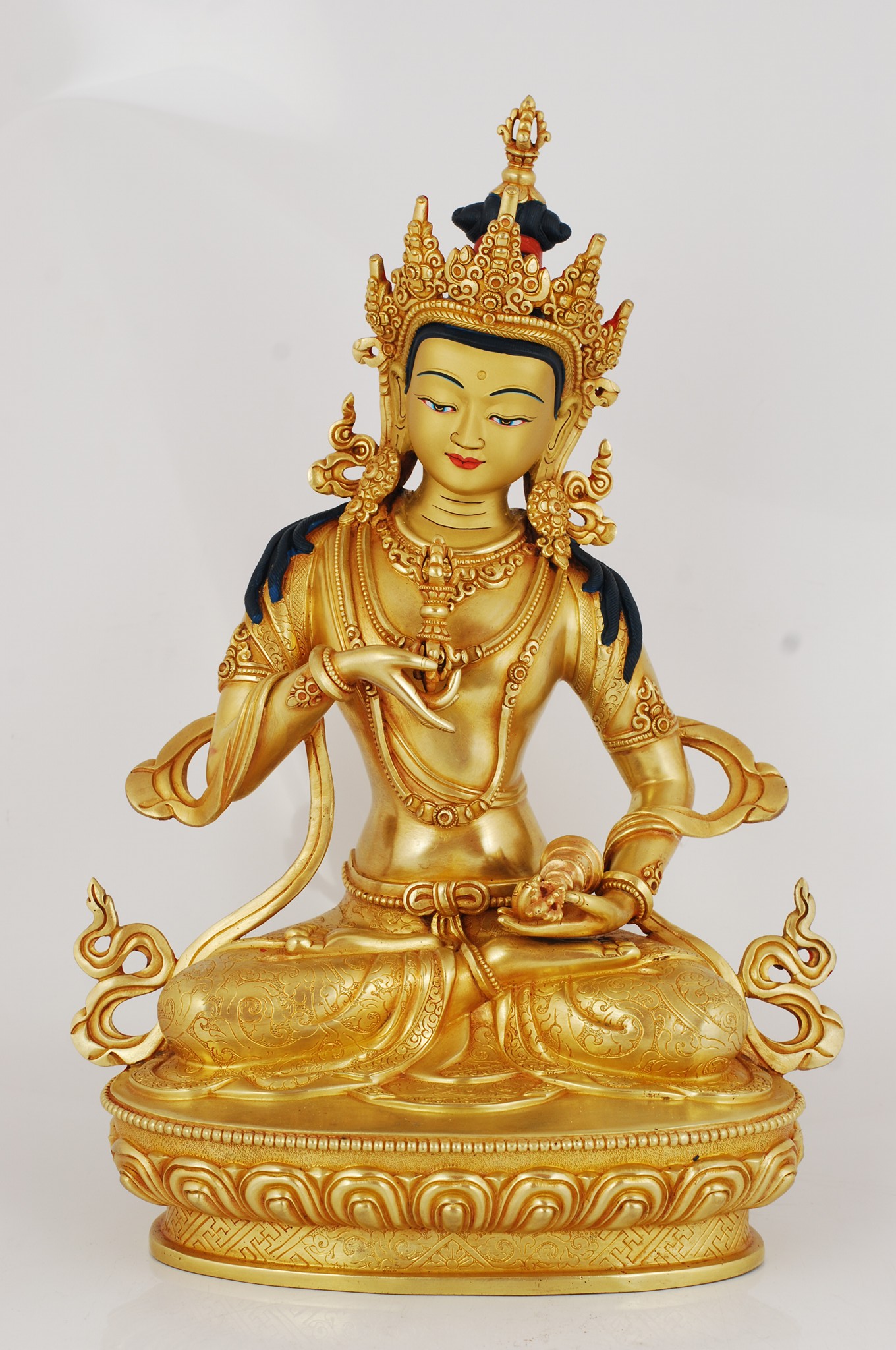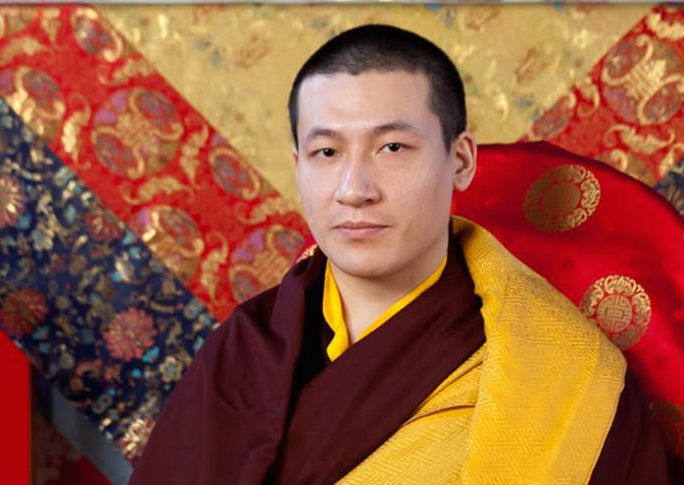What Are Our Foundations?
Serlingpa’s Advice To Atisha
Form and Selflessness
What is meditation?
Bordo Dialogue 2021
Living the dharma – How to foster Bodhicitta in community life
Part 1
June 27th 2021
Part 2
August 8th 2021
Transforming Suffering and Happiness into Enlightenment.

Whenever we are harmed by sentient beings or anything else, if we make a habit out of perceiving only the suffering, then when even the smallest problem comes up, it will cause enormous anguish in our mind.This is because the nature of any perception or idea, be it happiness or sorrow, is to grow stronger and stronger the more we become accustomed to it. So as the strength of this pattern gradually builds up, before long we’ll find that just about everything we perceive becomes a cause for actually attracting unhappiness towards us, and happiness will never get a chance.
Amitabha and the Pure Land of Sukhavati
Pure Land of Sukhavati
Introduction
Generally, it can be said that there are many pure lands, many paradises of Enlightened Beings we call Buddhas. The Pure land of Great Bliss of the Buddha of Boundless Light, Amitabha, is quite a unique place. There are pure lands in the four directions, East, South, West, North, and in the center. Among them, the pure land of Amitabha is the easiest to get to and therefore quite special. By formulating a special aspiration to be reborn in the pure land of Great bliss, one can accomplish the transference of one’s consciousness to that pure land. The power of prayer, the power of devoted and fervent aspiration, is all that is necessary.
It is said that the pure land of Amitabha Buddha, in relation to our universe, is in the western direction and above our universe. For now, we do not have the ability to perceive it or to go there, because we have not accumulated the necessary karma to be born in such a place, even if that realm exists somewhere, in some manner. We imagine it a bit like the moon, but we do not have yet the opportunity to see it or to be born there.
Dewachen is a manifestation of Buddha Amitabha’s activity. This Buddha has completed the ten perfections, and thanks to the merit thus accumulated, he was able to create the realm of Dewachen for the benefit of all beings. Buddha Amitabha was initially an ordinary being who generated Bodhicitta and developed a lot of efforts to achieve Buddhahood. To do this, he practiced the ten paramitas and led them to complete perfection. He also formulated many wishes and aspiration prayers to create this pure land where beings could be reborn easily.
With the completion of paramitas and his aspiration prayers, Amitabha managed to manifest this pure land, the result of a merit accumulated for a long time, expression of very meritorious actions performed in the past. In fact, Buddha Amitabha did not practice in order to attain enlightenment. He followed another approach. At one time, he was a disciple of a Buddha who gave him specific instruction, and explained to him how a great bodhisattva can manifest a pure land beneficial to all beings. Buddha Amitabha, as a disciple, learned all that he needed to do to reach this goal and manifest a pure land able to help the beings trapped in their delusion and enduring suffering due to karma.
Amitabha & Sukhavati. #1 Exposé
Amitabha & Sukhavati. #2 Dialogue
Short Sukhavati Prayer :
É Ma Ho! Amazing!
Amitabha, the Buddha of Infinite Light, with Chenrezig, the Great Compassionate Lord, to his right and Vajrapani, the Bodhisattva of Great Powers, to his left, all surrounded by innumerable Buddhas and Bodhisattvas!
As soon as I have left this existence behind,without the interval of another life, may I take birth in that wondrous Pure Land, the Realm of Joy,the place of everlasting happiness called Dewachen,and may I directly perceive the Buddha of Infinite Light.
O all you Buddhas and Bodhisattvas of the ten directions, please grant your blessings so that the wishes which I have just expressed may be accomplished without any obstacles.
Tayatha Pentsadriya Awa Bodhanayé Soha.
The Wishing Prayer to be reborn in Dewachen (Sukhavati)
Karmapa Thaye Dorje Chants the Sukhavati Prayer
Kunzig Shamar Rinpoche: The world of Dewachen
The Boundless Creativity of Change
Appreciating the Whole Cycle of Impermanence.
We usually appreciate only half of the cycle of impermanence. We can accept birth but not death; accept gain but not loss.
True liberation comes from appreciating the whole cycle and not grasping onto those things that we find agreeable. By remembering the changeability and impermanence of causes and conditions, both positive and negative, we can use them to our advantage. Wealth, health, peace, and fame are just as temporary as their opposites.
If you cannot accept that all compounded or fabricated things are impermanent. If you believe that there is some essential substance or concept that are permanent, you are swimming against the stream of reality.
Consider the example of generosity. When we see everything as transitory and without value, we don’t necessarily have to give it all away, but we have no clinging to it. When we see that our possessions are all impermanent compounded phenomena, that we cannot cling to them forever, generosity is already practically accomplished.
Méditation Guidée vers la Claire Lumière du Sommeil
Au moment de l’endormissement l’esprit peut s’établir dans la claire lumière de l’état naturel et purifier les voiles de l’ignorance pendant notre sommeil.
Ce processus étant proche de celui du moment de la mort, il constitue un excellent entrainement.
Lama Tsony
Dialogues sur le Chemin
Série de dialogues sur des thèmes variés chemin faisant.
#1 2020. Les dix points sur lesquels il est bon d’insister de Gampopa
Notre chemin spirituel vers l’éveil ne se fait pas en parallèle de notre vie. L’entraînement de l’esprit nous apprend à « amener la vie à la voie ». Parmi la multitude des instructions, il est bon de trouver la « ligne claire » qui nous permet, par sa simplicité, de trouver la profondeur. Voici, extrait du Précieux rosaire de la voie sublime de Gampopa, dix points sur lesquels il nous faudra insister à mesure que nous progressons.
1. Au début il est nécessaire de mettre l’accent sur l’écoute des enseignements et la réflexion sur leur sens.
2. Quand l’expérience se fait jour, il faut insister sur la pratique de la méditation.
3. Tant que ces expériences ne sont pas stables, il faut privilégier la solitude.
4. Si la dispersion et l’agitation dominent en nous, il faut insister sur les moyens de discipliner la conscience.
5. Si la torpeur et l’opacité mentale dominent en nous, il faut insister sur les moyens d’éclaircir la conscience.
6. Tant que l’esprit n’est pas stable, il faut insister sur l’absorption méditative.
7. S’étant livré à l’absorption méditative, il faut persévérer dans la phase de post méditation.
8. Quand on rencontre de nombreuses circonstances défavorables, il faut mettre l’accent sur la pratique des trois formes de patience.
9. Quand l’attachement et le désir sont très forts, il faut insister sur la pratique du détachement de façon radicale.
10. Si l’amour et la compassion sont très faibles, il faut insister sur l’entraînement de l’esprit d’éveil.
Telles sont les dix points sur lesquels il est bon d’insister.
#2 2021. Un vernis de confusion sur un océan de sagesse
Ayant perdu de vue la Nature de Bouddha qui est la profondeur de la réalité de notre esprit, nous nageons parmi les détritus de nos habitudes et schémas émotionnels. Prenant conscience de la bonne nouvelle de la Nature Bouddha, nous pouvons changer notre perspective et nous enraciner dans la confiance de notre santé fondamentale pour faire face aux défis de la vie avec grâce et discernement. Comme un cygne doré en des eaux tumultueuses.
Un vernis de confusion sur un océan de sagesse #1 Exposé
Un vernis de confusion sur un océan de sagesse #2 Dialogue
#3 Se concentrer sur sa pratique et rester fidèle à soi-même.
Le film rendant hommage à Kunzig Shamar Rinpoché se termine par ces quelques mots du Gyalwa Karmapa Thaye Dorje:
“L’enseignement de l’impermanence est la leçon que tous les êtres, même le Bouddha lui-même, doivent mourir. Je voudrais vous assurer qu’en vous concentrant sur votre pratique, en restant fidèle à vous-même, cela aura un grand, grand avantage. Nous serons tous connectés d’une manière qui transcende les limites de l’espace et du temps. “
Qu’entend-on par rester fidèle à soi même?
Comment se libérer de ce qui nous enferre?
Désir et renonciation ?
Comment vivre les contradictions entre les lois ordinaires, et loi du karma
Se concentrer sur sa pratique et rester fidèle à soi-même #1 Exposé
Se concentrer sur sa pratique.Rester fidèle à soi même. #1 Exposé. Transcription par Bernadette Baijard.Download
Se concentrer sur sa pratique et rester fidèle à soi-même #2 Dialogue
#4 Les moyens d’existence justes
Les Moyens d’existence justes visent à garantir que l’on gagne sa vie d’une manière juste. Pour un disciple laïc, le Bouddha enseigne que la richesse doit être acquise selon certaines normes. Il ne faut l’acquérir que par des moyens légaux ; il faut l’acquérir pacifiquement, sans contrainte ni violence ; il faut l’acquérir honnêtement, pas par la ruse ou la tromperie ; et il faut l’acquérir de manière à ne pas causer de mal et de souffrance à d’autres.
Une vie saine, comme un jardin, nécessite une attention constante. La gratitude et la bienveillance découlent de la compréhension de l’interdépendance de tout. Cela donnera naissance à l’attitude d’esprit éveillée (Skt.Bodhicitta). La présence et la conscience seront nos précieux outils. La culture d’une activité vertueuse et d’un style de vie sain deviendra une évidence. L’herbe des habitudes qui nourrissent l’ego devra être régulièrement déracinée. Quel plaisir, alors, de partager la récolte abondante avec tous les êtres!
Les moyens d’existence justes #1 Exposé
Les moyens d’existence justes #2 Dialogue
Les Quatre Sceaux du Dharma #5
Au-delà de la fascination et du rejet. Un chemin vers la paix transcendant les extrêmes
Nous sommes souvent pris entre la fascination pour les merveilles de la création et le désir de libération. Ils constituent un paradoxe qui conduit à des dissonances cognitives et à des sentiments contradictoires.
Comment résoudre cela afin de trouver une voie menant au-delà de ces extrêmes, contribuant ainsi à notre bien et à celui de tous, en particulier dans notre proche entourage de nos proches comme par exemple nos enfants?
Comment leur montrer la voie en devenant un modèle inspirant?
Les Quatre Sceaux du Dharma sont un moyen d’explorer cela.
ཆོས་ རྟགས་ ཀྱི་ ཕྱག་ རྒྱ་ བཞི་
༈ འདུ་ བྱེད་ ཐམས་ཅད་ མི་ རྟག་ ཅིང༌ །
ཟག་ བཅས་ ཐམས་ཅད་ སྡུག་བསྔལ་ བ །
ཆོས་ རྣམས་ སྟོང་ ཞིང་ བདག་ མེད་ པ །
མྱ་ངན་ ལས་ འདས་ པ་ ཞི་ བའོ ། །
Toutes les choses composées sont impermanentes.
Tous les contacts contaminés sont douloureux.
Le mot tibétain pour les contacts contaminés dans ce contexte est zagche, qui signifie «contaminé» ou «taché», dans le sens d’être imprégné de confusion ou de dualité. L’esprit dualiste englobe presque toutes les pensées que nous avons. Pourquoi est-ce douloureux? Parce que c’est une erreur. Tout esprit dualiste est un esprit erroné, un esprit qui ne comprend pas la nature des choses. Chaque fois qu’il y a un esprit dualiste, il y a de l’espoir et de la peur. L’espoir est une douleur parfaite et systématisée. Nous avons tendance à penser que l’espoir n’est pas douloureux, mais en fait c’est une grande douleur. Quant à la douleur de la peur, ce n’est pas quelque chose qui a besoin de démonstration. Le Bouddha a dit: «Comprenez la souffrance.» Telle est la première Noble Vérité. Beaucoup d’entre nous confondent la douleur avec le plaisir – le plaisir que nous avons maintenant est en fait la cause même de la douleur que nous allons ressentir tôt ou tard. Une autre façon bouddhiste d’expliquer cela est de dire que lorsqu’une grande douleur diminue, nous l’appelons plaisir. C’est ce que nous appelons le bonheur.
Tous les phénomènes sont sans existence intrinsèque.
Le Nirvana est la paix au-delà des extrêmes.
Les Quatres Sceaux du Dharma #1 Exposé
Les Quatres Sceaux du Dharma #2 Dialogue
#6 Le Chemin d’Accumulation
Sur le chemin d’accumulation, les bodhisattvas, ou «héritiers des vainqueurs», génèrent une intention positive et une bodhicitta à la fois en aspiration et en action. Ayant complètement développé cette bodhicitta relative, ils aspirent à la bodhicitta ultime, la sagesse non conceptuelle du chemin de la vue. C’est donc l’étape de la «pratique par aspiration». On l’appelle le chemin de l’accumulation parce que c’est le stade auquel nous faisons un effort particulier pour rassembler l’accumulation de mérite, et aussi parce qu’il marque le début de nombreux éons incalculables de rassemblement des accumulations.
Le chemin de l’accumulation est divisé en étapes inférieures, intermédiaires et supérieures. Au stade inférieur du chemin d’accumulation, il est incertain quand nous atteindrons le chemin de la jonction. Au stade intermédiaire du chemin de l’accumulation, il est certain que nous atteindrons le chemin de la jonction dans la toute prochaine vie. Sur l’étape supérieure du chemin de l’accumulation, il est certain que nous atteindrons le chemin de la jonction au cours de la même vie.
Questions:
Une vie à la fois
Une fois vous avez mentionné, que nous ne devrions pas considérer la mort comme une finalité. C’était un conseil très intéressant. Certains d’entre nous ne peuvent pas faire beaucoup de progrès en une seule vie; parfois je suis tenté d’abandonner un peu.
– Pouvez-vous élaborer sur les objectifs à long et à court terme?
– Quels sont les objectifs réalistes?
– L’aspiration continue, le développement de la stabilité mentale et la génération d’une bienveillance ouverte et accueillante proviennent de vos enseignements comme de bons objectifs.
– Qu’est-ce qui manque, ou le contraire?
– Que faut-il abandonner?
Le Chemin d’accumulation #1 Exposé
Le Chemin d’accumulation #2 Dialogue
#7 Transformer souffrance et bonheur en Éveil
par Dodrupchen Jigmé Tenpé Nyima
Hommage
Je rends hommage au noble Avalokiteśvara, en me rappelant ses qualités :Toujours réjoui du bonheur des autres,Et suprêmement affligé quand ils souffrent,Vous avez pleinement réalisé la « Grande compassion » et toutes ses qualités,Et demeurez, sans le moindre souci pour votre bonheur ou votre souffrance !
Déclaration d’intention
Je vais donner ici par écrit une instruction partielle sur la manière d’utiliser le bonheur et la souffrance comme chemin vers l’Éveil. C’est indispensable pour mener une vie spirituelle, un outil très nécessaire aux êtres nobles, et il n’est pas d’enseignement plus précieux au monde.Il y a deux parties :1) comment utiliser la souffrance comme chemin2) et comment utiliser le bonheur comme chemin.Chacune de ces pratiques est envisagée d’abord sur le plan de la vérité relative, puissur le plan de la vérité absolue.
Transformer souffrance et bonheur en Éveil #1 exposé
Transformer souffrance et bonheur en Éveil #2 Dialogue
#8 Patience et Equanimité
La troisième paramita nous entraîne à être stables et à cœur ouvert face aux personnes et aux circonstances difficiles. La patience implique de cultiver le courage, la pleine conscience et la tolérance. En général, lorsque nous sentons que les autres nous blessent ou nous dérangent, nous réagissons avec diverses formes de colère et d’irritation, cherchant instantanément à riposter. Quand il s’agit de la paramita de la patience, cependant, nous restons aussi inébranlables qu’une montagne, ne cherchant ni à se venger ni à nourrir de profond ressentiment dans nos cœurs. La patience tolérante est un antidote très puissant à la colère.
Les trois catégories de patience sont (A) la patience avec les ennemis, (B) la patience avec les difficultés sur le chemin et (C) la patience avec les hauts et les bas de la vie.
Patience et équanimité #1 Exposé
Patience et équanimité #2 Dialogue
#9 Comment Transformer notre Vision Dualiste par la Prise de Conscience de l’Impermanence.
Comment la reconnaissance de l’éphémère dans la vie quotidienne peut-elle conduire à la réalisation de l’interdépendance et de l’unité de la forme et du vide?
Comment, à l’aide exemples, rechercher des preuves d’impermanence tout au long de notre expérience quotidienne pour contrecarrer notre tendance à solidifier, séparer et figer les objets de notre perception?
Les Douze Exemples d’Illusion:
La magie
La Lune dans l’eau
Une distorsion visuelle
Un mirage
Un rêve
Un écho
La cité des Gandharvas
Une illusion d’optique
Arcs en ciel
Éclair
Bulles d’eau
Reflet dans un miroir
Impermanence et Illusion #1 Exposé
Impermanence et Illusion #2 Dialogue
#10. Le Grand Yoga.Lojong 5:22
VOUS ÊTES BIEN ENTRAÎNÉ SI VOUS POUVEZ MÊME RÉSISTER À LA DISTRACTION.
Lojong 5:22
Au moment d’une pensée négative ou d’une perturbation, si vous pouvez garder votre sang-froid et appliquer naturellement les méthodes pour le maîtriser sans ressentir aucune tension, cela signifie que vous êtes bien entraîné. La correction est assez automatique du fait de votre maîtrise de la pratique. Même au milieu d’un bouleversement, vous pouvez rester calme et continuer à utiliser les conditions immédiates pour vous entraîner. Comme un cavalier expert, vous ne tomberez pas de cheval même si vous êtes distrait.
Être stable dans votre pratique ne signifie pas que vous n’avez plus de saisie du soi. Cela signifie plutôt que lorsqu’il fait surface, il est immédiatement corrigé. Naropa dit un jour à Marpa :
« Ta pratique a atteint un tel niveau que, comme un serpent enroulé, tu es capable de te libérer en un instant. »
Il sera évident que vous avez accompli votre pratique lorsque les cinq grandes qualités de l’esprit apparaîtront :
Bodhicitta : Le premier grand esprit est la bodhicitta. L’effet d’un esprit de bodhicitta dominant et omniprésent est un sentiment complet de satisfaction. Pendant que vous continuez à vous entraîner, votre contentement est si fort que vous n’avez aucun désir d’autre chose.
Excellente maitrise : votre esprit est tellement discipliné que vous remarquez la moindre erreur qui crée une cause négative et la corrigez immédiatement.
Grande patience : Vous avez une énorme patience pour maîtriser vos émotions négatives et vos souillures. Vous n’avez aucune réserve lorsqu’il s’agit de gérer un état d’esprit négatif. En d’autres termes, vous continuez à entraîner votre esprit quoi qu’il arrive.
Grand mérite : lorsque tout ce que vous faites, dites ou pensez vient d’une seule intention – accomplir le bien des autres – alors vous ne faites qu’un avec la pratique du dharma. Simultanément, alors que vous accomplissez votre pratique et vos affaires quotidiennes, le mérite s’accumule continuellement. Cela, à son tour, soutient directement vos activités positives générant toujours plus de mérite. De cette façon, un grand mérite se multiplie automatiquement.
Grand yoga : Le grand yoga (pratique) est la bodhicitta ultime. C’est l’esprit vaste et profond de la sagesse qui expose la nature de la réalité. Posséder et maintenir cette vue parfaite est donc la pratique du dharma par excellence. Grâce à l’entraînement mental, vous atteindrez ces cinq grandes qualités de l’esprit. Vous devez vous entraîner sérieusement pour les développer, car ils ne se produiront pas par des vœux pieux.
Le yoga est un mot complexe avec de nombreuses significations. Dans ce contexte, il convient d’examiner comment le terme est utilisé en tibétain. Le mot tibétain pour le yoga est « Neldjor » (rnal ‘byor). “Nel” est la nature originelle éveillée de l’esprit, le dharmakaya ou la nature de vérité. « Djor » est un verbe qui signifie obtenir ou atteindre. « Neldjor » signifie donc atteindre la nature originelle de l’esprit.
L’apparition des cinq grands esprits prouvera que l’essence de la pratique du bodhisattva est devenue votre nature. Vous ne vous engagerez dans aucune négativité, aussi petite soit-elle. Vous êtes en contrôle et ne pouvez pas être influencé par des émotions négatives. Pour vous, tous les remèdes entrent en action de manière assez automatique même lorsque vous n’y prêtez pas trop d’attention. Pendant que les remèdes sont appliqués, vous restez calme et équilibré. La plupart de votre temps est naturellement consacré à travailler aux autres ou à votre éveil (qui est aussi, en effet, pour les êtres sensibles).
Un point très important est celui-ci : la vraie compassion n’est pas émotionnelle. Les pratiquants mûrs ont une vision claire fondée sur la bodhicitta ultime. Ils connaissent déjà la nature de la souffrance elle-même. Leur compassion est influencée par la sagesse, il n’y a donc aucune tristesse ou émotion impliquée. Sans entrave et libre d’émotions, les bodhisattvas aident les autres de manière sensée et appropriée.
Six Vers du Gourou Yoga
Gyalwa Karmapa IX
“Précieux maître, je vous adresse ma prière.
Accordez votre bénédiction afin que mon esprit abandonne sa saisie d’un soi.
Accordez votre bénédiction afin que je n’éprouve pas de besoin (attachement).
Accordez votre bénédiction afin que cessent les pensées qui ne participent pas du Dharma.
Accordez votre bénédiction afin que soit réalisée la nature non-née de l’esprit.
Accordez votre bénédiction afin que l’illusion se dissipe d’elle-même.
Accordez votre bénédiction afin que la manifestation soit actualisée comme le corps de la réalité.”
Le Grand Yoga. #1 Exposé
Le Grand Yoga. #2 Dialogue
Prières mentionnées durant notre dialogue.© https://thouktchenling.net/
2022 #1 Vaincre les Klesha
Trois angles d’approche du sujet
1/Par la détermination à préserver les voeux d’éthique
Premièrement : Évaluez la réalité de la souffrance et abandonnez l’effort constant de la nier en une quête sans fin de l’objet idéal.
“La vie oscille comme un pendule d’avant en arrière entre la douleur et l’ennui.”
Selon Schopenhauer, la souffrance est le fond de l’existence humaine : c’est souffrance d’exister provient du fait que l’homme, cette machine à désirer, est sans cesse déçu de ses satisfactions. Dès qu’un désir est satisfait, il vient d’autres désirs, qu’il faudra bien accomplir. C’est la Volonté de vivre, l’instinct autrement dit, qui nous fait désirer. Mais dès que l’on tue en nous le désir, c’est l’ennui qui pointe, le vide du coeur. Ainsi, l’homme est déchiré entre cette double menace, ce qui constitue une source certaine de son malheur.
Deuxièmement : S’appuyer sur les vœux du refuge et de libération individuelle (Pratimoksha) pour défaire les habitudes toxiques tout en nourrissant la spirale vertueuse menant à l’éveil.
2/Par l’amour et la compassion illimités.
Instructions Essentielles sur Tonglen de Khenpo Munsel
“Khenpo Munsel m’a donné de nombreuses instructions orales spéciales sur le tong-len qui n’étaient pas dans le texte. Par tong-len, généralement, nous disons que nous envoyons du bonheur aux autres et prenons en charge la souffrance des autres.
Mais pour le sens réel de tong-len, vous devez comprendre l’inséparabilité de soi et de l’autre. Le fondement de nos esprits est le même. Nous comprenons cela à partir de la vue.
Dans ce contexte, même s’il existe de nombreux types de souffrances différentes, il n’y a qu’une seule chose appelée “souffrance”. Il n’y a qu’une souffrance, enseigna-t-il. S’il n’y a vraiment qu’une seule souffrance, alors à ce moment où vous souffrez vous-même d’une grande souffrance, vous devriez penser : « L’esprit des êtres sensibles des trois royaumes et mon esprit ont le même fondement. » Cependant, l’essence de la souffrance des êtres sensibles des trois royaumes et l’essence de notre propre souffrance est la même.
Si vous les voyez comme étant les mêmes, si vous les voyez comme non duels, puis méditez sur cette souffrance, dans l’état naturel de l’esprit, cette souffrance s’en va.
À ce moment-là, vous avez été en mesure d’atténuer la souffrance de tous les êtres sensibles des trois royaumes, d’un seul coup.
Le “len” de tong-len signifie “prendre”. Tout d’abord, prenez de cette façon. “Tong” signifie “donner”. Si vous comprenez la nature de votre esprit, alors vous reconnaissez l’essence de toutes les émotions de souffrance et d’affliction qu’il peut y avoir dans la vacuité.
Lorsque la souffrance ne vous fait plus de mal, l’esprit jouit d’une grande félicité. Si à ce moment-là, vous méditez, en vous rendant vous-même et les autres inséparables, alors cette béatitude peut diminuer la saisie du soi de tous les êtres sensibles. Cela peut diminuer la saisie de soi.
Le bonheur qui est donné est le celui qui provient de la pratique du don et de la prise en charge.
C’est ainsi que vous devez pratiquer. C’est très spécial. D’autres ne l’expliquent pas de cette façon.”
Garchen Rinpoché
3/Par la profondeur du discernement.
Assimiler les afflictions à la pratique
Extrait de : Shamar Rinpoché. “Au cœur de la sagesse: Manuel de la pratique du mahāmudrā.”
Même s’il est dit qu’il existe 84 000 afflictions, elles sont en fait indénombrables. Elles sont généralement catégorisées en cinq groupes : l’attachement, la colère, l’ignorance, la jalousie et l’orgueil. Quand vous les intégrez à votre pratique en reconnaissant leur véritable nature, l’ensemble des 84 000 afflictions est résolu en un instant. À ce moment, la nature de bouddha se révèle spontanément sous la forme des cinq aspects de sagesse. Il s’agit du résultat significatif de l’assimilation des afflictions à la méditation. La nature fondamentale de l’esprit est sagesse pure. En d’autres termes, les cinq formes de sagesse sont la nature innée de l’esprit, communément appelée la nature de bouddha. Lorsque l’esprit est voilé par l’ignorance, ces qualités pures sont masquées et elles nous apparaissent comme les cinq groupes d’afflictions alors qu’en réalité, elles sont cinq formes de sagesse. Par conséquent, la véritable nature de toutes les afflictions n’est pas différente de la véritable nature de l’esprit. Si nous comprenons que l’esprit et toutes ses afflictions sont intrinsèquement vides et non nés, l’ignorance est éradiquée en un instant.
Les afflictions sont parfois connues comme des poisons alors que la sagesse est décrite comme du nectar. C’est la raison pour laquelle l’instruction au sujet de l’assimilation des afflictions à la méditation est appelée l’instruction sur la transformation du poison en nectar.
La première affliction est l’attachement. Lorsque la nature intrinsèque de l’attachement est reconnue comme vide et non née, elle se révèle comme la sagesse discernante. Cette sagesse connaît toute chose distinctement et telle qu’elle est. Un bouddha sait intuitivement comment et pourquoi les choses sont telles qu’elles sont ; c’est tout ce que l’on peut dire au sujet de la sagesse d’un bouddha. Il est dit que lorsqu’un bouddha regarde la queue d’un paon, il peut expliquer instantanément les causes et les conditions karmiques qui ont provoqué les différentes couleurs de chaque plume.
La seconde affliction est la colère. Lorsque la vraie nature de la colère est reconnue, la colère s’actualise en la sagesse de la vaste étendue, la sagesse du dharmadhātu. Chaque expérience est alors reconnue comme indissociable de la vacuité, la véritable nature de l’esprit. En l’état de vacuité de l’esprit, chaque expérience est une expérience d’espace ; chaque phénomène se manifeste dans l’étendue omnipénétrante et la qualité libératrice de l’éveil.
La troisième affliction est l’ignorance. Lorsque la nature innée de l’ignorance est reconnue comme vide et non née, elle se révèle comme la sagesse semblable au miroir, parfois appelée la sagesse omnisciente. Il n’existe aucune limite à la connaissance dans l’omniscience, ni en terme d’espace ni en terme de temps. Une personne ordinaire ne peut percevoir les choses que de manière séquentielle. Un bouddha, cependant, connaît tout de manière instantanée et simultanée. Tout ce qui apparaît dans son esprit est clair et précis, sans hésitation ni obstruction. Tout phénomène est perçu aussi directement qu’une image dans un miroir. Par ailleurs, les objets solides n’opposent aucune résistance à un individu qui peut ainsi voir à travers un mur et même passer au travers s’il le décide.
La quatrième affliction est l’orgueil ou la saisie égotique. Il s’agit de la discrimination que vous opérez entre vous-mêmes et les autres. Dans une situation particulière, en général vous vous favorisez par rapport aux autres. Dans l’état éveillé, l’orgueil est actualisé en la sagesse non discriminante, aussi appelée sagesse d’égalité. Vous réalisez que toute chose est indissociable dans la vacuité de l’esprit parce que tout est pareillement vide.
La cinquième affliction est la jalousie. En l’état éveillé, la jalousie est révélée comme la sagesse tout accomplissante, la sagesse d’activité. Un bouddha est le mieux placé pour aider tous les êtres sensibles, car il connaît leurs souhaits, leurs capacités et leurs habiletés. Bouddha est ici utilisé dans le sens large du terme et n’est pas confiné à un bouddha historique spécifique.
Les afflictions sont semblables à des poisons tant qu’elles ne sont pas révélées comme sagesse. La technique pour assimiler les afflictions à la pratique est exactement la même que pour l’intégration des pensées à la pratique.
Tout d’abord, prenez conscience de l’apparition d’une affliction et identifiez-la. Ensuite, regardez sa nature. Puis, renoncez à votre attachement au ressenti. Enfin, ne soyez ni inquiets ni optimistes à propos du résultat, mais acceptez toute éventualité avec courage et confiance.
Comportez-vous comme un lion face aux épreuves et aux difficultés. Soyez libres d’attachements comme le vent qui souffle dans le ciel. Comportez-vous comme un fou, sans faux-semblants ni artificialité. Cette même technique s’applique à toutes les afflictions.
Parmi ces cinq afflictions, certaines sont plus faciles à détecter et à identifier que d’autres. La colère, par exemple, est habituellement facile à repérer. La jalousie et l’attachement ne sont pas non plus très dissimulés. Cependant, lorsque vous êtes gonflés d’orgueil ou minés par l’ignorance, vous ne remarquez généralement pas leur présence. Votre mode de pensée égotique est un schéma habituel tellement ancré, que l’éradiquer demande du temps et de la patience. Quand vous êtes ignorants, vous n’êtes souvent pas assez intelligents pour le savoir ! En revanche, dès que vous aurez travaillé avec des afflictions plus apparentes, vous pourrez appréhender, pendant la pratique, celles qui s’avèrent plus dissimulées.
Un méditant très avancé éprouve parfois de grandes difficultés à trouver la façon et le moyen d’approfondir sa pratique et son accomplissement. Ainsi, après avoir réussi à assimiler les afflictions à la méditation en reconnaissant leur véritable nature, il peut continuer en générant délibérément des afflictions encore plus fortes, afin de donner du dynamisme à sa pratique. En faisant cela, le méditant amène sa pratique vers un degré d’accomplissement plus élevé. Son comportement odieux peut être outrageant ; c’est bien compréhensible. En effet, rien ne permet de déterminer qu’il s’agisse d’un méditant avec une motivation pure qui pratique l’actualisation des afflictions en degrés de réalisation. Marpa était un bon exemple de pratiquant engagé dans cette forme de pratique. En plus d’être un éminent enseignant et traducteur, il était aussi propriétaire foncier. Les personnes qui interagissaient avec lui à un niveau concret le considéraient comme un individu très désagréable, fier et orgueilleux, avec une insatiable cupidité. Cependant, le grand mahasiddha érudit Naropa (1016–1100) lui dit un jour :
Les autres vous considèrent comme ayant de très fortes afflictions. Cependant, dans votre esprit, une affliction est comme un serpent que l’on aurait noué. Il se dégage en moins de temps qu’il ne faut pour faire le nœud.
Certains lamas au Tibet étaient connus pour se comporter comme Marpa, dans l’espoir d’induire les gens à penser qu’ils avaient atteint des niveaux exaltés où les fortes négativités de l’esprit constituaient du carburant pour leur pratique. Ils s’adonnaient gratuitement à une vie de débauche. Cependant, sans l’accomplissement de Marpa, ces comportements étaient uniquement nuisibles. Sans aucune utilité pour la pratique, ils ne devaient en aucun cas être considérés comme une indication de grand accomplissement. Leur comportement était peut-être semblable à celui de Marpa, mais ils étaient loin d’être aussi réalisés que lui.
Première Partie: Par la détermination à préserver les voeux d’éthique
#1 Exposé
#2 Dialogue
Seconde Partie: Par l’amour et la compassion illimités.
#1 Exposé
#2 Dialogue
Troisième Partie: Par la profondeur du discernement.
#1 Exposé
#2 Dialogue
2022 #4 L’accompagnement sur le Chemin Spirituel
Quelle est la place de la tradition et des ami(e)s spirituel(le)s dans notre monde actuel?
Un jour, Ananda et le Bouddha étaient assis seuls sur une colline, surplombant les plaines du Gange. Ayant servi comme serviteur du Bouddha pendant de nombreuses années, Ananda partageait souvent ses réflexions et ses idées avec lui. Cet après-midi, Ananda a pris la parole. “Cher Maître Respecté,” dit Ananda. « Il me semble que la moitié de la vie spirituelle est une bonne amitié, une bonne compagnie, une bonne camaraderie. » Mais le Bouddha le corrigea rapidement : « Non pas, Ananda ! Ce n’est pas le cas, Ananda ! » Il poursuivit : « C’est toute la vie spirituelle, Ananda, c’est-à-dire une bonne amitié, une bonne compagnie, une bonne camaraderie. Quand un moine a un bon ami, un bon compagnon, un bon camarade, il faut s’attendre à ce qu’il développe et cultive la noble voie octuple. » Le Bouddha a habilement corrigé l’idée d’Ananda selon laquelle la sangha et le dharma sont séparés. L’un n’est pas la moitié de l’autre ; la sangha n’est pas simplement utile pour réaliser le chemin. La sangha est le chemin. L’amitié spirituelle est le chemin.
Kalyana Mitra
En sanskrit, Kalyana Mitra signifie « ami spirituel ». Kalyana peut être traduit par « bon, vrai, vertueux, droit ou bénéfique », et Mitra est la racine du mot maitri, qui signifie gentillesse. Un Kalyana Mitra est quelqu’un qui vous aide à réaliser vos aspirations profondes, quelqu’un qui élève votre chemin vers un niveau supérieur de bien-être éthique et spirituel avec une gentillesse désintéressée.
Beaucoup de gens, devant tant d’enseignements faisant l’éloge de la pratique de la méditation et de la solitude, pensent que le bouddhisme est une pratique pour les solitaires. Mais les encouragements du Bouddha à pratiquer dans la solitude étaient contrebalancés par un ardent accent mis sur la culture d’amitiés dignes. Tout au long de sa carrière d’enseignant, le Bouddha a parlé à maintes reprises de l’importance cruciale des Kalyana Mitras pour réussir dans sa pratique, déclarant qu’il n’y a pas d’autre facteur aussi propice à l’émergence de la noble voie octuple que la bonne amitié. « Tout comme l’aube est le précurseur du lever du soleil, la bonne amitié est le précurseur de l’émergence du noble octuple sentier », a déclaré le Bouddha. Le « Discours sur le bonheur », qui vante les trente-deux bienfaits d’une vie heureuse, commence par « Éviter les personnes insensées et vivre en compagnie des sages… c’est le plus grand des bonheurs ».
#1 Exposé
#2 Dialogue
2022#5 Trouvez la libération par la réflexion et l’analyse.Lodjong 7/55
Nos esprits ont deux capacités liées : regarder les choses en général et examiner les détails. En tibétain, on les appelle tokpa et chöpa. La première, c’est comme identifier une forêt ; la seconde revient à examiner les arbres de cette forêt.
Nous devrions appliquer ces facultés pour comprendre nos émotions perturbatrices. Par exemple, si vous remarquez que vous vous sentez bouleversé, vous pouvez demander : pourquoi est-ce que je me sens bouleversé ? Parce que j’ai été insulté. Qu’est-ce qui a été dit qui m’a fait me sentir si insulté? Pourquoi cela m’a-t-il insulté, alors que cela n’a pas insulté mon ami ? Examinez la situation sous tous les angles : de votre point de vue, du point de vue de l’autre, du point de vue dharmique, du point de vue mondain, en relation avec le passé, le présent et le futur. Apprenez tout ce qu’il y a à savoir sur le sujet et allez au fond des choses. Une fois que la lumière de votre intelligence critique brillera pleinement, il vous sera facile de vous libérer en appliquant les pratiques du Lojong telles que le tonglen.
Il est important de faire cette pratique systématiquement, en allant du général au spécifique, sans brûler les étapes. Si vous sautez d’un thème général à un autre, ou d’un détail à un autre, vous n’apprendrez pas grand-chose. Vous demeurerez dans le flou. Ce processus demande des efforts et peut vous faire sortir de votre zone de confort. Mais c’est un processus que vous pouvez maîtriser, que vous soyez un intellectuel ou un artiste, que vous soyez éduqué ou non. Il s’agit d’utiliser votre intelligence émotionnelle innée pour comprendre votre propre expérience. Apprendre à appliquer ces deux facultés mentales vous rendra confiant et autonome. Vous serez en mesure de comprendre profondément l’esprit à partir de votre propre expérience. De cette façon, vous deviendrez un excellent enseignant pour vous-même, ainsi que bénéfique aux autres.
#1 Exposé
#2 Dialogue
2022#6. Prières et Mantra
L’importance et les bienfaits de la récitation des mantras.
L’importance de la prière (sans tomber dans un fonctionnement dualiste ou théiste.)
Comment développer la confiance dans la réalité de la présence et de l’aide des déités.
#1 Exposé
#2 Dialogue
2022#7. Confiance et Contrôle
#1. Exposé
#2. Dialogue
2022#8. Renoncement
#1 Exposé
#2 Dialogue
Dharma Roadside Dialogues Series
Series of dialogue on various themes as we walk the path towards home.
#1 Calm Mind in Turbulent Times
Zoom Session given in Austria 12-12-2020
Calm mind in turbulent times. #1 The talk
Calm mind in turbulent times. #2 questions and answers
#2 A thin veneer of confusion on an ocean of wisdom
Zoom session from Bodhi path Natural Bridge, VA. USA
Having lost sight of the Buddha Nature which is the depth of reality in our mind, we swim among the rubbish of our emotional habits and patterns. Realizing the good news of our Buddha Nature, we can change our perspective and become rooted in the confidence of our basic sanity to face life’s challenges with grace and discernment. Like a golden swan in turbulent waters.
A thin veneer of confusion on an ocean of wisdom #1 Expose
A thin veneer of confusion on an ocean of wisdom #2 Dialogue
#3 Focus on your practice and remain true to yourself.
The film paying homage to Kunzig Shamar Rinpoche ends with these few words from Gyalwa Karmapa Thaye Dorje:
“The teaching of impermanence is the lesson that all beings even the Buddha himself must pass. I would like to assure you that, by focusing on your practice, staying true to yourself, this will have great, great benefit. We will be all connected in ways that transcend the boundaries of space and time.”
What do we mean by staying true to oneself?
Are they many ways to free oneself from what binds us?
Desire and renunciation?
How to live the contradictions between ordinary laws, and the law of karma?
Focus on your practice and remain true to yourself. #1 Exposé
Focus on your practice and remain true to yourself. #2 Dialogue
#4. Czech & Slovak Dialogue
Self directed compassion
Building up an healthy self
Steady practice but flexible Mind, or “butterflying”
“Without patience no virtue is possible, patience is the greatest virtue” Atisha
#5 Right Livelihood.
Right Livelihood #1 Exposé
Right Livelihood #2 Dialogue
Further readings:
Mindfulness and Meaningful Work: Explorations in Right Livelihood
#6 The Four Seals of Dharma
Beyond fascination and rejection, a path to peace transcending extremes
We are often caught between the fascination for the marvels of creation and the desire of liberation. They constitute a paradox that leads to cognitive dissonance and contradictory feelings.
How can we resolve this in order to find a way leading beyond these extremes, therefore contributing to our benefit and that of all, in particular in our close circle of near and dear like our children?
How to show them a way becoming an inspiring role model?
The Four Seals of Dharma are a way to explore this.
ཆོས་རྟགས་ཀྱི་ཕྱག་རྒྱ་བཞི་
༈ འདུ་བྱེད་ཐམས་ཅད་མི་རྟག་ཅིང༌།
ཟག་བཅས་ཐམས་ཅད་སྡུག་བསྔལ་བ།
ཆོས་རྣམས་སྟོང་ཞིང་བདག་མེད་པ།
མྱ་ངན་ལས་འདས་པ་ཞི་བའོ། །
All compounded things are impermanent.
All contaminated contacts are painful.
The Tibetan word for contaminated contacts this context is zagche, which means “contaminated” or “stained,” in the sense of being permeated by confusion or duality. The dualistic mind includes almost every thought we have. Why is this painful? Because it is mistaken. Every dualistic mind is a mistaken mind, a mind that doesn’t understand the nature of things. Whenever there is a dualistic mind, there is hope and fear. Hope is perfect, systematized pain. We tend to think that hope is not painful, but actually it’s a big pain. As for the pain of fear, that’s not something we need to explain. The Buddha said, “Understand suffering.” That is the first Noble Truth. Many of us mistake pain for pleasure—the pleasure we now have is actually the very cause of the pain that we are going to get sooner or later. Another Buddhist way of explaining this is to say that when a big pain becomes smaller, we call it pleasure. That’s what we call happiness.
All phenomena are without inherent existence.
Nirvana is peace beyond extremes.
The Four Seals of Dharma #1 Exposé
The Four Seals of Dharma #2 Dialogue
#7 Meditation advices. Czech & Slovak Dialogue
#8. The Path of Accumulation
On the path of accumulation, the bodhisattvas, or ‘heirs of the victorious ones’, generate positive intention and bodhicitta in both aspiration and action. Having thoroughly developed this relative bodhicitta, they aspire towards the ultimate bodhicitta, the non-conceptual wisdom of the path of seeing. This is known, therefore, as the stage of ‘aspirational practice’. It is called the path of accumulation because it is the stage at which we make a special effort to gather the accumulation of merit, and also because it marks the beginning of many incalculable eons of gathering the accumulations.
The path of accumulation is divided into lesser, intermediate and greater stages. On the lesser stage of the path of accumulation, it is uncertain when we will reach the path of joining. On the intermediate stage of the path of accumulation, it is certain that we will reach the path of joining in the very next lifetime. On the greater stage of the path of accumulation, it is certain that we will reach the path of joining within the very same lifetime.
Questions:
One lifetime at a time
Once you have mentioned we should not take death as a deadline. It was very interesting advice. Some of us cannot make a lot of progress in one lifetime; sometimes I’m tempted to give up little bit.
– Can you elaborate about the long term and short-term goals?
– What are realistic goals?
– Continuous aspiration, developing mental stability and generating open welcoming benevolence comes from your teachings as good goals.
– What is missing, or opposite?
– What should be abandoned?
The Path of Accumulation #1 Exposé
The Path of Accumulation #2 Dialogue
#9 Transforming Suffering and Happiness into Enlightenment
by Dodrupchen Jigme Tenpe Nyima
Homage
I pay homage to Noble Avalokiteśvara, recalling his qualities:Forever joyful at the happiness of others,And plunged into sorrow whenever they suffer,You have fully realized Great Compassion, with all its qualities,And abide, without a care for your own happiness or suffering!
Statement of Intent
I am going to put down here a partial instruction on how to use both happiness and suffering as the path to enlightenment. This is indispensable for leading a spiritual life, a most needed tool of the Noble Ones, and quite the most priceless teaching in the world.
There are two parts:
1) how to use suffering as the path,
2) and how to use happiness as the path.
Each one is approached firstly through relative truth, and then through absolute truth.
Transforming Suffering and Happiness into Enlightenment #1 Exposé
Transforming Suffering and Happiness into Enlightenment #2 Dialogue
#10. Patience and Equanimity
The third paramita trains us to be steady and openhearted in the face of difficult people and circumstances. Patience entails cultivating skillful courageousness, mindfulness, and tolerance. In general, when we feel that others are hurting or inconveniencing us, we react with various forms of anger and irritation, instantly looking to strike back. When it comes to the paramita of patience, however, we remain as unwavering as a mountain, neither seeking revenge nor harboring deep resentment inside our hearts. Patient tolerance is a very powerful antidote to anger.
The three categories of patience are (A) patience with enemies, (B) patience with hardships on the path, and (C) patience with the ups and downs of life.
Patience and equanimity #1 Exposé
Patience and equanimity #2 Dialogue
#11.How to Transform our Dualistic Vision by the Awareness of Impermanence
How can the recognition of transitoriness in daily life bring about the realization of interconnectedness and the unity of form and emptiness?
How to look, with the help of examples, for evidence of impermanence throughout our daily experience to oppose our tendency to solidify, separate and freeze the objects of our perception?
Twelve Examples of Illusion:
Magic
The Moon in the Water
A Visual Distortion
A Mirage
A Dream
An Echo
The City of Gandharvas
An Optical Illusion
Rainbows
Lightning
Water Bubbles
Reflection in a Mirror
Impermanence and Illusion#1Exposé
Impermanence and Illusion #2 Dialogue
#12. The Great Yoga. Lojong 5:22
YOU ARE WELL TRAINED IF YOU CAN EVEN WITHSTAND DISTRACTION.
Lojong 5:22
In the moment of a negative thought or disturbance, if you can maintain your composure and naturally apply the methods to subdue it without feeling any strain, then this means you are well trained. The correction is quite automatic owing· to your proficiency in practice. Even in the midst of an upheaval, you can remain composed and continue to use the immediate conditions to train. Like an expert rider, you ·won’t fall off the horse even when distracted.
Being stable in your practice does not mean that you no longer have any self-grasping. Rather, it means that when it does surface it is remedied right away. Naropa once said to Marpa:
“Your practice has attained to such a level that, like a coiled snake, you are able to release yourself in an instant.”
It will be evident that you have accomplished your practice when the five great qualities of mind arise:
Bodhicitta: The first great mind is bodhicitta. The effect of a dominant and pervasive bodhicitta mind is a complete feeling of satisfaction. While you continue to train, your contentment is so strong that you have no desire for anything else.
Great taming: Your mind is so tame that you notice the tiniest mistake which creates a negative cause and correct it immediately.
Great patience: You have enormous patience to subdue your negative emotions and defilements. You have no reservation whatsoever when it comes to dealing with a negative state of mind. In other words, you continue to train your mind no matter what.
Great merit: When everything you do, say, or think comes from one intention- to benefit others- then you are one with the dharma practice. Simultaneously, as you perform your daily practice and affairs, merit is accumulating continuously. That, in turn, directly supports your positive activities generating ever more merit. In this way, great merit multiplies automatically.
Great yoga: The great yoga (practice) is ultimate bodhicitta. It is the vast and profound mind of wisdom that exposes the nature of reality. To possess and sustain this perfect view is thus the quintessential dharma practice. Through Mind Training you will achieve these five great qualities of mind. You have to earnestly train to develop them, as they will not come about through wishful thinking.
Yoga is a complex word with many meanings. In this context, it is appropriate to examine how the term is used in Tibetan. The Tibetan word for yoga is “Neldjor” (rnal ‘byor). “Nel” is the original awakened nature of mind, the dharmakaya or truth nature. “Djor” is a verb that means to reach or attain. “Neldjor”, therefore, means to reach the original nature of mind.
The arising of the five great minds will prove that the essence of the bodhisattva practice has become your nature. You will not engage in any negativity no matter how small. You are in control and cannot be swayed by negative emotions. For you, all the remedies go into operation quite automatically even when you are not paying too much attention. As the remedies are being applied, you remain calm and balanced. Most of your time is naturally spent working for others or for your enlightenment (which is also, in effect, for sentient beings).
One very important point is this: true compassion is not emotional. Mature practitioners have a clear view grounded in ultimate bodhicitta. They already know the nature of suffering itself. Their compassion is influenced by wisdom so there is no sadness or emotion involved. Unhampered and free of emotions, bodhisattvas help others in a sensible and appropriate way.
Guru Yoga Six Verses
Gyalwa Karmapa IX
I supplicate the precious Lama,
Bestow your blessing to abandon self-grasping.
Bestow your blessing to be continuously free from wants and desires.
Bestow your blessing to stop doubts, and mistrust in the dharma.
Bestow your blessing that I realize the mind to be beyond birth, cessation and dwelling.
Bestow your blessing that confusions are pacified into themselves.
Bestow your blessing that existence is realized to be dharmakaya.
#13. Czech & Slovak Dialogue
What to do with the attachment to the methods of liberation?
Stand for your right and the art of negotiation.
Planning and mindfulness.
Conscientiousness in getting rid of the klesha.
Does Vajrasattva clean it all?
2022 #1 Defeat the Klesha
Three angles of approach to the subject
1/By the determination to preserve the ethical commitments
Firstly: Assess the reality of suffering, and let go of the constant effort to deny it in an endless quest for the ideal object.
“Life swings like a pendulum backward and forward between pain and boredom.”
According to Schopenhauer, suffering is the basis of human existence: it is suffering to exist comes from the fact that man, this machine to desire, is ceaselessly disappointed with his satisfactions. As soon as a desire is satisfied, there come other desires, which must be fulfilled. It is the Will to live, in other words instinct, which makes us desire. But as soon as we kill desire in us, it is boredom that emerges, the emptiness of the heart. Thus, man is torn between this double threat, which constitutes a certain source of his misfortune.
Secondly: Rely on refuge and individual liberation vows (Pratimoksha) to break toxic habits while nurturing the virtuous spiral leading to enlightenment.
2/By unlimited love and compassion
Khenpo Munsel Tonglen Pith instructions
“Khenpo Munsel gave me many special oral instructions on tong-len that weren’t in the text. In tong-len, generally, we say that we are sending happiness out to others and taking others’ suffering in.
But for the actual meaning of tong-len, you have to understand the inseparability of self and other. The ground of our minds is the same. We understand this from the View.
In this context, even if there are many different types of suffering, there is only one thing called “suffering”. There is only one suffering, he taught. If there is really only one suffering then at this time when you, yourself, have great suffering, you should think, “The minds of the sentient beings of the three realms and my mind have the same ground.” However, the essence of the suffering of the sentient beings of the three realms and the essence of our own suffering is the same.
If you see them to be the same, if you see them as being non-dual, and then meditate on that suffering, in the mind’s natural state, that suffering goes away.
At that moment, you have been able to lessen the suffering of all sentient beings of the three realms, all at once.
The “len” of tong-len means “taking.” First, take in this way. “Tong” means “giving.” If you understand your mind’s nature, then you recognize the essence of whatever suffering and afflictive emotions there may be to be emptiness.
When suffering does not harm you anymore, the mind has great bliss. If at that time, you meditate, making self and others inseparable, then that bliss can diminish the self-grasping of all sentient beings. It can lessen the self-grasping.
The happiness that is being given is the bliss that comes from the practice of giving and taking.
This is how you should practice. This is very special. Others don’t explain it this way.”
Garchen Rinpoche
3/By the depth of discernment
Turning Afflictions into Practice
Excerpt From: Shamar Rinpoche. “Boundless Wisdom: A Mahāmudrā Practice Manual.”
Although it is said that there are 84,000 afflictions, in fact they are beyond enumeration. Broadly speaking, they can be generalized into five groups: attachment, anger, ignorance, jealousy, and pride.
When you turn them into practice by recognizing their true nature, all 84,000 afflictions are resolved in an instant. At that moment, Buddha nature reveals itself spontaneously in the five forms of wisdom. That is the far-reaching result of turning afflictions into meditation. The fundamental nature of mind is pure wisdom. In other words, the five forms of wisdom are the innate nature of mind, commonly known as Buddha nature. When the mind is obscured by ignorance, these pure qualities are distorted, and they appear in us as the five forms of affliction. In reality, they are the five forms of wisdom. Thus, the true nature of all afflictions is in no way different from the true nature of mind. If we can only see that the mind and all its afflictions are intrinsically empty and unborn, ignorance will be eradicated in an instant.
Afflictions are sometimes known as poisons, while wisdom is described as nectar. For this reason, the instruction on turning afflictions into meditation is called the instruction on transforming poison into nectar.
The first of the afflictions is attachment. When the intrinsic nature of attachment is recognized as empty “and unborn, it reveals itself as discerning wisdom. In discerning wisdom, all things are perceived distinctly, as they truly are. This is as much as one can say about a Buddha’s wisdom, that a Buddha intuitively knows how and why things are the way they are. It is said that when a Buddha looks at the tail of a peacock, he can instantaneously tell what karmic causes and conditions have brought about all the different colors in each feather.
The second affliction is anger. When the true nature of anger is recognized, anger reveals itself as the wisdom of the expanse, dharmadhātu wisdom. This is when every experience is recognized as inseparable from emptiness, mind’s true nature. In the emptiness of mind, every experience is an experience of spaciousness. In the emptiness of mind, every arising phenomenon occurs within the all-encompassing expanse and liberating quality of awakening.
The third affliction is ignorance. When the innate nature of ignorance is recognized as empty and unborn, it reveals itself as mirror-like wisdom, sometimes known as all-knowing wisdom. There are no limits to knowledge in omniscience, neither “In enlightenment, pride is transformed into the wisdom of nondiscrimination, also called the wisdom of equality. You realize that in the emptiness of mind, all things are undifferentiated in that they are equally empty.”
The fourth affliction is pride, or ego clinging. It is the discrimination between self and others. In any given situation, we generally favor ourselves over others. In enlightenment, pride is transformed into the wisdom of nondiscrimination, also called the wisdom of equality. You realize that in the emptiness of mind, all things are undifferentiated in that they are equally empty.
The fifth affliction is jealousy. In enlightenment, jealousy is transformed into task-accomplishing wisdom, the wisdom of activity. A Buddha, knowing the wishes, capacities, and abilities of all sentient beings, is best able to help them. Here, the term Buddha is used in the broadest sense, and is not confined to a specific historical Buddha.
The afflictions are like poisons for as long as they are not transformed into wisdom. The technique for turning the afflictions into practice is exactly the same as for turning thoughts into practice.
First of all, be aware of the arising of an affliction and identify it; look at its nature. Then relinquish all attachment to the feeling. Finally, do not be apprehensive or hopeful regarding the outcome, but accept any eventuality with courage and confidence.
Be like a lion in the face of hardship and difficulties. Be as free from attachments as the wind blowing through the sky. Be like a madman, without false pretenses and artificiality. The same technique is applicable for all afflictions.
Among the five afflictions, some are easier to detect and identify. Anger, for instance, is usually easy to see. Jealousy and attachment are also not well hidden. However, when you are beset by pride and ignorance, you do not usually know they are there. To be self-centered in our thinking is such an ingrained habitual tendency that it takes both time and patience to eradicate it. When you are ignorant, you are not always intelligent enough to know it. However, once you have dealt with the more apparent afflictions, you will also be able to deal with the more hidden ones in the course of practice.
Sometimes a very advanced meditator has a great deal of difficulty in finding ways and means to further his or her practice and realization. So, after successfully turning the afflictions into meditation by recognizing their true nature, an advanced meditator may go further by deliberately generating even stronger afflictions in order to give impetus to his or her practice. In so doing, the meditator takes the practice to a higher level of realization. People may be understandably outraged by this person’s obnoxious behavior. The reason is that there is no way they can tell that a meditator with pure motivation is practicing the transformation of afflictions into higher realizations.
Marpa was a good example of a practitioner engaging in this kind of practice. Apart from being a great teacher and translator, Marpa was a landowner. People who had practical dealings with him considered him to be a very disagreeable person, proud and aggressive, with insatiable greed. However, the great scholar and mahasiddha Naropa once said to him:
“Other people see you as having very strong afflictions. However, in your mind, an affliction is like a snake twisted into a knot. It straightens itself out in less time than it took to tie itself into the knot.”
Some lamas in Tibet were known to behave like Marpa in the hopes of misleading people into thinking that they were on the exalted level where strong negativity of mind was fuel to their practice. They indulged themselves wantonly in loose living.
But without Marpa’s realization, their behavior was only harmful. It did not help their practice and certainly should not have been seen as an indication of high realization. They might have behaved like Marpa, but they were not highly realized like him.
First Part: By the determination to preserve the ethical commitments
#1 Exposé
#2 Dialogue
Second Part: By unlimited love and compassion
#1 Exposé
#2 Dialogue
Third Part: By the depth of discernment
Turning Afflictions into Practice
Excerpt From: Shamar Rinpoche. “Boundless Wisdom: A Mahāmudrā Practice Manual.”
Although it is said that there are 84,000 afflictions, in fact they are beyond enumeration. Broadly speaking, they can be generalized into five groups: attachment, anger, ignorance, jealousy, and pride.
When you turn them into practice by recognizing their true nature, all 84,000 afflictions are resolved in an instant. At that moment, Buddha nature reveals itself spontaneously in the five forms of wisdom. That is the far-reaching result of turning afflictions into meditation. The fundamental nature of mind is pure wisdom. In other words, the five forms of wisdom are the innate nature of mind, commonly known as Buddha nature. When the mind is obscured by ignorance, these pure qualities are distorted, and they appear in us as the five forms of affliction. In reality, they are the five forms of wisdom. Thus, the true nature of all afflictions is in no way different from the true nature of mind. If we can only see that the mind and all its afflictions are intrinsically empty and unborn, ignorance will be eradicated in an instant.
Afflictions are sometimes known as poisons, while wisdom is described as nectar. For this reason, the instruction on turning afflictions into meditation is called the instruction on transforming poison into nectar.
The first of the afflictions is attachment. When the intrinsic nature of attachment is recognized as empty “and unborn, it reveals itself as discerning wisdom. In discerning wisdom, all things are perceived distinctly, as they truly are. This is as much as one can say about a Buddha’s wisdom, that a Buddha intuitively knows how and why things are the way they are. It is said that when a Buddha looks at the tail of a peacock, he can instantaneously tell what karmic causes and conditions have brought about all the different colors in each feather.
The second affliction is anger. When the true nature of anger is recognized, anger reveals itself as the wisdom of the expanse, dharmadhātu wisdom. This is when every experience is recognized as inseparable from emptiness, mind’s true nature. In the emptiness of mind, every experience is an experience of spaciousness. In the emptiness of mind, every arising phenomenon occurs within the all-encompassing expanse and liberating quality of awakening.
The third affliction is ignorance. When the innate nature of ignorance is recognized as empty and unborn, it reveals itself as mirror-like wisdom, sometimes known as all-knowing wisdom. There are no limits to knowledge in omniscience, neither “In enlightenment, pride is transformed into the wisdom of nondiscrimination, also called the wisdom of equality. You realize that in the emptiness of mind, all things are undifferentiated in that they are equally empty.”
The fourth affliction is pride, or ego clinging. It is the discrimination between self and others. In any given situation, we generally favor ourselves over others. In enlightenment, pride is transformed into the wisdom of nondiscrimination, also called the wisdom of equality. You realize that in the emptiness of mind, all things are undifferentiated in that they are equally empty.
The fifth affliction is jealousy. In enlightenment, jealousy is transformed into task-accomplishing wisdom, the wisdom of activity. A Buddha, knowing the wishes, capacities, and abilities of all sentient beings, is best able to help them. Here, the term Buddha is used in the broadest sense, and is not confined to a specific historical Buddha.
The afflictions are like poisons for as long as they are not transformed into wisdom. The technique for turning the afflictions into practice is exactly the same as for turning thoughts into practice.
First of all, be aware of the arising of an affliction and identify it; look at its nature. Then relinquish all attachment to the feeling. Finally, do not be apprehensive or hopeful regarding the outcome, but accept any eventuality with courage and confidence.
Be like a lion in the face of hardship and difficulties. Be as free from attachments as the wind blowing through the sky. Be like a madman, without false pretenses and artificiality. The same technique is applicable for all afflictions.
Among the five afflictions, some are easier to detect and identify. Anger, for instance, is usually easy to see. Jealousy and attachment are also not well hidden. However, when you are beset by pride and ignorance, you do not usually know they are there. To be self-centered in our thinking is such an ingrained habitual tendency that it takes both time and patience to eradicate it. When you are ignorant, you are not always intelligent enough to know it. However, once you have dealt with the more apparent afflictions, you will also be able to deal with the more hidden ones in the course of practice.
Sometimes a very advanced meditator has a great deal of difficulty in finding ways and means to further his or her practice and realization. So, after successfully turning the afflictions into meditation by recognizing their true nature, an advanced meditator may go further by deliberately generating even stronger afflictions in order to give impetus to his or her practice. In so doing, the meditator takes the practice to a higher level of realization. People may be understandably outraged by this person’s obnoxious behavior. The reason is that there is no way they can tell that a meditator with pure motivation is practicing the transformation of afflictions into higher realizations.
Marpa was a good example of a practitioner engaging in this kind of practice. Apart from being a great teacher and translator, Marpa was a landowner. People who had practical dealings with him considered him to be a very disagreeable person, proud and aggressive, with insatiable greed. However, the great scholar and mahasiddha Naropa once said to him:
“Other people see you as having very strong afflictions. However, in your mind, an affliction is like a snake twisted into a knot. It straightens itself out in less time than it took to tie itself into the knot.”
Some lamas in Tibet were known to behave like Marpa in the hopes of misleading people into thinking that they were on the exalted level where strong negativity of mind was fuel to their practice. They indulged themselves wantonly in loose living.
But without Marpa’s realization, their behavior was only harmful. It did not help their practice and certainly should not have been seen as an indication of high realization. They might have behaved like Marpa, but they were not highly realized like him.
#1 Exposé
#2 Dialogue
2022 #4 Mentoring on the Spiritual Path
Mentoring on the Spiritual Path
What is the place of tradition and spiritual friends in our current world?
One day, Ananda and the Buddha were sitting alone on a hill together, overlooking the plains of the Ganges. Having served as the Buddha’s attendant for many years, Ananda often shared his reflections and insights with him. This afternoon, Ananda spoke. “Dear Respected Teacher,” Ananda said. “It seems to me that half of the spiritual life is good friendship, good companionship, good comradeship.” But the Buddha quickly corrected him: “Not so, Ananda! Not so, Ananda!” He continued, “This is the entire spiritual life, Ananda, that is, good friendship, good companionship, good comradeship. When a monk has a good friend, a good companion, a good comrade, it is to be expected that he will develop and cultivate the noble eightfold path.” The Buddha skillfully removed Ananda’s idea that the sangha and the dharma are separate. One is not half of the other; the sangha is not merely helpful in realizing the path. The sangha is the path. Spiritual friendship is the path.
Kalyana Mitra
In Sanskrit, Kalyana Mitra means “spiritual friend.” Kalyana may be translated as “good, true, virtuous, upright, or beneficial,” and Mitra is the root word for maitri, which means kindness. A Kalyana Mitra is someone who helps you to realize your deeper aspirations, one who uplifts your path to a higher level of ethical and spiritual well being with a selfless kindness.
Many people, presented with so many teachings praising the practice of meditation and solitude, think Buddhism is a practice for loners. But the Buddha’s encouragements to practice in solitude were balanced with an ardent emphasis on cultivating worthy friendships. Throughout his teaching career, the Buddha spoke again and again about the pivotal importance of Kalyana Mitras in order to succeed in one’s practice, stating that there is no other factor so conducive to the arising of the noble eightfold path as good friendship. “Just as the dawn is the forerunner of the sunrise, so good friendship is the forerunner for the arising of the noble eightfold path,” the Buddha stated. The “Discourse on Happiness,” which extols thirty-two blessings of a happy life, begins with “To avoid foolish persons and to live in the company of wise people… this is the greatest happiness.”
#1 Exposé
#2 Dialogue
#5.Find liberation through both reflection and analysis.
Our minds have two related abilities: to look at things in general and to examine details. In Tibetan these are called tokpa and chöpa. The first is like identifying a forest; the second is like examining the trees in that forest. We should apply these faculties to understand our disturbing emotions.
For example, if you notice that you feel upset, you can ask: Why do I feel upset? Because I have been insulted. What was said that made me feel so insulted? Why did that insult me, when it didn’t insult my friend? Examine the situation from all angles: from your point of view, from the other’s point of view, from the dharmic view, from the worldly view, in relation to the past, present, and future. Learn everything there is to know about the subject and get to the bottom of it.
Once the light of your critical intelligence fully shines, it will be easy to free yourself by applying the Lojong practices such as tonglen. It’s important to do this practice systematically, going from general to specific, without skipping around. If you jump from one general theme to another, or from one detail to another, then you won’t learn much. You will be dwelling in vagueness. This process requires effort and may take you out of your comfort zone. But it is a process you can master, whether you’re an intellectual or an artist, whether you’re educated or uneducated. It’s a matter of using your innate emotional intelligence to understand your own experience. Learning how to apply these two mental faculties will make you feel confident and self-reliant. You will be able to understand the mind deeply from your own experience. In this way you will become a great teacher to yourself as well as a benefit to others.
#1 Exposé
#2 Dialogue
#6. Dharma Roadside Dialogue 2022. Czech & Slovak Fellowship Dialogue.Meditation advice.
How to reflect on the qualities of the Three Jewels?
#7. Dharma Roadside Dialogue 2022. Prayers & Mantra
The importance and benefits of mantra recitation.
The importance of prayer (without falling into a dualistic or theistic mode).
How to develop confidence in the reality of the presence and help of the deities.
#1 Exposé
#2 Dialogue
#8. Dharma Roadside Dialogue 2022. Confidence and control.
#1 Exposé
#2. Dialogue.
#9.Dharma Roadside Dialogue 2022. Renunciation.
#1 Exposé
#2 Dialogue
The Sutra of the Heart of Transcendent Knowledge
THE SUTRA OF THE HEART OF TRANSCENDENT KNOWLEDGE
Thus have I heard.
Once the Blessed One was dwelling in Rajagriha at Vulture Peak mountain, together with a great gathering of the sangha of monks and a great gathering of the sangha of bodhisattvas.
At that time the Blessed One entered the samadhi that expresses the dharma called “profound illumination,” and at the same time noble Avalokiteshvara,the bodhisattva mahasattva, while practicing the profound prajñaparamita, saw in this way: he saw the five skandhas to be empty of nature.
Then, through the power of the Buddha, venerable Shariputra said to noble Avalokiteshvara, the bodhisattva mahasattva, “How should a son or daughter of noble family train,who wishes to practice the profound prajñaparamita?”
Addressed in this way, noble Avalokiteshvara, the bodhisattva mahasattva, said to venerable Shariputra, “O Shariputra, a son or daughter of noble family who wishes to practice the profound prajñaparamita should see in this way: seeing the five skandhas tobe empty of nature.
Form is emptiness; emptiness also is form. Emptiness is no other than form; form is no other than emptiness. In the same way, feeling, perception, formation, and consciousness are emptiness. Thus, Shariputra, all dharmas are emptiness. There are no characteristics. There is no birth and no cessation. There is no impurity and no purity. There is no decrease and no increase. Therefore, Shariputra, in emptiness, there is no form, no feeling, no perception, no formation, no consciousness; no eye, no ear, no nose, no tongue, no body, no mind; no appearance, no sound, no smell, no taste, no touch, no dharmas; no eye dhatu up to no mind dhatu, no dhatu of dharmas, no mind consciousness dhatu; no ignorance, no end of ignorance up to no old age and death, no end of old age and death; no suffering, no origin of suffering, no cessation of suffering, no path, no wisdom, no attainment, and no nonattainment.
Therefore, Shariputra, since the bodhisattvas have no attainment, they abide by means of prajñaparamita. Since there is no obscuration of mind, there is no fear. They transcend falsity and attain complete nirvana. All the buddhas of the three times, by means of prajñaparamita, fully awaken to unsurpassable, true, complete enlightenment.
Therefore, the great mantra of prajñaparamita, the mantra of great insight, the unsurpassed mantra, the unequaled mantra, the mantra that calms all suffering, should be known as truth, since there is no deception.
The prajñaparamita mantra is said in this way:
OM GATE GATE PARAGATE PARASAMGATE BODHI SVAHA
Thus, Shariputra, the bodhisattva mahasattva should train in the profound prajñaparamita.”
Then the Blessed One arose from that samadhi and praised noble Avalokiteshvara, the bodhisattva mahasattva, saying, “Good, good, O son of noble family; thus it is, O son of noble family, thus it is. One should practice the profound prajñaparamita just as you have taught and all the tathagatas will rejoice.”
When the Blessed One had said this, venerable Shariputra and noble Avalokiteshvara, the bodhisattva mahasattva, that whole assembly and the world with its gods, humans, asuras, and gandharvas rejoiced and praised the words of the Blessed One.
Lotsawa bhikshu Rinchen De translated this text into Tibetan with the Indian pandita Vimalamitra.It was edited by the great editor-lotsawas Gelo, Namkha, and others. This Tibetan text was copied from the fresco in Gegye Chemaling at the glorious Samye vihara. It has been translated into English by the Nalanda Translation Committee, with reference to several Sanskrit editions.© 1975, 1980 by the Nalanda Translation Committee. All rights reserved
Saga Dawa Heart Sutra Recitation, 4 – 5 June 2020, Global from Khyentse Foundation on Vimeo.
Pratique de Tchènrézi
Explication de la Pratique de Tchenrezi.
Tchenrezi est la personnification de l’amour et de la compassion éveillés des Bouddhas. Cette méditation simple et très profonde s’appuie sur la récitation d’un mantra combinée aux techniques de visualisation du Vajrayana. C’est un moyen très habile pour purifier tous les obscurcissements de l’esprit. La récitation de son mantra “Om Mani Pémé Houng” amène d’immenses bienfaits pour soi-même et autrui. Il a le pouvoir de libérer tous les êtres de l’existence conditionnée.
The Path of the Sugatas
A concise practice of Buddha Shakyamuni with offerings
Composed in Tibetan and translated by Kunzig Shamar Rinpoche
For whoever would be a sensible follower of the Buddha, there is no other way to receive his blessing than actual practice with undivided devotion. Therefore this concise sadhana of Buddha Shakyamuni has been composed.
The Benefits of this Practice
The most excellent individual will be able to actually see the Buddha and listen directly to the profound Dharma teachings. He will quickly attain the state of Buddha-hood. The benefits for ordinary people are that in all future lifetimes, they will be born in whatever place the Buddhas are dwelling and become disciples. Because of constantly receiving blessings, their minds will be happy; negative forces will have no effect; and the bad obscurations of karma will be purified. The intellect will be sharpened and awareness increased, and love and compassion will arise. They will have the ability to greatly benefit sentient beings. There are many more benefits of this practice, limitless in number.
Seeing that the one great need at this time is to supplicate directly the Buddha, Guide of the World, I compiled and translated this text in order to clear up the evils of this troubled time, and in order to increase the good fortune and merit of beings.
Completed by the Shamar Tulku Mipham Chokyi Lodro in Santa Fe, New Mexico, the land of the Red Indian, on the morning of November 19, 1980.
Sarva Mangalam
Ritual of the Refuge and Bodhisattva vows by Kunzig Shamar Rinpoche. Sadhana in English with Kunzig Shamar Rinpoche, with the Lung (ritual transmission of the text).
Explanation of the ritual by Lama Tsony at the Natural Bridge, VA Bodhi Path (2014).
Sunday Morning Talk and Meditation
Live stream of our weekly meditation session.
You can join us on youtube Lama Tsony channel
Please subscribe and “like” to be notified of any new post.
Sunday September 13, 2020
Sunday September 20, 2020
Sunday September 27, 2020
Sunday October 4, 2020
Sunday October 18, 2020
Sunday October 25, 2020
Sunday November 01, 2020
Sunday November 08, 2020
Sunday November 15, 2020
Morning talks from Moab, Utah to Bordo, Italy.
Conversations from afar, while being on the road. Series of questions and answers about life and meditation in a Buddhist perspective.
How can the recognition of impermanence lead to less suffering? Emile
How can I get more aware of my own mortality? Jonas
Listening to the discussion about change – and how change always gives an opportunity – from a neutral emotional state it is easy to follow. But in strong emotional states (anger, sadness) there sometimes seems to be no capacity to let go of attachment or see the other opportunities. What to do during these emotional states?
If who I am is also always and fundamentally changing throughout my life, what is then reborn?
If everyone is responsible of their own suffering, to which degree can we be responsible for the suffering of others? Lukas
Could you tell us about the training of the mind to compassion and about several antidotes, especially to aversion?
Why all these resistances for meditation? Claudia
If in Tonglen practice I inhale the dark smoke and let it dissolve in my heart this is easy for me. Does it mean that I do not get involved enough? Maik
What is your opinion about spirituality versus science? Liza
You told us about deep listening, thank you. Could you go further about dharma and human relationships, communication and especially in the context of collective living?
What about the twelve links of interdependent origination?
What if I have a resistance about the wish to go to Dewachen? I just cannot connect. What to do? Gertrud
What if I have difficulties with visualization, for example of Buddha appearing in white light? The picture appears but only for a moment and I cannot connect.
I am in this body and I am inside me but why often I feel so far away? Why is it so difficult to feel now, to be here? Where am I if I am not here now?
How to be in love and have no expectations?
What is sadness? Jonas
Songs of Realization
At the occasion of the 2020 annual virtual program of the Bodhi Path centers, I wanted to share with you two inspiring songs of realization.
The first one is the song of the eight path to Bodhi by the second Shamarpa Kacho Wangpo.
The second is the song Happiness, by Gendun Rinpoche
Lama Teunzang Hommage/Homage
Chers amis de Dharma,
J’avais depuis longtemps l’intention d’écrire un texte qui rende hommage à notre Lama.
J’ai toujours vu en Lama Teunzang un exemple vivant remarquable de la pratique de l’Esprit d’Éveil, de la culture des six paramitas : son « Immuable Jardin Intérieur ».
Et j’ai toujours constaté aussi l’exemple admirable, phénoménal, qu’il était dans la culture de son « Immuable Jardin Extérieur » : Karma Migyur Ling.
L’hommage est écrit, et je le partage maintenant avec toutes celles et ceux qui sont ses disciples.
Voyez ce texte comme une forme modeste de ma contribution à « continuer à lever le flambeau du courage », comme nous le demande instamment Sa Sainteté Karmapa.
Faisons honneur à Lama Teunzang en se saisissant chacune, chacun, de ce flambeau qu’il ne cesse de nous transmettre depuis qu’il est à Montchardon.
Je comprends que la flamme est double : cultiver le jardin intérieur de l’Esprit d’Éveil, et cultiver le jardin extérieur de Karma Migyur Ling.
Veillons à garder immuablement ces deux flammes allumées.
C’est ainsi que Lama Teunzang restera parmi nous le plus longtemps possible.
J’espère que cet hommage vous inspirera.
Partagez-le avec qui vous pensez être un ami ou disciple du Lama.
Que la joie domine !
Christian Masse
Karmapa nous parle de Lama Teunsang – Karmapa speaks about Lama Teunsang
COVID-19 Diary
#1 The four dharma seals as a transformative tool.
# 2 Like a golden swan in turbulent waters. Consider the precious nature of your human existence, with its freedom and assets.
A golden swan in turbulent waters
The Instructions of Gampopa: A Precious Garland of the Supreme Path
#3 As We Breathe
As we Breathe
Karmapa Thaye Dorje
As we breathe, if we say that inhaling is life, then as we inhale we are doing just that.
As we breathe, if we say that exhaling is death, then as we exhale we are doing just that.
But just because exhaling is death, it doesn’t mean that we should stop exhaling.
That act of panic itself would be unnatural.
As we breathe out and let go of life, it comes back.
Death might seem final, but just as there are long inhalations, there are long exhalations, and there is nothing else.
Both the aspects of breathing are interdependent.
They always were.
So there is nothing permanent.
Our natural body and mind knows this without any external input.
That’s how our heroes, the doctors and nurses, and the whole medical establishment, are able to care for all the patients.
Sure, they have fear and panic: they are sane.
But when they find a way to accept reality – which is change – their courage and their love take over their panic and fear, and with only one focus they go with the flow of what’s happening to the patients and do what they can.
So kindly breathe, my dear ones.
Breathe.
Breathe without fear.
You are breathing with me and I am breathing with you.
#4 Intention and Motivation. Let’s sit in silence together.
#5 Karma and Change
A meditation on karma and change by Thaye Dorje, His Holiness the 17th Gyalwa Karmapa.
“Owning your own karma, by saying ‘it’s your own doing,’ is simply one way of talking about karma. The concepts of time, self and language used in ‘it’s your own doing’ play a powerful part in describing karma. In fact, with the tools we have, we have no other way but to describe it in this way. It is as though there was an ‘I’ that caused something in the past to result in this present experience, in a linear way. But that’s just a way of explaining it – nothing more… ” More
Meditations by Karmapa Thaye Dorje
#6 Ground, Path and Fruition
” Through the nature of the ground, the two truths free from the extremes of eternalism and nihilism,
And the supreme path, the two accumulations free from the limits of exaggeration and denigration,
We attain the fruition of the two benefits free from the extremes of existence and peace –
May we connect with such a teaching free from deviation and error.
Karmapa Rangjung Dorje in: Prayer of Mahamudra
#7 When the world is full of adversity, transform them into the the path of Bodhi
Nothing is Born or Perishes
But things that already exist combine and then separate again.
Anaxagora
The key to the practice of Tonglen is in the transmutation, between inhalation and exhalation.
Grasping the substantial reality of the self of phenomena and the self of the individual leads to a reification of the process and thereby prohibits transmutation. The giving and taking remains constrained by the usual dualistic perception.
#8 Inner and outer resolution. Benevolence and Wisdom.
The Lake
“…Let the deep keening winds, the sighing reeds,
Let the light balm you blow through cliff and grove,
Let all that is beheld or heard or breathed
Say only “they did love.”
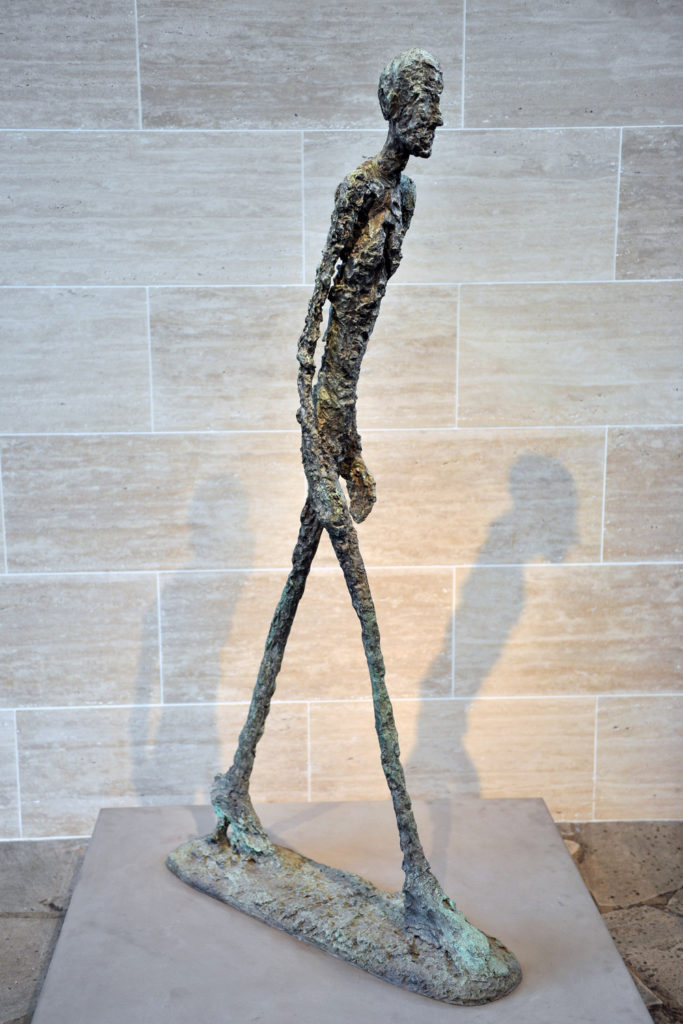
Caminante, son tus huellas el camino,
y nada más;
caminante, no hay camino,
se hace camino al andar.
Al andar se hace camino,
y al volver la vista atrás
se ve la senda que nunca se ha de volver a pisar.
Caminante, no hay camino, sino estelas en la mar.
― Antonio Machado, Campos de Castilla
Traveler, there is no path.
The path is made by walking.
Traveler, the path is your tracks
And nothing more.
Traveler, there is no path
The path is made by walking.
By walking you make a path
And turning, you look back
At a way you will never tread again
Traveler, there is no road
Only wakes in the sea.
To further the reflection on the perception of oneself and the world:
The discussion is in French, but if you click on the setting icon, you can select the subtitles in English or in Spanish.
#9 Aspiration & Dedication
Thaye Dorje, His Holiness the 17th Gyalwa Karmapa, shares the following meditation on the eve of Vesak 2020.
When it comes to becoming a Buddha, when it comes to blossoming into a Buddha, aspiration is a beautiful way to seed this state of Buddhahood.
To be a ‘Buddha’ is to be awakened.
To be more precise, if we split this method or vehicle of aspiration in half, the two parts can be understood as:
The 1st half is སྨོན་ལམ། (smon lam). ‘Monlam’ is the Tibetan term for aspiration, ‘praṇidhāna’ in Sanskrit.
The 2nd half is བསྔོ་བ། (bsngo ba). ‘Ngowa’ is the Tibetan term for dedication, ‘pariṇāma’ in Sanskrit.
‘Monlam’ is like inhaling and ‘Ngowa’ is like exhaling.
Just like breathing, it is most natural…
#10 Post Confinement/Meditation Activities
I want to give a big up for this amazing work to my DP, editor, camerawoman, producer and wonderful life partner WMW.
Love you hon’
Journal du COVID-19
#1 Les quatre sceaux du Dharma comme outils de transformation.
#2 Comme un cygne doré dans des eaux tourmentées. Considère la préciosité de ton existence humaine, avec ses libertés et ses acquis.
Les Instructions du Seigneur Gampopa, le Rosaire des Joyaux de la Sublime Voie
Un cygne doré dans des eaux tourmentées
Au coeur de la méditation bouddhique
#3 Quand Nous Respirons
Quand nous Respirons
Karmapa Thaye Dorje
Quand nous respirons, si nous pensons qu’inspirer est la vie, alors c’est uniquement ce que nous faisons quand nous inspirons.
Quand nous respirons, si nous pensons qu’expirer est la mort, alors c’est uniquement ce que nous faisons quand nous expirons.
Cependant, ce n’est pas parce que l’expiration est la mort que nous devons nous arrêter d’expirer.
Cet acte de panique serait en soi contre nature.
Quand nous expirons et laissons la vie aller, elle revient.
La mort peut sembler définitive, mais tout comme il y a de longues inspirations, il y a de longues expirations, et il n’y a rien d’autre.
Ces deux aspects de la respiration sont interdépendants.
Ils l’ont toujours été.
Il n’y a donc rien de permanent.
Notre corps et notre esprit naturels le savent sans aucun apport extérieur.
C’est ainsi que nos héros, les médecins, les infirmières et tout le corps médical peuvent prendre soin de tous les patients.
Bien sûr, ils ont peur et paniquent : ils sont sains d’esprit !
Mais lorsqu’ils trouvent un moyen d’accepter la réalité – qui est changement – leur courage et leur amour prennent le dessus sur la panique et la peur, et avec un seul objectif ils suivent le cours de ce qui arrive aux patients et font ce qu’ils peuvent.
Alors, respirez avec bienveillance, mes chers amis.
Respirez.
Respirez sans crainte.
Vous respirez avec moi et je respire avec vous.
#4 Intention et Motivation. Petite pause méditative ensemble.
#5 Karma et Changement
Une méditation sur le karma et le changement, de Thayé Dorjé, Sa Sainteté le XVIIe Gyalwa Karmapa.
« S’approprier son propre karma en disant : « c’est de mon propre fait » n’est qu’une façon de parler du karma. Les notions de temps, de soi et de langage employées dans « c’est de mon fait » jouent un rôle important dans la description du karma. En fait, nous n’avons pas d’autre choix, en fonction des outils dont nous disposons, que de le décrire en ces termes. C’est comme s’il existait un « je » qui était la cause de quelque chose, dans le passé, qui résulte en cette expérience présente, de manière linéaire. Cependant, il ne s’agit que d’une façon de l’expliquer – rien de plus...” Suite
Transcription du texte de la vidéo (Merci Alain)
Meditations par Karmapa Thaye Dorje
#6 Base, Chemin et Fruit
Par la nature de la base, les deux vérités libres des extrêmes de l’éternalisme ou du nihilisme,
Et par le chemin suprême, les deux accumulations libres des extrêmes de l’exagération et du dénigrement,
On obtient le fruit, les deux bienfaits libres des extrêmes du devenir et de la paix.
Puissions-nous rencontrer ce dharma qui est sans fourvoiement ni défaut.
Karmapa Rangjoung Dorjé
#7 Quand le monde est empli d’adversité, transformes-les en la voie de Bodhi
Rien ne Naît ni ne Périt
Mais des choses déjà existantes se combinent, puis se séparent de nouveau.
Anaxagore
La clé de la pratique de Tonglen est dans la transmutation, entre l’inspir et l’expir
La saisie de la réalité substantielle du soi des phénomènes et du soi de l’individu entraîne une réification du processus et par cela interdit la transmutation. Le don et la prise charge demeure contraints par la perception dualiste habituelle.
Profondément, il n’y a aucune substance qui soit prise en charge par un sujet, ni qui soit donné à un autre objet.
#8 Résolution intérieure & extérieure. Bienveillance et Sagesse
Le Lac
“…Que le vent qui gémit, le roseau qui soupire,
Que les parfums légers de ton air embaumé,
Que tout ce qu’on entend, l’on voit et l’on respire,
Tout dise : ” Ils ont aimé ! “

Caminante, son tus huellas el camino,
y nada más;
caminante, no hay camino,
se hace camino al andar.
Al andar se hace camino,
y al volver la vista atrás
se ve la senda que nunca se ha de volver a pisar.
Caminante, no hay camino, sino estelas en la mar.
― Antonio Machado, Campos de Castilla
Chemineau, tes empreintes sont le chemin,
Et rien de plus;
Chemineau, il n’y a pas de chemin,
Tu fais ton chemin en marchant.
Alors que tu avances,
Et en regardant en arrière
Tu peux voir le chemin qui ne sera plus jamais parcouru.
Chemineau, il n’y a pas de chemin,
Mais des sillages dans la mer.
Pour continuer autrement la réflexion sur la perception du monde et de nous-même:
#9 Aspirer & Dédier
Thayé Dorjé, Sa Sainteté le XVIIe Gyalwa Karmapa, partage la méditation suivante à la veille du Vésak 2020.
སྨོན་ལམ། (smon lam) – Mönlam, aspiration
Quand il s’agit de devenir un bouddha, quand il s’agit de s’épanouir comme un bouddha, l’aspiration est une belle façon de semer cet état éveillé.
Être un bouddha signifie être éveillé.
Pour être plus précis, nous pouvons diviser cette méthode, ou véhicule, de l’aspiration en deux parties comprises comme il suit.
La première partie est སྨོན་ལམ། (smon lam), mönlam. Mönlam est un terme tibétain signifiant aspiration, praṇidhāna en sanskrit.
La seconde partie est བསྔོ་བ། (bsngo ba), ngowa. Ngowa est un terme tibétain signifiant reversement, pariṇāma en sanskrit.
Mönlam est comme l’inspiration et ngowa comme l’expiration.
Tout comme la respiration, c’est parfaitement naturel.
# 10 Activités Post Confinement/Meditation
Je voulais dédier un grand “Big up” à ma directrice photo, camerawoman, productrice, éditrice et fantastique compagne de vie WMW.
Je t’aime hon’
JAMGON KONGTRUL RINPOCHÉ: LES QUATRE SCEAUX
Un enseignement des Archives de Montchardon sur les “quatre sceaux” est mis en ligne pour faire suite aux conseils de Karmapa qui invitait à une profonde réflexion sur les quatre sceaux dans son message du 7 mars dernier :
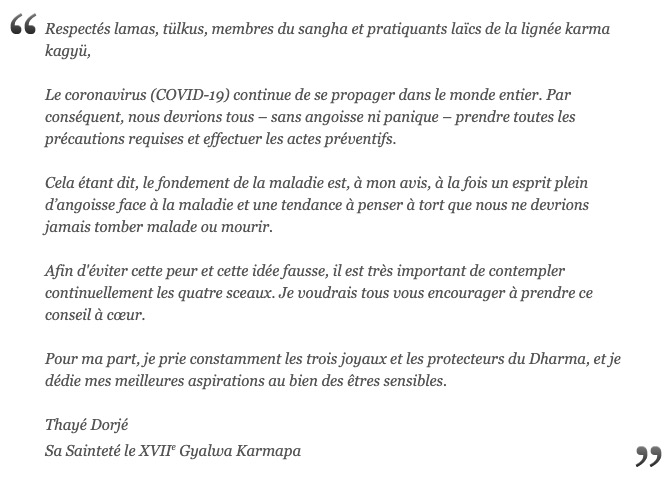
Au moment de passer dans le Parinirvana à Kuchinagar à l’âge de 84 ans, le Bouddha enseigna les Quatre Sceaux du Dharma. Son dernier enseignement scelle les quatre caractéristiques qui marquent tous les enseignements du Bouddha qui dévoilent la compréhension du mode d’être de tous phénomènes, comment fonctionne le monde, ce qu’il est et ce qu’il n’est pas.
Ces Quatre Sceaux du Dharma sont :
- Tous les phénomènes composés sont impermanents.
- Tous les phénomènes contaminés sont souffrance.
- Tous les phénomènes sont vides et dépourvus d’un Soi
- Le Nirvana est paix.
Nous vous proposons donc un enseignement donné en novembre 2017 par Jamgon Kongtrul Rinpoché à Montchardon en 6 sessions pour un total d’environ 7h30 d’enseignements
Langue : Tibétain
Traduction : Français
Karmapa Thaye Dorje: The Four Dharma Seals
Karmapa Thaye Dorje. Chenresig practice and teaching on change, karma and COVID-19
Comment vivre la maladie qui m’ invalide de plus en plus?
La vie nous tue tous à petit feu, c’est une réalité que l’on peut voir dans la dégradation de notre physique. L’esprit lui n’est pas dégradable, il n’est pas matériel et donc pas soumis au déclin comme l’est le corps. L’exercice est de faire avec la liberté (ou le peu de liberté) que nous avons, quand nous l’avons, pour renforcer notre familiarité avec le coeur de l’esprit par une rencontre avec lui de tous les instants. Au final, alors que notre dernier souffle s’approche, il n’y aura ni regret ni crainte. L’inspir et l’expir de lojong sera notre pratique ultime, quand la parole et le corps ne fonctionneront plus comme auparavant. Il faut nous y préparer maintenant. Inspires et expires le Mani. Laisse ton esprit se reposer dans l’amour et regardes tous les phénomènes qui apparaissent comme l’expérience du rêve, clairs mais insubstantiels. Savoures le repos en cet état.
How to do prostration by Sakya Pandita
NAMO MANJUSHRIYE
NAMO SUSHIRIYE
NAMA UTAMA SHIRIYE SVAHA
NAMO GURU BHYE NAMO BUDDHA YA
NAMO DHARMA YA
NAMO SANGHA YA
By offering prostrations toward the exalted Three Jewels, may I and all sentient beings be purified of our negativities and obscurations.
Folding the two hands evenly, may we attain the integration of method and wisdom.
Placing folded hands on the crown, may we be born in the exalted pure realm of Sukhavati. Placing folded hands at the forehead, may we purify all negative deeds and obscurations of the body.
Placing folded hands at the throat, may we purify all negative deeds and obscurations of the voice.
Placing folded hands at the heart, may we purify all negative deeds and obscurations of the mind. Separating the folded hands, may we be able to perform the benefit of beings through the two rupakaya.
Touching the two knees to the floor, may we gradually travel the five paths and ten stages. Placing the forehead upon the ground, may we attain the eleventh stage of perpetual radiance. Bending and stretching the four limbs, may we spontaneously accomplish the four holy activities of peace, increase, magnetizing, and subjugation of negative forces.
Bending and stretching all veins and channels, may we untie the vein knots.
Straightening and stretching the backbone and central channel, may we be able to insert all airs without exception into the central channel.
Rising from the floor, may we be able to attain liberation by not abiding in samsara.
Repeatedly offering this prostration many times, may we be able to rescue sentient beings by not abiding in peace.
By the merit of the virtue of offering this prostration, in this life may we attain magnificent health and longevity, and after death may we be born in Sukhavati, and from there swiftly achieve perfect and full enlightenment, Buddhahood.
May all beings possess happiness.
May all lower births be forever empty.
May all bodhisattvas dwelling anywhere be able to accomplish all of their aspirations.
SARVA MANGALAM
Written by Sakya Pandita Kunga Gyaltsen
An Explanation of How to Do Prostrations by Sakya Pandita
By Venerable Khenpo Kalsang Gyaltsen
First, is it is always important to have right motivation. One should think, “For the sake of all sentient beings I want to achieve the highest attainment, Buddhahood. For that purpose I am studying this Dharma teaching and I will put it into practice to the best of my ability.” Such motivation is an important preliminary for receiving Dharma teachings.
Today we will study the text How to Do Prostrations by Sakya Pandita. We will learn how to offer prostrations toward those that are the excellent worthy object of prostrations, such as the Guru, Buddha, Dharma, Sangha, and tutelary deities.
Generally, prostrations are a very important part of Dharma practice, and also the best method of purifying the negative karma that we have accumulated in the past through our body, voice, and mind. Therefore, prostrations are included at the beginning of every practice, such as the Seven- Fold Prayer.
When doing prostrations, it important to know and think mindfully about what we are doing with our body, voice, and mind for every prostration. This text by Sakya Pandita explains what aspirations to make, and what to say and think at each point in the prostration.
Sakya Pandita begins with mantras in Sanskrit. Recitation of these mantras transforms our prostrations by multiplying them a thousand times.
NAMO MANJUSHRIYE This means prostration to Manjushri.
NAMO SUSHIRIYE
NAMA UTAMA SHIRIYE SVAHA
These are the three mantras that transform the prostrations.
Also in addition:
NAMO GURU BHYE
NAMO BUDDHA YA
NAMO DHARMA YA
NAMO SANGHA YA
“By offering prostrations toward the exalted Three Jewels, may I and all sentient beings be purified of our negativities and obscurations.” This is our aspiration. Negativities may have been performed by body, voice, or mind. Obscurations are of two types: obscurations of defilements and obscurations of cognition.
“Folding the two hands evenly…”
There are a number of ways to fold the hands in the gesture of respect. Folding the hands so that the palms are flattened together is not a Buddhist gesture. The Buddhist gesture of respect is to fold the thumbs slightly and hold them between slightly cupped hands. The hands are held vertically at the heart, not under the chin.
Very Venerable Dezhung Rinpoche used to demonstrate this quite carefully. Flattening the palms together is not very respectful, and placing the tips of the fingers at the mouth is a gesture of sorrow. The hands should be placed in front of the heart.
“May we attain the integration of method and wisdom.”
Symbolically, this is the meaning of folding the two hands evenly. Method means merit. We pray to attain the integration of the accumulation of merit and the accumulation of wisdom.
“Placing folded hands on the crown, may we be born in the exalted pure realm of Sukhavati.”
Sukhavati is Amitabha’s realm. Folding our hands together evenly and placing them on our heads means,
‘May we attain the integration of merit and wisdom and then be born in the pure realm of Sukhavati.’
“Placing folded hands at the forehead, may we purify all negative deeds and obscurations of the body.”
May all the negativities of the body, such as killing and stealing, etc. that I and all sentient beings have been accumulated be purified.
“Placing folded hands at the throat, may we purify all negative deeds and obscurations of the voice.”
May we purify all negativities of the voice, such as lying, harsh words, etc.
“Placing folded hands at the heart, may we purify all negative deeds and obscurations of the mind.”
Negative deeds of the mind are harmful thoughts, greed, etc.
Thus far, Sakya Pandita has explained the purpose or reason for doing prostrations; the reason we place our folded hands at the crown, forehead, throat, and heart is mainly to purify any negative deeds that have been accumulated through body, voice, and mind.
You may wonder about the symbolism of touching the forehead for the body, the throat for the voice, and the heart for the mind. The forehead is the center of the head, which is the principal part of the body because all the sensory organs are located above the neck, and the forehead is the center of all of them. The throat is the source of the voice. The heart symbolizes the mind. Although the mind has no physical substance, the mind goes with the blood and airs inside the veins. The heart is the center of the veins and the source of the blood and airs.
“Separating the folded hands, may we be able to perform the benefit of beings through the two rupakaya.”
The two rupakaya are the sambhogakaya, which is the excellent enjoyment body, and the nirmanakaya, which is the emanation body. Through these two, may we perform the benefit of sentient beings until the end of samsara.
“Touching the two knees to the floor, may we gradually travel the five paths and ten stages.”
The five paths are the path of accumulation, the path of application, the path of seeing, the path of meditation, and the path of accomplishment. The ten stages are those of the bodhisattva path. We aspire to be able to gradually travel all of these.
“Placing the forehead upon the ground, may we attain the eleventh stage of perpetual radiance.”
The ten stages are the bodhisattva’s stages. The eleventh, from the Paramitayana point of view, is Buddhahood.
“Bending and stretching the four limbs, may we spontaneously accomplish the four holy activities.”
The four limbs are the two arms and two legs. The four holy activities are the Buddhas’ activities of peace, increase, magnetizing, and subjugation of negative forces.
“Bending and stretching all veins and channels, may we untie the vein knots.”
Ordinary people’s veins are not completely straight, but have blockages. But after reaching higher stages such as the bodhisattva levels and Buddhahood, the vein knots are all gradually untied and the elements move easily with them.
“Straightening and stretching the backbone and central channel, may we be able to insert all airs without exception into the central channel.”
“Rising from the floor, may we be able to attain liberation by not abiding in samsara.”
“Repeatedly offering this prostration many times, may we be able to rescue sentient beings by not abiding in peace.”
This means we aspire not to abide in peaceful nirvana, but to rescue beings from samsara.
“By the merit of the virtue of offering this prostration, in this life may we attain magnificent health and longevity, and after death may we be born in Sukhavati, and from there swiftly achieve perfect and full enlightenment, Buddhahood.”
“May all beings possess happiness.”
“May all lower births be forever empty.”
“May all bodhisattvas dwelling anywhere be able to accomplish all of their aspirations.”
“SARVA MANGALAM – Written by Sakya Pandita Kunga Gyaltsen”
This completes the text written by Sakya Pandita Kunga Gyaltsen. It explains how to do prostrations, and at the same time, what to recite and visualize.
Generally speaking, whenever we practice, we are supposed to integrate body, voice, and mind. When we do prostrations, we also integrate our physical movements in the gestures of respectful prostration, vocal recitation of these verses, and mental imagining of each of these visualizations at these specific times, so that the body, voice, and mind are integrated as a meditation.
Another important point is that when doing prostrations, we should think that we are prostrating with not just one body, but that our body emanates as many bodies as atoms in the entire universe. And we should think that we are doing prostrations to infinite numbers of Buddhas and bodhisattvas, praising their perfections and good qualities in infinite ways. Thinking this, the merit of a single prostration multiplies many trillion times. Otherwise, thinking merely, “I’m doing one prostration,” of course is beneficial, but imagining our body, voice, and mind as manifold is much more powerful.
Another important point is to think, “I’m doing these prostrations on behalf of all sentient beings without exception.” Thus our prostrations are for the benefit of all sentient beings.
You can practice prostrations using Sakya Pandita’s text by itself, or if you wish to also add the Sevenfold Prayer, you can do the Sevenfold Prayer at the beginning or the end. The Sevenfold Prayer is included below.
When doing many prostrations, it is excellent if you can memorize this and recite it with the prostrations. Or if that is difficult, you can do the visualizations according to this text, but recite one of the standard refuge prayers either in Sanskrit, Tibetan, or English as below.
Sanskrit Refuge Prayer:
NAMO GURU BHYE/
NAMO BUDDHAYA/
NAMO DHARMAYA/
NAMO SANGHAYA/
Tibetan Refuge Prayer:
San gye chö dang tsog kyi chog nam la /
Chang chup par du dag ni kyab su chi /
Dag ge jin sog gye pai sod nam kye/
Dro la phen cher sang gye drup par shog.
English Refuge Prayer:
To the excellent Buddha, Dharma, and Sangha
I go for refuge until enlightenment is won.
By the merit of giving and the other perfections
May I attain Buddhahood for the sake of all beings.
Seven-Fold Prayer from the Samantabhadra’s Aspiration to Noble Deeds
With clarity of body, speech, and mind,
I bow without exception to all the lions among men
Of the past, present, and future,
In every world in all the ten directions.
By the power of this Aspiration to Noble Deeds,
I manifest bodies as numerous as all the atoms in all the lands,
Aware in mind of the presence of numberless victorious Buddhas,
And I prostrate to all of them.
I conceive the entire realm of truth
To be completely filled with enlightened ones.
There are as many Buddhas as atoms present in each atom,
Each Buddha surrounded by many Bodhisattvas.
I honor all these blissful lords,
Extolling the ocean of their inexhaustible perfections
With an ocean of all melodies and sounds,
And endless praise.
I offer to those heroic Buddhas
The best flowers, best garlands, best music,
Best ointments, excellent canopies, finest lamps,
And the best incense.
I offer to those heroic Buddhas
The finest robes and best fragrances
And a variety of foods piled as high as Mount Meru, All perfectly arranged.
By the power of my faith in noble deeds I prostrate and present
Vast and unequaled offerings
To each of the victorious Buddhas.
I confess every type of wrong
That I have done
In thought, word, or deed,
Under the influence of desire, anger, or ignorance.
I rejoice in the meritorious deeds
Of all the Buddhas of the ten directions,
The Bodhisattvas, Pratyeka Buddhas, Arhats,
Practitioners, and all sentient beings.
I request all the enlightened protectors
Who have attained the detachment of Buddhahood,
And illumine the worlds of the ten directions
To turn the peerless wheel of Dharma.
With hands folded, I beseech
Those who intend to manifest the final nirvana
To remain for as many eons as there are atoms in all the Buddha lands,
To gladden and benefit all living beings.
May whatever little virtue I may have gained
From prostrating, offering, confessing,
Rejoicing, requesting, and beseeching,
Be dedicated to attaining perfect enlightenment.
Transcribed and edited from a historic video of Venerable Khenpo Kalsang’s Dharma teachings by his grateful students on the occasion of his holy birthday, 2015. By this merit, may his life and those of all holy teachers be long and all of their aspirations accomplished.
Coronavirus and Dharma Practice
Gyalwa Karmapa Thaye Dorje about 2020 coronavirus epidemy
At present, a large number of people in the world find themselves in a situation in which there is serious danger to their lives.
For this reason, I appeal to all practitioners and devotees to pray one-pointedly to the noble Chenrezig, and accumulate the fasting practice of Nyungne. This will be of benefit here and now, as well as in future lives.
I recommend that everyone stays at home and joins the practice sessions at a fixed time via live video streaming. As this coronavirus disease is contagious, large gatherings of people would be very dangerous. This way we can still accumulate positive potentials and cleanse defilements.
I request monasteries and dharma centres in the different regions to make arrangements for this practice as per your particular time zone.
In general, the many and various kinds of obstacles that we face, such as natural disasters, wars, infectious diseases, and famines that keep occurring are the infallible consequence of our collective and individual karmas.
Nevertheless, because of our lack of deep conviction about this, we tend to deny the causality of our actions and their results when we encounter difficult challenges. Whatever one’s religious orientation, one may also mistakenly assume that one’s supreme spiritual reference is biased in compassion. Or, we may consider all of the problems we face as the result of bad policies in our societal systems, or erroneous scientific views or other negative developments. We tend to become angry with all of that, leading us to feel distraught. Some even become insane, while others commit suicide. This is wrong.
In general, this all happens as a result of not being able to come to terms with the fact that, no matter how frequently we experience joy and happiness in this world, the suffering of birth, ageing, illness, and death come side by side, just as the body and its shadow walk together.
Whatever suffering occurs, it is important to identify its root. In the Buddha’s teachings, there is the system of tracing the origin of our suffering in our karma and afflicting emotions. However, tracing the origin alone is not sufficient. It is necessary to endeavor to develop confidence in the interdependence of causes and conditions and the courage to own up to one’s karmic results.
There are instructions, which I support, that say that one needs to do away with the habit of doing nothing other than tracing. For this reason, I appeal to all to consider the excellent teaching that all sentient beings have been one’s parents, and hold firmly to the fact that the cycle of birth, ageing, illness, and death is the nature of dependent arising.
By regarding all karmic effects as mere perceptions of the mind, avoid the extreme views of permanence and negation, and practice again and again.
Engage in the six sessions practice of day and night, be heedful to sustain yourselves on white food, and spend your time doing practices such as Nyungne, or similar practices. From my side as well, I am praying to the teacher and to the Three Jewels.
From Theory to Reality
Oops! I did it again.
How to journey from theory to reality, with mindfulness, attentiveness and carefulness
Exploration et Découverte de l’Esprit
Dans l’état actuel, d’une manière générale, nous vivons une situation de confusion où le corps, le souffle et l’esprit sont dispersés. Nous sommes emportés par nos pensées qui vont, viennent et repartent sans cesse entre le passé et le futur, sous l’effet d’émotions dont nous ne sommes pas conscients la plupart du temps.
D’où l’utilité de se recentrer périodiquement en posant notre esprit sur le souffle, afin de détendre le corps et l’esprit jusqu’à ce que ce dernier devienne clair, à la fois lucide et bienveillant. Nous expérimentons ainsi un état qui nous rapproche de notre nature profonde qui est à la fois intelligence et bienveillance. Il n’y a rien à créer ni à développer. C’est plutôt l’inverse, un processus de décantation, comme le verre d’eau boueuse au travers duquel on ne voit rien parce qu’on l’agite continuellement. Il suffit de poser le verre pour que la boue se dépose au fond et que l’eau devienne limpide.
Pour faire cela, il faut d’abord en avoir envie ou en éprouver le besoin. Cela est à la fois simple et en même temps complexe car chacun de nous est différent. Les indiens et les tibétains parlent de 84 000 enseignements, ce qui veut dire un nombre infini, Il y a des fondamentaux, mais chaque enseignement doit être adapté à un individu donné et à un moment donné.
De ce fait, l’enseignement du Bouddha doit être expérimenté par chacun d’une manière personnalisée. Des outils sont mis à notre disposition, d’une part pour voir clair en nous et d’autre part pour lâcher tout ce qui nous empêche d’être en contact avec notre nature profonde. Castorama constitue l’analogie humoristique idéale. On n’y va pas pour que quelqu’un fasse le travail à notre place. De même, le bouddhisme nous propose des outils et des conseils d’utilisation que l’on va mettre en œuvre par nous-mêmes sur nous-mêmes. Ces outils ne sont pas limités à une religion ou à une culture donnée. Ils sont universels et peuvent être employés dans une démarche laïque et même athée.
La méditation
Ne nous laissons pas enfermer dans le mot « méditation » qui a une connotation occidentale assez éloignée de l’origine orientale qui est évoquée ici. En tibétain, le mot qui a été traduit par méditation veut dire en fait littéralement « s’habituer ». On s’habitue à mieux voir et connaître nos tendances, nos réactions par rapport aux autres et aux situations que l’on rencontre et, au-delà à approcher notre nature profonde. D’une manière générale, dans la vie courante, on reste dans la couche superficielle de notre esprit et c’est un travail de fond qui nous permet, pas à pas, de prendre conscience et de mieux maîtriser ce qui se passe plus profondément en nous-mêmes.
Nombreuses sont les techniques qui permettent à notre esprit de se poser, donc de se calmer. Après s’être installé confortablement, le dos droit et le corps détendu, les mains sur les genoux ou la main droite sur la main gauche, les paumes tournées vers le haut « dans le giron », on va prendre conscience de notre respiration : un inspir, un expir et, à chaque expir on va compter mentalement. Ainsi, on va compter jusqu’à cinq en étant bien attentif à cette respiration, en la suivant, sans chercher à l’accélérer ou à la ralentir. Ensuite, après cette période d’attention, on va se détendre, comme à la récréation et on va compter à nouveau jusqu’à cinq respirations, en laissant les pensées venir et, tant pis si on oublie une respiration, on en compte cinq. Puis à nouveau, notre conscience est centrée uniquement sur cinq respirations, et ainsi de suite, on alterne les phases de concentration et de détente.
Une autre technique consiste à visualiser un point lumineux qui suit notre respiration. A l’inspir on est conscient que ce point lumineux descend, en nous-même jusqu’en dessous du nombril, à l’expir il est expulsé avec le souffle et décrit une ligne dans l’espace devant nous. Et ainsi de suite.
Quelle que soit la technique, avec la pratique régulière, l’esprit va se détendre et l’on va voir les pensées qui s’élèvent, les unes après les autres, puis qui s’évanouissent comme elles sont venues, sans que l’on soit capté par elles. Il n’y a rien à faire, simplement être là. C’est tout simple, mais dans notre fonctionnement habituel, nous sommes emportés continuellement par des trains de pensées et le même phénomène va se produire : « Mince, j’ai oublié le pain ! Est-ce que la boulangerie est encore ouverte ? Comment vais-je faire ? etc.. …». Nous avons oublié le point d’ancrage de la respiration. Ce n’est pas grave, sans culpabiliser on y revient et on recommence. Il est bon de faire cet exercice régulièrement entre 15, 20, voire 25 minutes après c’est du bonus…
L’action
Il est très important de ne pas confondre l’esprit au repos et l’action. Dans le premier cas, on observe et l’on ne juge pas. Il n’y a pas de mauvaises pensées que l’on rejette avec horreur, ni de bonnes pensées auxquelles on s’attache. Il n’y a que des mouvements de l’esprit que l’on voit apparaître, puis se dissoudre. Dans l’action, au contraire, il est important d’avoir tout son discernement entre ce qui est positif et négatif. Le critère de choix dans cette alternative consiste à se poser la question : « est-ce que mes pensées, mes paroles et mes actes sont portés par l’intelligence et la bienveillance qui seront bénéfiques aux autres et à moi-même, ou est-ce que je recherche uniquement mon intérêt, voire à nuire aux autres ? » Ce critère n’est pas toujours facile à appliquer et c’est là où la pratique d’observation des mouvements de l’esprit devient particulièrement utile, car on sait tous que derrière les meilleures intentions peuvent se cacher des motivations, souvent inconscientes, qui sont beaucoup moins claires.
Notre esprit étant sans cesse en mouvement, les situations les plus banales de notre vie quotidienne nous fournissent continuellement des occasions de mettre en pratique les enseignements du Bouddha ou des maîtres qui lui ont succédé. Lors d’une promenade dans Lyon j’ai vu un monsieur qui promenait son chien avec une laisse extensible assez longue. Une personne qui arrivait sur le trottoir avec son skate-board a failli se prendre les pieds dans la laisse et tomber. Première réaction agressive de l’un, réponse agressive de l’autre, puis échange d’arguments contradictoires. L’incident en restera là, mais chacun repart de son côté, à la fois mécontent et sûr de son bon droit.
La règle des trois tiers.
Ceci est l’occasion de voir « la règle des trois tiers ». Lorsqu’il y a un conflit ou un malentendu entre deux personnes : premier tiers, la personne A fait une projection négative sur les intentions et le comportement de la personne B ; deuxième tiers, la personne B procède de même vis-à-vis de A ; troisième tiers, il y a très souvent un quiproquo au départ. Dans ce contexte, on ne peut qu’être dans la confusion et les pensées, voire les paroles ou les actes négatifs.
Soi vers soi, soi vers les autres
Pour éviter de se trouver dans cette situation, il est important de se rappeler la règle des trois tiers, mais surtout de mettre en application le « soi vers soi et soi vers les autres ». De quoi s’agit-il ? Tout simplement, lorsque je sens monter une réaction vis-à-vis de l’autre, je prends immédiatement conscience que c’est ma réaction. Entre : « l’autre est un crétin » et « je pense que l’autre est un crétin », il y a une nuance qui nous permet de prendre du recul, de voir notre motivation et, éventuellement de faire une vérification. Ceci peut également s’appliquer, lorsque, plein de bonnes intentions, on veut « faire le bonheur de l’autre ».
La production de compost .
Même si nous avons un comportement parfaitement normal et avisé dans la société, avec notre travail, nos loisirs, nos amis, la famille, promener notre chien, etc. Il n’en reste pas moins que nous sommes plongés en permanence dans cette confusion où nous ne voyons pas clair en nous, parce que nous restons à la surface des choses, conditionnés par nos émotions, des tendances fondamentales qui nous échappent et nos habitudes sociales. De ce fait, nous produisons sans arrêt des « déchets » : énervements, agacements, colère, inquiétudes injustifiées, peurs irraisonnées, jalousie, impatiences, envies de toutes sortes, etc. Nous sommes complètement enfouis sans le savoir sous ces déchets. Ce qui aggrave encore notre confusion et renforce des tendances qui étaient déjà négatives au départ.
Lorsque parfois, nous sommes conscients de cela, le réflexe fréquent est d’enfoncer ces herbes folles et leurs graines dans la terre pour ne plus les voir. Ce qui ne fait que repousser, voir amplifier le problème. Il faut donc appliquer la technique du « compost ». Comme chacun le sait, il ne s’agit pas de rejeter les déchets mais de les recycler pour faire du bon terreau qui va nous permettre d’avoir de belles fleurs ou de bons légumes, semer des carottes dans de bonnes conditions par exemple.
En quoi consiste cette métaphore dans le domaine des pensées ? D’abord, il faut être conscient de ce qui se passe : « je suis agacé par untel ou par telle situation » ensuite, il faut se rappeler que cet agacement n’est qu’une pensée qui s’élève dans l’esprit et il faut la laisser se dissoudre toute seule sans s’y attacher et sans forcer. Si cet agacement est très fort ou récurrent pour des raisons déjà anciennes, ce n’est pas une pensée qui va s’élever, mais tout un torrent de pensées qui va nous emporter sans que nous puissions maîtriser la situation. Ce n’est pas grave, on a déjà été conscient de la situation. C’est un premier pas et, il faut avancer pas à pas. C’est un entraînement à voir le plus tôt possible ce qui se passe. Au prochain agacement, si nous le détectons dès la première pensée, il sera beaucoup plus facile de la laisser se dissoudre, la « lâcher ». Et, surprise, quand on lâche vraiment, un sentiment d’espace et de plénitude va s’installer à la place de l’agacement. C’est un bref contact avec notre nature profonde, intelligente et bienveillante. Le déchet a été transformé en compost fertile. Mais il faut savoir qu’il y a tellement de travail au départ, que l’on aura le sentiment que cela n’est jamais fini. Il faut recommencer, encore et encore avec courage et persévérance.
La vigilance.
Une autre qualité doit être mise en application, c’est la vigilance. Elle nous sert à détecter les « déchets » dès leur apparition, mais elle est également très précieuse pour avoir une « présence consciente » dans l’instant. En effet, notre esprit est sans cesse emporté, comme nous l’avons vu, par nos projets ou nos craintes dans le futur ou par le ressassement du passé. Aujourd’hui, il y a de magnifiques cerisiers en fleurs, ils vont passer très vite, soyons conscients, ici et maintenant, de la beauté de la nature ou du sourire d’un passant à qui on sourit et qui va spontanément échanger quelques mots avec nous. La plupart du temps, plongés dans nos pensées, nous ne goûtons pas la saveur unique de l’instant présent.
Sans espoirs fantasmés ni craintes inutiles
Les mouvements continuels de l’esprit entre le passé et le futur ont également pour conséquence de nous faire osciller sans cesse entre les espoirs fantasmés et les craintes inutiles. Lâchez ces espoirs et ces craintes et l’esprit va s’installer dans un espace de calme et de lucidité qui va nous rendre beaucoup plus efficaces dans nos tâches professionnelles et notre conduite personnelle.
La vigilance, et donc la capacité à contrôler spontanément, avec intelligence et bienveillance, les situations qui se présentent, sera grandement et plus rapidement améliorée grâce aux périodes que nous consacrons à centrer le corps, le souffle et l’esprit. Mais ceci n’est pas naturel pour tout le monde, surtout au début. D’où l’exemple de l’amie, très ancrée dans l’action, qui va faire un stage intensif d’une semaine en Auvergne et qui, dès le troisième jour, avoue avoir passé son temps à repeindre et décorer son appartement…
Le don et la prise en charge
Cette pratique consiste à poser son attention sur le souffle : à l’inspir on prend en charge la souffrance et à l’expir on laisse se diffuser les remèdes à la souffrance. Tout ceci doit avoir un caractère universel. Si l’on est touché par la situation d’une personne que l’on connaît parce qu’elle est en deuil, malade, abandonnée, etc. en inspirant on va penser à la douleur de cette personne, mais aussi de toutes celles que l’on ne connaît pas et qui sont dans une souffrance comparable. En expirant, on va penser que la santé, l’intelligence et la bienveillance fondamentales se diffusent pour dissoudre les souffrances que l’on a prises en charge à l’inspir. Ce n’est donc pas « moi je » qui opère, mais notre nature profonde qui a un caractère universel et dont je ne suis pas le propriétaire, mais seulement le gérant.
La dédicace
Consacrons les dernières minutes de notre pratique à une réversion des graines d’éveil avec le support du souffle:
A l’inspir on recueille tout ce qui a été positif, de notre part, de la part de tous ceux qui sont là et même de ceux qui ne sont pas présents et que l’on ne connaît pas.
A l’expir, on offre tout cela porté par notre nature profonde, sur un plan universel , au-delà de la dualité entre celui qui donne et de celui qui reçoit.
En guise de conclusion, voici le poème de Rimbaud, comme pour souligner, au-delà des religions et des cultures, de l’Orient et de l’Occident, le caractère absolument universel des notions de calme mental et de nature profonde de notre être, qui émergent lorsqu’on laisse le silence s’installer en nous.
Sensation
Par les soirs bleus d’été, j’irai dans les sentiers,
Picoté par les blés, fouler l’herbe menue :
Rêveur j’en sentirai la fraîcheur à mes pieds.
Je laisserai le vent baigner ma tête nue.
Je ne parlerai pas, je ne penserai rien :
Mais l’amour infini me montera dans l’âme,
Et j’irai loin, bien loin, comme un bohémien,
Par la Nature, – heureux comme avec une femme.
Introduction to Meditation
The Purpose of Dharma
What the Buddha wishes is for all beings to know and see true wisdom, as opposed to confusion.
Kunzig Shamar Rinpoche:
“Mind needs to be tamed. Thoughts should be controlled. In order to accomplish this you need to learn calm abiding meditation.
There are many kinds of calm abiding practice, but the initial level is crucial to learn in order to have strong stability of concentration.
First you need to know how to sit, and then in order to train the mind to concentrate, you must focus on your breath. Count twenty-one breaths and then take a short break, then start again. When you first try to do this, your mind may be distracted and it will be hard to count twenty-one breaths. Don’t be concerned, even if it is very difficult at first. Just keep calmly placing your concentration back on your breath. Counting twenty-one breaths with good concentration will develop tranquility in your body, speech and mind.
When you can manage to count twenty-one breaths without any disturbance or distraction you will already have achieved a very good quality concentration.”
How to Relate to the Path
From the Kadampa spiritual teachers comes the advice:
« Look far ahead, generate a vast mind, do not squeeze yourself. »
Look far ahead:
Buddha, the awakened state, is the ultimate goal. This is what we should be aiming at.
Buddha Sakyamuni did the inner work–meditation, reflection, and transformation. He also did outer work–traveling to meet people from all walks of life to give them wise and adapted instructions. He told them not to take his word for granted, but to see for themselves.
The Buddha is a role model and a source of admiration. Admiration should carry a sense of longing for the similar state of freedom one wants to achieve. It is not the type of fascination a teenager has for his idols.
Generate a vast mind:
Be ready to do whatever it takes to achieve the goal: Study, reflection, meditation, integration in daily life. Include all beings in your wish for enlightenment, excluding none. It will take time, so be steady but relax.
Do not squeeze yourself:
The path is an exciting and interesting journey. Don’t become obsessed with the goal. Understand and accept who and what you are. Be honest. Don’t lie or fool yourself, otherwise you are wasting time. Just work with the good and bad parts of you. Don’t worry about what others think of you.
Beings who have attained Buddhahood are sources of inspiration for us. However, we have to do the work.
The Importance of Stability on the Path
The Buddha mind is all pervading as space and is accessible by everyone. Everyone has its seed within.
The reason we are not enlightened is our veils and filters obscure this nature, very much like clouds obscure the sun. We are so absorbed by the clouds we don’t see the sky. The Buddhist path can help you see through the clouds. It is easy to lose sight of the sky, especially if we have neither driving force nor wisdom.
Without driving force or wisdom, we are unstable, and easily diverted by our veils and filters. We need to build up these two “accumulations” in order to be stable on the path.
Wisdom is knowing the right way. The driving force is the confidence that springs from all the challenges we have already overcome.
Ethics Help Us Achieve Stability
Maintening an ethical attitude, the first training, doesn’t constrain you. Instead, it helps you to cool down the agitation of your mind by enabling you to choose correct actions.
An incorrect action harms other beings and takes you away from enlightenment. A correct action benefits other beings, and thus leads you to enlightenment.
One, of course, needs to learn how and when to help. When we are about to help, because of our habitual patterns, we immediately think : «What might I lose, and what could I gain ? »
This is the first confrontation with your self-centered concern. When you genuinely practice wholesome actions, you will have to let go a lot of things. This will initiate a transformation. New ways of doing things will be developed. This is how this driving force is cultivated.
Ethics also helps you sort out needs and desires; not to be possessed by the things you own. Even if you have plenty, it is never enough. Ethics helps you.
Still, rejecting everything is not the solution; it is a reverse form of desire. You need to find a sense of balance that will bring a sense of peace in your being, and calm down the restless frustration of your mind.
It is hard to sit down and meditate when you are restless; any little thing will break your focus. Often you don’t meditate at all because you are preoccupied with too many plans, obligations and so forth (lots of excuses).
Meditation Also Helps Us Achieve Stability
The second training is meditation. We often make the mistake of thinking of meditation as another task. Meditation is about BEING, not doing. It is about giving yourself space. When you experience it in this way, you will want this stability all the time. You progressively come to be familiar with the beautiful moment where your body, breath, and mind are HERE.
You look past the restlessness, drowsiness, and other clouds. You use them to see what is going on in your mind. The training is to come back to the breath when you see your mind is going off in some direction.
Don’t scold yourself for being gone or praise yourself for being back. It’s a waste of time!
Be HERE–below your nose and above your upper lip. Count the breaths and strive to be present for a certain number of breaths. Choose a number you feel comfortable with. Once you have reached it, pause. Be sure to come back to your counting when you see you are REALLY gone.
In a Nutshell
Ethics frees your life from the anxieties and expectation that come from incorrect actions. It gives a basis for the second training, meditation. Meditation will help you focus more on the sky than on the clouds.
You will progressively gain the capacity to hear and see people as they really are, and not through your filters and veils. To truly help others, you need this clarity in your mind. Once the mind is clear, insight comes naturally. This is the third training.
Two Sticks, Three Steps
Rubbing the stick of valid concepts against the stick of erroneous ones, the fire of wisdom thereby created will free the mind from both, into non conceptual awareness.
Points to Contemplate
Ten exhortations
A precious garland of the supreme path
By Gampopa
Contemplating the difficulty of acquiring these freedoms and resources exhort yourself to practice genuine Dharma.
Contemplating death and impermanence, exhort yourself to cultivate virtue.
Contemplating the unfailing results of actions, exhort yourself to abandon wrongdoing.
Contemplating the defects of samsara, exhort yourself to accomplish liberation.
Contemplating the sufferings of samsaric beings, exhort yourself to cultivate bodhicitta.
Contemplating the mistaken confusion of sentient beings, exhort yourself to hear and reflect.
Contemplating the difficulty of abandoning the habits of confusion, exhort yourself to practice meditation.
Contemplating the virulence of Kleshas in this age of decadence, exhort yourself to apply their remedies.
Contemplating the many unconducive conditions present in this age of decadence, exhort yourself to be patient.
Contemplating the empty waste of a human life spent in various distractions, exhort yourself to be diligent.
Bodhicaryavatara 8/120. Le Mystère Sacré
Shantideva dans son texte l’Entrée dans la pratique des Bodhisattvas (Bodhicaryavatara) évoque le Mystère Sacré.
Quel est-il? Comment le vivre pragmatiquement dans une société déchirée par les poisons de l’avidité, de l’exclusion et de la confusion?
Ceux qui désirent être rapidement
Un refuge pour eux-mêmes et les autres
Doivent faire l’échange du «je» et de «l’autre»
Et embrasser ainsi le mystère sacré.
Bodhicaryavatara 8/120
Le Bodhicaryavatara, l’Entrée dans la pratique des Bodhisattvas est l’œuvre majeure de Shantidéva (Inde, VIIIe siècle).
Ce traité du grand véhicule, écrit sous la forme d’un long poème, est à la fois un manuel pratique et abrégé de philosophie. Il décrit avec éloquence et simplicité l’entraînement de celui qui tend vers l’état de Bouddha et le bien de tous les êtres et se résume ainsi :
Faites que le précieux esprit de l’Eveil
naisse là où il n’est pas né,
ne décline pas où il existe
et s’accroisse encore et encore.
Distraction and Lack of Persistence
Whatever we try to achieve in this life is often inhibited by two main obstacles: Distraction and lack of persistence.
Practice With Diligence Like A Farmer At Harvest
Récemment j’ai suivi beaucoup d’enseignements et reçu de nombreuses initiations
Cher Tsony
Récemment j’ai suivi beaucoup d’enseignements et reçu de nombreuses initiations. Chaque Rinpoché nous a dit combien il était important de faire la pratique attenante.
Quand j’ai suivi un enseignement sur Tara Verte ainsi que l’initiation, je me suis dit qu’il me fallait absolument faire cette pratique.
Auparavant j’avais commencé à pratiquer régulièrement Sangye Menla.
J’ai suivi l’enseignement sur la pratique de Milarepa et en ais reçu l’initiation. Je me suis mise à la faire régulièrement. Et comme ce qui m’inspire le plus c’est de devenir un Bodhisattva, je récite également la prière de Conduite Excellente.
Au cours d’un enseignement l’intervenant à insisté sur l’importance de la méditation, et là je me suis dit que peut-être je voulais trop “faire”, en faisant des pratiques avec un rituel, et pas assez passer de temps en simple méditation.
Ma vie étant très active, je n’arrive pas à maintenir toutes ces pratiques régulièrement.
Qu’en penses-tu ?
Ta question est malheureusement une problématique commune dans le monde du bouddhisme tibétain. Chaque enseignant, qui s’adresse à un groupe, ne peut pas donner de conseils individuels. Alors il en résulte des collisions de bonnes volontés.
Chacune des innombrables pratiques est une méthode qui permet de conduire à bien l’entraînement fondamental de l’esprit à se défaire des voiles qui l’empêche de reconnaître sa véritable nature et par là atteindre la réalisation de sa nature éveillée.
Abondance de biens ne nuit pas, mais le sentiment d’avoir à BIEN faire, et par là TOUT faire, nous conduit malheureusement à une impasse où l’on ressent le sentiment de trahir des promesses, un épuisement, du découragement et au final, une pauvre image de soi.
Lorsque Guendune Rinpoché était interrogé sur ce sujet, sa réponse était : « Si tu prends refuge dans l’ensemble des aspects d’éveil présents dans l’arbre du refuge, qui omets-tu ? Qui sera fâché ? »
Par-delà les méthodes, quel le but ? Quel est le dénominateur commun ?
Libérer l’esprit des quatre voiles qui obscurcissent sa capacité à se reconnaître et nous poussent dans des attitudes et des comportements qui génère la souffrance, pour soi et autrui.
Dans « La voie du Bouddha », Kalou Rinpoché décrit un esprit obscurci par 4 voiles, qui l’emprisonnent dans le samsara, le cycle des existences. Kalou Rinpoche y explique comment l’ignorance est à l’origine de la création d’un soi, de la dualité, des passions et du karma…
Le voile de l’ignorance
« L’absence de connaissance que l’esprit a de sa vraie nature, le simple fait qu’il ne reconnaisse pas ce qu’il est vraiment s’appelle l’ignorance fondamentale (…) On pourrait comparer l’esprit pur, pourvu de ses 3 qualités essentielles à une eau calme, transparente et tranquille, en laquelle tout peut être vu clairement. Le voile de l’ignorance est un manque d’intelligence de l’esprit, une sorte d’opacité, semblable à la vase qui fait perdre à l’eau sa transparence limpide. L’esprit ainsi obscurci perd l’expérience de sa lucidité ouverte et en vient à ignorer sa nature essentielle.
Cette ignorance fondamentale est dite innée, parce qu’elle est inhérente à notre existence; nous sommes nés avec elle. Elle est en fait le point de départ de la dualité, la racine de toutes les illusions et la source de tous les maux. »
Le voile de la propension fondamentale
« L’esprit sous l’emprise de l’ignorance s’engage dans les illusions, parmi lesquelles la plus fondamentale, racine de toutes les autres, est la saisie dualiste en termes de sujet et d’objet. Quand l’esprit ignore l’ouverture de sa vacuité, se substitue à son expérience sans centre ni périphérie celle d’un point de référence central à partir duquel tout est perçu. Ce point, centre qui s’approprie toutes les expériences, est l’observateur, l’ego-sujet. C’est ainsi qu’ignorant sa vacuité, l’esprit engendre l’expérience illusoire d’un moi ou je.
Simultanément, la nature de sa luminosité-lucidité n’étant pas reconnue, à sa qualité auto-connaissante se substitue l’expérience de quelque chose d’autre. Ainsi, le sujet-ego connaît des choses qui lui sont distinctes, et qui deviennent des objets extérieurs. Le moi et l’autre, la dualité de du sujet et de l’objet sont nés. Ces choses autres, l’altérité, ont une double forme : les apparences du monde extérieur, et les phénomènes mentaux.
Cette propension de l’esprit à ignorer sa propre nature et à percevoir toute situation en mode dualiste est le voile de la propension fondamentale. Ce deuxième voile pourrait de ce point de vue être aussi nommé voile de la saisie dualiste. »
Le voile des afflictions mentales
« Comme nous venons de le voir, ignorant sa vacuité-ouverture et sa luminosité-lucidité, l’esprit est plongé dans la dualité. Ensuite, par ignorance de l’expérience illimitée, se développent toutes les relations existant entre les 2 pôles sujet-objet de cette dualité. Au niveau pur, l’expérience illimitée est la multiplicité des qualités éveillées, mais dans l’ignorance s’y substituent les possibilités illimitées de relations.
Le sujet dans son illusion commence par prendre les objets extérieurs comme des choses réelles; il éprouve de l’attraction envers celles qui luis sont agréables, de la répulsion envers celles qu’il ressent comme désagréables, et de l’indifférence vis-à-vis de celles qui lui semblent neutres. Si l’objet paraît agréable au sujet,, il voudra le posséder; au contraire, confronté à des objets ou des situations désagréables, il aura une attitude de rejet; enfin, il n’aura aucun relation vis-à-vis de certains objets ou situations, par indifférence ou opacité mentale.
Ces 3 types de relations -attraction, répulsion, indifférence- correspondent au désir, à la colère et à l’ignorance; ce sont les 3 poisons fondamentaux de l’esprit, les 3 passions primaires qui animent et conditionnent l’esprit habituel.
Sur la base de ces trois types de relations empoisonnées, se multiplient les nombreuses autres passions ou émotions conflictuelles, notamment l’orgueil, l’avidité et la jalousie. L’orgueil se développe à partir de ce moi qui naît dans l’ignorance; l’avidité est un prolongement du désir-attachement; tandis que la jalousie provient de la colère-aversion. Ainsi, les 3 poisons primaires se ramifient ils en 6 passions: l’aversion-colère, l’avidité, la stupidité-ignorance, le désir-attachement, la jalousie et l’orgueil. Elles correspondent (…) à 6 états de conscience caractérisant 6 mondes différents. Puis, de subdivisons en subdivision, se dénombrent jusqu’à 84.000 types de passions!
Toutes ces relations duelles et conflictuelles constituent le voile des passions. »
Le voile du karma
« Les diverses passions induisent une grande variété d’actes dualistes qui peuvent être, en ce qui concerne le karma, positifs, négatifs ou neutres. Ils conditionnent l’esprit et le font naître dans l’un ou l’autre des 6 mondes de l’existence conditionnée. C’est ce que l’on nomme le voile de l’activité conditionnée, ou voile du karma. »
Comment procède-t-on ?
Par le rassemblement des deux provisions, le mérite et la sagesse. Chacune de ces innombrables pratiques remplit cette fonction. Elles ne sont pas opposées, mais travaillent sur différents axes menant au rassemblement de ces deux provisions.
Elles nous conduisent toute à l’entraînement de l’éthique, de la méditation et du discernement avec des modalités différentes.
En résumé.
– Adoptes la pratique qui te permet le plus naturellement de cultiver ces qualités et l’esprit d’éveil, et approfondis la jusqu’à sa maîtrise.
– Dans ta pratique considères que tous les autres aspects sont inclus en essence, et que donc, rien n’est abandonné.
– Fais des souhaits pour qu’au cours de tes nombreuses existences, tu aies la capacité de mener à leur terme chacune de ces pratiques reçues de ces différents maîtres.
A Guided Meditation With Some Instructions
Be Flexible, Don’t Be Machine-minded.
Shamar Rinpoche’s recurrent mantras.
Suffering is an Incentive for Enlightenment
Suffering is an incentive for enlightenment, and need not being discarded, but used to propel us forward.
Both comfort and discomfort are powerful allies on the Bodhi path.
Organism Vs. Organization
We are part of an interdependent production network that needs harmony to thrive and benefit everyone. We need to free our mind from the old delusional vision of an organization, at the center of which we sit, and that is meant to serve us.
Inwardly or Outwardly Directed Mind
Knowing not how to listen, they do not know how to speak.
Heraclitus
Only Sitting Cannot Do It All
Only sitting cannot do it all!
One needs to cultivate the driving force of merit and combine it with the cultivation of wisdom.
These two are known as the two provisions.
Méditations sur l’Amour et la Compassion
(In Sagesses Bouddhistes – été 2019)
Pour commencer cette méditation, je vous invite à trouver un endroit où vous êtes confortable. Un endroit où vous vous sentez à l’aise, en sécurité, un endroit dans lequel vous pouvez vous détendre et vous mettre à l’aise.
Voici votre maison,
Assurez-vous que votre corps est assis de manière correcte, votre dos est droit sans tensions inutiles. La première chose que vous notez est la stabilité que vous obtenez du contact avec le sol, de la terre. Vous êtes reconnaissant de cela. Votre dos est droit, votre respiration est naturelle, allant et venant. Les préoccupations relatives au passé sont seulement des mémoires de moments vécus. Vous pouvez les laisser de dissiper. Les attentes tournées vers le futur sont seulement des projets et vous pouvez aussi les quitter. Vous revenez ici, à la maison, à ce moment, cet endroit, à ce corps quand vous inspirez et expirez simplement, très naturellement.
Tout en prêtant attention au mouvement de votre respiration, au mouvement de votre poitrine qui se soulève et descend alors que vous inspirez et expirez, vous pouvez aussi réussir à noter des pensées, des perceptions sensorielles qui vous emportent. Vous pouvez tomber dans un train de pensée. Dès que vous le notez, sans vous crisper, vous vous en dégagez et vous revenez à l’observation de votre respiration. Il n’y a rien qui soit un problème.
Une fois que vous êtes vraiment à la maison, vous pouvez diriger votre attention vers cet être qui est vous, peut-être dans les jeunes années de votre vie, au moment où vous étiez fragile et en même temps très sceptique. Et assez naturellement votre cœur se déploie. Et vous voulez prendre soin de cet enfant, l’aider à grandir, à être heureux. Et en inspirant, vous ressentez l’amour, la bienveillance que vous portez à cet enfant. Vous savez que cet enfant est vous et quand vous expirez vous souriez à cet enfant.
Vous donnez à cet enfant ce qui lui est utile, quoi que ce soit, quelque chose d’approprié et nourrissant. Mais de plus en plus, alors que vous inspirez et expirez, le fait que cet enfant soit vous ou quelqu’un d’autre devient un aspect moins important.
Il y a un besoin et quelque chose qui doit être donné. Un sourire, du confort. Vous le donnez. Il y a quelque chose qui doit être emporté : la peur, l’insécurité, la douleur. Vous le prenez.
Vous êtes juste un être humain, en bienveillance.
Quand vous inspirez, vous retirez de cet enfant tout ce qui pourrait être de la douleur et de la souffrance et quand vous expirez, vous souriez à cet enfant en lui donnant ce qui peut lui être utile et épanouissant. Et vous connectez votre inspir et votre expir à ce mouvement : abritant, protégeant, prenant soin pendant que vous inspirez et donnant, nourrissant et encourageant pendant que vous expirez. Vous inspirez dans un élan de compassion très large, vous expirez avec un amour très vaste.
C’est le moment d’être maintenant dans le monde avec une pleine attention, rempli d’amour et de compassion. Et vous pouvez vraiment apprécier le résultat de l’effort que vous venez d’accomplir. Et faire le vœu profond que chacun puisse avoir cette chance, et que chacun puisse grandir pour atteindre cet état de pleine attention, d’amour et de compassion.
Paresse Hyperactive et Procrastination Comment les recycler ?
(In Sagesses Bouddhistes – été 2019)
Si nous rencontrons un paresseux bienheureux, nous le maudirons et nous l’envierons aussi tout à la fois : « J’aimerais moi aussi être détendu et relax comme lui » mais « Comment se permet-il de faire ce que je désire inconsciemment et que je n’ose pas mettre en place ? » L’histoire de la paresse et de la procrastination est complexe. Elle s’appuie sur une tendance que nous avons de nous débarrasser de ce qui nous fait problème et de rejeter tout ce que notre esprit considère comme inapproprié, un peu à l’image de notre société où se constituent des dépotoirs surchargés. Peut-être pourrait-on envisager de recycler cette énergie et d’infléchir ou renverser la tendance ?
L’idée de la paresse — un des sept péchés capitaux — nous projette dans une sorte de paralysie : nous avons l’impression de ne pas faire ce qu’il faudrait faire, nous passons beaucoup de temps à nous en vouloir ou nous détourner de cette impression désagréable, ou nous trouvons des raisons valables pour justifier notre manque d’engagement, notre manque d’allant. C’est une sorte de stagnation, une réticence à faire des choses dans certaines zones de notre activité. Certains maîtres tibétains aiment comparer les différents styles de paresse. En Orient, disent-ils en plaisantant, la paresse consiste à traîner toute la journée à bavarder pendant des heures tout en sirotant un thé et en ne faisant rien. Notre paresse occidentale est différente. Elle remplit notre temps avec un programme incroyable du matin au soir. Entre le travail et l’exercice physique, les responsabilités et les distractions, ce que nous appelons « trop occupé » est une forme de procrastination — la paresse hyperactive. La paresse hyperactive est de faire tout ce qu’il faut pour ne pas faire ce qu’il faudrait faire : on repousse la chose qui apparemment pose un problème et on met à sa place, pour justifier la raison de notre procrastination, toute une série d’autres actions. Par exemple aux États-Unis, ce qui manque le plus aux gens, c’est le temps. Tout le monde travaille beaucoup et on ne peut pas dire que les gens soient paresseux. Mais dans une réunion de travail où des collègues disent : « il faut absolument qu’on parle de ce problème et qu’on se voie », nous répondons : « je suis surbooké en ce moment, cela ne va pas le faire, je n’ai pas le temps ». En fait, ce que nous disons c’est : « je n’ai pas envie » et nous justifions par : « je n’ai pas le temps ». Le temps, l’envie, le plaisir se conjuguent ensemble et sont très liés. Il s’agit alors de regarder profondément les habitudes et d’essayer de les démonter en regardant ce dont elles sont faites. Par habitude, on dit : « la paresse », cela nous semble être d’un bloc. C’est un gros boulet que l’on peut pousser devant soi pendant des années mais nous pouvons en fait arriver à le déconstruire. Un phénomène complexe, dans les disciplines scientifiques, ça se déconstruit. Et en le déconstruisant on voit les échanges, les interdépendances et on peut commencer à trouver des pistes de résolution, de transformation.
Comment recycler paresse et procrastination ?
Pour recycler quoi que ce soit il faut comprendre comment une chose est produite, il faut comprendre l’histoire de l’objet. En comprenant l’histoire de l’objet on comprend ce qui a motivé sa création, on comprend les éléments qui constituent cet objet. On peut alors envisager une transformation de l’objet en quelque chose d’autre qui aurait une nature très différente. Cette façon d’approcher les choses est profondément bouddhiste et s’appuie sur le concept de la production en interdépendance (sanscrit : Pratitya-samutpada).
Si on regarde à l’intérieur de nous, tous les phénomènes dont nous sommes conscients, tout ce que nous percevons à travers nos six sens (1), la matière que l’on touche, ce que l’on voit, ce que l’on écoute, ce que l’on sent, ce que l’on goûte et ce que l’on conçoit (les phénomènes mentaux), tous ces phénomènes ne peuvent apparaître qu’en dépendance à l’égard d’autres phénomènes. Il n’y a donc pas de vérité immuable dans les phénomènes, c’est-à-dire qu’un phénomène, quel qu’il soit, est dépourvu d’une réalité immuable, monolithique, qui ne devrait rien à l’environnement ni à quoi que ce soit et qui serait donc autonome. Si nous commençons à regarder de cette façon le monde que l’on perçoit — mais aussi nous-mêmes, notre corps, notre parole, notre pensée — on s’aperçoit que les choses apparaissent selon le principe de la production interdépendante. Donc si tout est produit en interdépendance, cela veut dire que rien n’est figé dans une position qui serait toujours à l’identique. On est dans un mouvement fluide de réorganisation constante, donc déjà, de fait, dans un mouvement de recyclage. On recycle ce que l’on a produit dans le passé et qui devient des éléments constitutifs de notre personnalité, de nos habitudes, des briques que l’on a prises dans l’éducation de nos parents, etc. On a construit notre personnalité avec tout ça.
Et il y a aussi une sorte de panique existentielle car on sent bien que quelque chose se délite en permanence. Et on passe beaucoup de temps à reconstruire et à consolider tout ça. Parce que l’on a une sorte de représentation mentale d’un Soi qui serait différent, autonome, permanent en quelque sorte et qui ne dépendrait de rien ni de personne. « Je suis libre et je vis ma vie comme je l’entends, etc. » On projette une représentation mentale sur les choses et cette projection — ce que l’on appelle dans le bouddhisme la vérité relative conventionnelle — va occulter la réalité profonde des choses, des choses telles qu’elles sont. Anaïs Nin disait « Nous ne voyons pas les choses telles qu’elles sont mais nous les voyons comme nous sommes. » C’est l’ignorance de la vérité profonde des choses, de la mécanique de la manifestation du monde : la coproduction en interdépendance où tout apparaît en relation avec autre chose. La première chose à faire est de s’attaquer aux habitudes. Mais si on s’attaque aux habitudes avec un sentiment de culpabilité, on ne va pas aller très loin. La joie, la joie de recycler, va manquer très rapidement. Si on vous oblige à recycler, vous allez trouver les moyens pour ne pas le faire. « Je n’ai pas de sac jaune. » À l’inverse, si nous prenons conscience de la nécessité du recyclage — qu’il soit matériel, émotionnel, etc., il y a un intérêt, il y a une joie à faire ce travail. Et ce travail n’est plus une sorte de punition, un pensum en surplomb mais c’est plutôt un acte conscient, joyeux parce que nous voyons le fruit de cet effort. Nous anticipons et la joie se traduit en énergie. Peut-être la paresse est-elle une absence d’énergie, une absence d’énergie qui vient du manque de joie. Quand quelque chose vous passionne, il n’y a pas de procrastination, il n’y a pas de paresse. Est-ce que ce n’est pas là la clé du recyclage ?
Il y a d’innombrables méthodes qui sont données dans les enseignements du Bouddha mais je vais utiliser ici un atelier particulier : l’atelier des trois entraînements ou des trois exercices.
Les trois exercices : Éthique, Méditation et Discernement
Le bien-vivre avec soi et avec l’autre développe des relations harmonieuses qui vont créer la base nécessaire pour le second exercice qu’est l’introspection, le regard tourné vers l’intérieur pour découvrir ce qu’est cet esprit. Cet exercice méditatif, cette contemplation profonde va nous conduire au troisième exercice qui est celui du discernement, qui peut distinguer l’ensemble des paramètres d’une réalité complexe.
L’éthique, c’est cool
Le mot éthique, en sanskrit sila, veut dire littéralement rafraîchir, rafraîchir la fièvre des afflictions comme l’avidité, la colère, le rejet et la confusion mentale. Quand on est vraiment éthique, on est cool, on est rafraîchi. Ce rafraîchissement des émotions permet de s’installer dans une introspection et de regarder les choses, et de voir comment elles s’articulent. On ne peut pas avoir une vie qui est dans un conflit constant avec les autres, pour les écraser et avoir le dessus. Ce que l’on voit malheureusement de plus en plus dans notre société où celui qui est généreux ou bienveillant ou attentif à l’autre est un pigeon. Ce regard d’égalité, ce regard de fraternité, de sororité, on en a presque honte parce qu’il y a une sorte de dominante du « moi, le mien d’abord ». C’est reflété par les médias, par la communication en général et d’une façon malhonnête : on prend un petit bout du phénomène et on l’amplifie pour donner au final le sentiment que tout le monde est comme ça. Mais cette société continue d’être civile et harmonieuse car elle continue de s’appuyer sur la gentillesse et l’attention, même si la promotion de ces valeurs est faible. Cela devient difficile à gérer, mais il n’en reste pas moins que celui qui veut trouver la paix pour trouver le discernement devra mener une vie qui soit paisible, une vie qui génère de la paix. Il faut qu’en soi, les afflictions mentales soient pacifiées.
La méditation, c’est coincer la bulle
Je suis un grand avocat du loisir, le loisir tel que les Grecs l’entendaient : skola (skholḗ), qui est la détente après l’effort. Ce n’est pas le loisir tel qu’on l’entend, ce n’est pas nettoyer son garage ni faire un voyage. Souvent, on prend son temps libre pour faire des choses et quand on revient au travail, les collègues nous disent : « alors le week-end ? » On a fait des choses effectivement : on a tondu la pelouse, on a rendu visite à belle-maman, on a fait une expo fantastique qu’il faut vraiment aller voir, on a relu un super livre. On dit cela parce qu’il nous paraît presque indécent et asocial de dire : « je n’ai rien fait », « j’ai coincé la bulle ». « Coincer la bulle » appartient au langage des topographes et des artilleurs. Quand vous avez serré les petites vis de l’appareil et que vous avez coincé la bulle, vous avez vraiment établi le niveau. Il n’y a plus rien à faire, le niveau a été trouvé. Coincer la bulle, c’est être de niveau et s’installer dans une ouverture qui n’est pas destinée à une production. C’est-à-dire qu’au terme de cette ouverture, il n’y a pas de rapport, il n’y a pas de compte rendu. Vous n’avez pas à faire de présentation ni de PowerPoint, c’est entre vous et vous. C’est une ouverture. Si nous ne sommes pas capables de faire cela, nous entrons dans un monde de travail absolu où tout devient travail, du latin trepalium, instrument de torture. Tout devient travail, même le loisir qui permet de reconstituer nos forces pour être plus efficaces au travail. Le congé payé — obtenu de haute lutte parce que cela n’a pas été donné — c’est : « Eh bien comme cela, ils reviendront bien requinqués pour reprendre le collier. »
Non. Cette ouverture dont je parle est vraiment un espace ouvert, sans direction, sans intention. C’est vraiment la définition même de la méditation. Parce que l’état naturel de l’esprit, la nature d’éveil est un état naturel dont tous les êtres sensibles sont dotés. Il n’est donc pas nécessaire de le construire. Le plus souvent, il est totalement parasité et inaccessible du fait de l’activité constante des projections, des activités conceptuelles, des mouvements de saisie d’un soi qui est solide et qui se bat contre un autre soi qui est solide. Toute cette poudre aux yeux de la réalité relative nous interdit de voir l’état naturel de notre esprit. Le difficile dans l’acte méditatif n’est pas d’arriver à construire quelque chose mais de laisser s’effondrer ce qui est inutile. Il s’agit de s’asseoir, peut-être en plaçant son attention sur le souffle parce que nous avons besoin d’un ancrage, et de lâcher, lâcher, lâcher, se poser, se poser, se poser, respirer, être, simplement être. Et dans cette présence qui est attentive, qui est cristalline, qui n’est pas parasitée par les mouvements conceptuels grossiers ou subtils, cette brume, cette poussière se dissipe. Et ce qui est, apparaît.
Le discernement
Le discernement, c’est être capable de faire la part des choses : comment les choses nous apparaissent et comment sont-elles au-delà de l’apparence ? Les phénomènes sont composés, interdépendants et impermanents. Notre réalité de l’esprit, notre réalité profonde des phénomènes est cette absence de solidité, d’identité, d’entités que l’on va progressivement découvrir. Cela a une conséquence directe sur l’éthique : lorsque nous comprenons que tout apparaît en relation avec autre chose et que nous voulons que la manifestation, le monde tel qu’il nous apparaît, soit de nature harmonieuse et éveillante, alors il est nécessaire de travailler sur l’éthique, il est nécessaire de construire un mode de vie en soi et vers l’autre qui soit harmonieux. La méditation va nous aider à pacifier nos habitudes, nos projections sur l’ensemble des phénomènes et des êtres. Et le discernement naissant va nous permettre de comprendre l’absence de caractéristiques définitives des phénomènes. On leur attribue une homogénéité, une permanence et une autonomie mais si on y regarde de plus près, on peut les déconstruire à l’infini et aucune de ces parties qui constituent cet ensemble n’a elle-même d’autonomie, d’indépendance, de permanence. Tout dépend, tout s’appuie. C’est vraiment le mantra que j’utilise toute la journée. Quand les gens me demandent ce que je pense de ceci ou cela, je réponds toujours : « ça dépend ».
Quand on réfléchit sur la production interdépendante, on s’aperçoit que tout a été construit, est en mouvement, se déconstruit et se réorganise du fait des habitudes. C’est-à-dire que l’on continue à faire les mêmes choses par ignorance, par paresse — c’est-à-dire la peur de changer — parce qu’on ne sait pas ce qui va être à la place de l’habitude. L’habituel est douloureux mais au moins on connaît. L’aventure est risquée et nous restons dans cet enfermement-là. Et il y a une articulation vraiment intéressante : bien que tout soit en transformation constante, bien que tous les phénomènes soient impermanents et transitoires, nous créons une sorte d’impermanence durable par la répétition des actions. Le cycle qui normalement aurait pu conduire à une prise de conscience de la construction de ce qui est souffrance — et donc à la déconstruction, au démantèlement de cette souffrance — crée en fait une dynamique toxique qui maintient l’habitude par paresse et par peur, une peur qui vient de l’ignorance et une peur d’approcher des choses qui nous semblent tellement loin de ce que nous sommes qu’elles en sont effrayantes. La liberté pour un esprit qui n’y est pas habitué est quelque chose d’effrayant.
La joie vient du courage de laisser tomber nos habitudes comme des vêtements sales et d’oser avancer ainsi découvert, le courage vient des prises de conscience, et les prises de conscience viennent du discernement, de la sagesse. Comment cultiver le discernement ? Par une introspection méditative, analytique, contemplative et qui s’appuie sur une vie éthique civile, harmonieuse en interdépendance nourrissante.
Quelle meilleure interdépendance nourrissante que la vie en fraternité, la joie d’être ensemble et goûter la découverte de l’esprit —chacun à sa façon ?
C’est très important à mon sens et là se trouve une énergie incroyable. Dans les moments forts de partage en groupe, il n’y a pas de paresse. Il y a de la joie, la joie de comprendre le bien-fondé de ce que l’on fait. Nous ne sommes pas dans des postures, des apparences. On peut se soutenir les uns les autres dans cette exploration de l’inconnu. On n’est pas seul et on s’entraide. Avec bienveillance, « on se raccompagne à la maison mutuellement » comme disait Ram Dass (2). Très rapidement, je dirais que dans les systèmes institutionnalisés (le système des monastères, toute sociétés organisées), on a des hiérarchies, on a des soumissions, des obligations, etc. ; là on est dans une utopie presque anarchiste avec un ensemble d’hommes et de femmes qui se tiennent debout, qui s’entraident et s’aident à affronter ce qui est inconnu avec courage et fraternité. Là, il y a une vraie joie car la vie a un sens. Pour moi, le sens est vraiment dans le service à l’autre et dans la capacité de recevoir la bienveillance et son aide concrète. Peut-il rester de la paresse à un pareil moment ?
(1) Les six sens : l’ouïe, l’odorat, le goût, le toucher, la vue, et le mental.
(2) Ram Dass, figure spirituelle importante de la contre-culture américaine.
Faith & Doubt. Rockbridge Interfaith Panel Discussion
“Beyond Kumbayah: Dealing with Doubt in Faith”
Thursday, September 26, 2019 at the W&L Hillel multipurpose room, from 5:30-7:00 pm
Faith does not always come neatly wrapped. It is not impossible for people of faith to have occasional doubts about their faith. If we didn’t have doubts, we would not be human. Doubt is not necessarily synonymous to lack of faith. In fact, while unresolved doubt may or may not lead to loss of faith, questioning what we believe may actually lead us to stronger convictions, hence a healthier faith. As French Enlightenment philosopher Dennis Diderot said, “That which has never been questioned has never been proven. Skepticism is the first step towards truth.”
The goal of this discussion is to allow members of the panel (and eventually the audience) to speak openly and confidently about how they may have faced and dealt with challenges to their faith, both from within themselves and their specific faith tradition and from outside.






Faith and Doubt
Lama Tsony
Depend on the teaching and not on the teacher
Depend on the meaning and not on the words
Depend on the depth and not on the surface
Depend on wisdom and not on concepts
The Four Noble truths are the essence of what the Buddha taught.
The Buddhist path consists in the commitment to become a person in which the path to liberation can unfold as the practice of the three trainings (Ethic, meditation and discernment).
An open mind is the necessary preliminary for such endeavor.
I order to cultivate this; it is vital to understand the qualities of the Buddha, his teaching, and the fellowship by whom this teaching is upheld. This is the Buddhist threefold foundation, or refuge.
Four crucial circumstances causes of faith:
Association with authentic spiritual master.
Association with wholesome friends.
Mindfulness of the qualities of the threefold foundation.
Reflection on the miseries of an existence conditioned by ignorance, habitual patterns and mental affliction such as anger, delusion and greed.
Faith
The first experience is known as vivid faith. It is a sense of joy felt in response to the qualities of the scriptural teachings discovered through study, reflection and meditation.
Studying scriptures and reasoning frees from the obscuration of ignorance.
Contemplating the oral instructions conquers the darkness of doubt.
The light born of meditation illuminates the natural state, just as it is.
May the brilliance of these three wisdoms increase!
Subsequently, the yearning faith arises as a desire to emulate such qualities within oneself, with the same urgency and eagerness with which bees are drawn to flowers.
Later, with the confident faith, one experiences a sense of complete trust in the four noble truths and a confidence in the spiritual master who sets forth the teachings on what is to be abandoned and what is to be adopted.
Finally, there arises an irreversible faith, by virtue of which it becomes impossible to tum away from the threefold foundation, though one’s very life be at stake.
Quid du Moi
Lorsque je dis « moi », je mets l’éclairage sur un point de la toile de la production en interdépendance, je regarde vers l’intérieur, je place mon attention sur les différents aspects de ce que je considère comme étant « moi », mon corps, mes sensations. On peut conduire l’investigation du réseau interdépendant de la manifestation vers l’extérieur, le macrocosme, comme vers l’intérieur, le microcosme.
Quelle est la base de ce « moi » ? Où réside le « moi » ? Puisque je le dis, le ressens et le pense, le sentiment de « moi » est très fortement ancré dans mon expérience. Est que le « moi » est le corps ? Si oui, où réside-t-il dans ce corps ? On commence ainsi à explorer le corps. Qu’est ce que le corps ? On peut commencer la recherche par son pied. Assis sur une chaise, ou bien debout et on commence à « écouter » le pied. Le pied n’étant qu’une convention de langage, on est conduit à rechercher le « moi » dans les parties qui constituent le pied. Alors, allons explorer les orteils ! Le gros, les moyens, le petit, c’est comme une famille. S’il y a un déséquilibre, c’est le petit qui prend toute la charge. On voit qu’il y a des éléments qui sont en dialogue. La voûte plantaire (la mère), assure l’équilibre entre les orteils (les enfants) et le talon (le père). Si maintenant on regarde chaque orteil, il y a les différentes phalanges etc. On peut continuer à l’infini sans jamais arriver à un point final où l’on puisse dire « ici, réside le moi ». Dans cette expérience du corps, on constate que ce « moi » n’est qu’une convention de langage qui regroupe un ensemble d’expériences qui sont perçues par les différentes consciences, et que ces éléments peuvent être déconstruits toujours plus avant.
Le réseau des consciences sensorielles et la conscience mentale est en constante organisation, étiquetage, en constant mouvement. On voit qu’il n’y a pas de base fixe, définitive dans le corps, dans les sensations, dans les consciences, ni dans aucun autre phénomène à l’intérieur de soi. On ne peut dire « ici réside le moi ».
On sent bien qu’il y a une conscience, mais réside-t-elle dans le corps ? Où sont les consciences sensorielles ? Où est la conscience mentale qui articule les messages reçus de façon sporadique et éphémère des consciences sensorielles ? Cette même conscience produit aussi l’idée que l’observateur est une entité. La conscience mentale est dite « affligée », parce qu’elle est affligée de la vieille habitude de définir toute instance de conscience comme la relation d’un sujet vers un objet, tout deux dotés d’une existence autonome et persistante.
En contemplant ce microcosme, on s’aperçoit de deux choses qui peuvent paraitre contradictoires quand on tente de les concevoir intellectuellement, mais qui sont parfaitement intégrées dans notre expérience méditative:
Premièrement, le « moi » n’existe pas en tant qu’entité localisable. Le « moi » est dépourvu de Svabhava, qui est par définition le sujet d’appellations contradictoires. S’il existe, il doit appartenir à une entité existante, ce qui signifie qu’il doit être conditionné, dépendant d’autres entités et posséder des causes. Mais le svabhava est par définition inconditionnée, non dépendant d’autres entités et non causé. Ainsi, l’existence d’un svabhava est impossible.
Deuxièmement, le « moi » expérimente toutes sortes de choses. Cette double nature est inconcevable pour la conscience dualiste. Logiquement, soit le « moi » existe et il est conscient, soit il n’existe pas et ne peut donc pas être conscient.
Par l’expérience méditative on commence à s’imprégner de l’enseignement du Bouddha à propos des deux vérités. La vérité superfactuelle, ultime, profonde, où l’on expérimente l’absence d’existence propre des phénomènes, et la vérité relative où tout est perçu dans un déploiement incessant qui naît de la dynamique des causes résultant en effets. On voit la production en interdépendance, des constituants psychophysiques (les agrégats ou skandhas en sanscrit) qui nous relie à l’ensemble des êtres. On peut voir cette danse de l’énergie, de la conscience. On peut voir le corps, comme toutes les autres choses, constitué de différents éléments: la terre, l’eau, le feu, l’air, l’espace. On déconstruit à l’infinie l’image artificielle d’une entité permanente, homogénique et autonome.
Travaillons à cette prise de conscience au travers du corps, non pas comme le fruit d’une réflexion, mais d’une expérience intime, certaine et indicible.
Il y a là quelque chose de merveilleux. Il n’y a pas de moi « mais » quelque chose anime, articule un mouvement qui s’élève dans la conscience mentale comme le sentiment de « moi ».
L’expression le « moi » fonctionne sans exister n’est paradoxale que pour la conscience dualiste.
On entend parfois, dans les cercles bouddhistes, l’idée un peu bizarre qu’il faudrait détruire son égo, se défaire du moi! Pour détruire l’égo de cette façon, il faudrait tout d’abord le trouver ! Pour détruire une maison, il nous faut l’adresse ! On ne trouve pas le « moi » alors qu’au même temps il parait omniprésent. A chaque fois que je sens, je vois, je touche, je goûte, il y a la trace du « moi », de ces habitudes, de ces préférences. Il impose ses exigences, comme un dictateur omniprésent que personne n’a jamais vu. Comme le sillage d’une femme parfumée, qui passée, ne laisse qu’une insaisissable fragrance.
Il est intéressant de regarder le corps, les sensations qui s’élèvent du contact entre « moi » et les objets des sens, les objets mentaux qui s’élèvent dans la conscience mentale. On ressent une expérience qui s’élève, sans vraiment exister. Dans l’apparition du « moi » et de tous ces sentiments, il y a la marque de la loi universelle de la causalité : ceci amène cela. La graine amène la pousse, la pousse amène l’arbre, l’arbre amène la fleur, la fleur amène le fruit, le fruit amène la graine. Il y a un enchaînement permanent des causes et des effets.
On peut laisser la contemplation du microcosme pour mener celle du macrocosme. La même observation s’appliquera pour chaque être, pour chaque phénomène. Grâce à la conscience acquise par l’observation du microcosme, comme du macrocosme, on réalise la production interdépendante. On réalise que tous les phénomènes que nous connaissons par nos sens et consciences, « apparaissent » contextuellement, relativement, mais « n’existent pas » de façon substantielle autonome et permanente, tout comme une illusion d’optique, un mirage.
Discernment & Benevolence
With the practice of calm abiding and insight, we come to cultivate conjointly discernment and benevolence.
A Pleasant Talk in Virginia with Lady Aga
Prajna Discernement
Prajna, Discernement
Vouloir le bien des autres est quelque chose qui est très actif chez moi depuis longtemps, bien avant ma rencontre avec le bouddhisme; je me suis rendue compte qu’on est heureux à aller vers l’autre, échanger une parole, un sourire, apporter une aide. C’est pour cela que le bouddhisme a fait écho en moi, c’était le point d’accroche, une justesse au fond de mon coeur, j’ai immédiatement souhaité devenir un Bodhisattva. Agrandir les choses, étendre cette compassion à tous les êtres, de tous les mondes, sans distinctions c’est ce que je souhaite le plus profondément. Le bouddhisme nous offre un chemin, des méthodes, un mode relatif et ultime, c’est tellement incroyablement riche et motivant ! Mais le discernement ? Comment faire ? Comment faire pour ne serait-ce qu’en avoir une idée, pour le développer ?
Le discernement se cultive tout d’abord en regard des affaires du monde, puis en regard de la nature véritable de l’esprit.
Tout d’abord on apprend à être dans ce monde sans confusion et voir chaque chose dans sa nature et à sa place. Cette forme de discernement est associée à la bienveillance, qui a pour objet la souffrance des êtres sensibles (les afflictions mentales).
Puis on considère l’impermanence et l’interdépendance des phénomènes. Par cela, on vient à comprendre, puis réaliser la nature illusoire de la manifestation. Cette forme de discernement est associé à la bienveillance, qui a pour objet la cause de la souffrance des êtres sensibles (l’ignorance). Le principe de Prajna (discernement) se développe en trois phases : L’écoute, la réflexion et la méditation.
Grâce au discernement (prajna) qui découle de l’écoute des enseignements, nous devenons capable de reconnaître les émotions perturbatrices.
Ensuite, grâce au discernement issu de la réflexion, nous devenons capable de surmonter temporairement les émotions perturbatrices.
Et finalement, grâce au discernement qui émane de la méditation, nous vainquons complètement l’ennemi des émotions négatives et obtenons la confiance nécessaire pour connaître la réalité inexprimable et inconcevable avec la sagesse d’une conscience discriminante.
Chökyi Drakpa
A ce propos Chögyam Trungpa Rinpoché explique :
L’un des principes les plus importants et les plus puissants, est le principe de discernement (prajna). Le discernement est un état d’esprit dans lequel nous avons une clarté totale, une certitude absolue. Une telle expérience est très rare, mais en même temps très précise et pénétrante. Cela ne peut se produire que dans notre état d’esprit, disons, une fois sur cent. La nature du discernement commence par la confusion. C’est comme si nous entrions dans une école pour étudier une certaine discipline avec des gens très sages, érudits. La première conscience consciente que nous aurions aurait un sens de notre propre ignorance, de la façon dont nous nous sentons extraordinairement stupides, maladroits et muets. En même temps, nous commençons à avoir vent de la connaissance; sinon, nous n’aurions aucun point de référence pour nous faire l’expérience d’être idiot.
Le premier aperçu du discernement est comme ça. Il y a un sentiment de confusion, de stupidité et de chaos total, en ce sens que vous ne pouvez pas organiser votre esprit ni votre intelligence de manière systématique. Vous êtes partout et vous sentez que votre existence est un tas d’excuses. Dès que vous entrez dans un cercle aussi savant de grands professeurs d’art, de sciences ou autre, vos pas résonnent de plus en plus fort et votre ombre devient de plus en plus épaisse, comme si vous aviez un corps gigantesque. Vous vous sentez si maladroit entrant dans un tel cercle. Vous commencez à sentir votre propre transpiration et vous vous sentez grand, maladroit et gênant. Tout votre être, en essayant de communiquer avec de tels enseignants, est une tentative gigantesque de vous excuser pour votre existence. Curieusement, c’est le vent du discernement. Connaître sa propre stupidité, c’est le premier aperçu du discernement.
Le point intéressant, cependant, est que nous ne pouvons pas toujours être stupides. Notre stupidité n’est pas très bien fortifiée. Il y a certaines lacunes dans lesquelles nous oublions que nous sommes stupides, complètement égarés. Ces aperçus, ces lacunes où nous avons de la place, c’est le discernement. Ceci est très bien démontré dans la tradition zen de la discipline monastique. Dans les périodes d’entraînement, du matin au soir, chaque activité est planifiée et enseignée. Le matin, vous vous occupez de la pratique en position assise, au moment des repas, vous avez affaire à comment manger de la nourriture, comment déplier vos serviettes. Ensuite, il y a des pratiques de marche et il y a aussi une période d’étude, de cuisine et de nettoyage.
Quel que soit le devoir qui vous est assigné, ils représentent tous un défi et une moquerie. Ils se moquent de vous, vous faisant vous sentir complètement ennuyé et extraordinairement inadéquat. Plus vous devenez associé à des érudits, plus vous devenez conscient de vous-même. C’est une discipline extraordinaire, une plaisanterie extraordinaire, mais ce n’est pas une ruse. On vous joue une telle blague que vous découvrez que l’environnement autour de vous, où vous pratiquez, n’a de place pour rien d’autre. De temps en temps, vous vous laissez aller à votre confusion. C’est la seule pause que vous avez: vous laissez aller à votre confusion et à votre désarroi. Curieusement, une telle discipline fonctionne et le discernement grandit progressivement.
Trust your Spine, Drop the Rest
Natural unfabricated state begins with a good posture when meditating: Trust your spine.
For the rest, the best is to let go of expectations and doubts about your practice, simply sit: Drop the rest.
Que Sont Mes Amis Devenus
Que sont mes amis devenus
Que j’avais de si près tenus
Et tant aimés
Ils ont été trop clairsemés
Je crois le vent les a ôtés
L’amour est morte
Ce sont amis que vent me porte
Et il ventait devant ma porte
Les emporta
Avec le temps qu’arbre défeuille
Quand il ne reste en branche feuille
Qui n’aille à terre
Avec pauvreté qui m’atterre
Qui de partout me fait la guerre
Au temps d’hiver
Ne convient pas que vous raconte
Comment je me suis mis à honte
En quelle manière
Que sont mes amis devenus
Que j’avais de si près tenus
Et tant aimés
Ils ont été trop clairsemés
Je crois le vent les a ôtés
L’amour est morte
Le mal ne sait pas seul venir
Tout ce qui m’était à venir
M’est advenu
Pauvre sens et pauvre mémoire
M’a Dieu donné, le roi de gloire
Et pauvre rente
Et droit au cul quand bise vente
Le vent me vient, le vent m’évente
L’amour est morte
Ce sont amis que vent emporte
Et il ventait devant ma porte
Les emporta
L’espérance de lendemain
Ce sont mes fêtes
Sympathetic Joy
Sympathetic joy is a sincere pleasure, untainted by jealousy or a sense of competition, at the happiness and prosperity that others have. It also involves the cultivation of the excellent thought “How wonderful it would be if all beings had perfect prosperity and well-being!” It is a sense of delight that, due to their past karma, beings have attained happiness, and gives rise to the wish that they will never lose their contentment and bliss.
Jigmed Lingpa
WHERE TO GO, WHAT TO DO?
I also find myself much preoccupied with the question of, what should occupy this stage of my life, and where should I be or go? Can you please give me some insights on these?
Wherever you are doesn’t matter compare to how you are there.
What to do is your question?
– Be here
– Sit as often as you can and watch the succession of thoughts without engaging in a conversation with them.
– Follow your breath until the mind is able to do the previous point.
– In this silence and awareness feel the space, ease and clarity.
– When you lose it, relax and come back to the previous point.
– It takes its own sweet time, be patient.
– Cultivate unconditionally your garden of equanimity, love, compassion and joy.
– Whenever you can, at your own scale, be generous, ethical (no harm, humbly help), patient, joyful in effort and stable.
– Cultivate discernment, seeing beyond your habits and biases.
– Share joyfully the goodness for the greater good of all sentient beings.
– Be well and let the flower of your Buddha nature come to flourish.
Equanimity
In Buddhism, equanimity (Pali: upekkhā; Sanskrit: upekṣā) is one of the four sublime attitudes and is considered: Neither a thought nor an emotion, it is rather the steady conscious realization of reality’s transience. It is the ground for wisdom and freedom and the protector of compassion and love.
News from the Alaya
A Discussion with the Vidyadhara Chögyam Trungpa Rinpoche and the Translation Committee

The character and style of translation meetings with the Vidyadhara were often fairly straightforward and businesslike. There was a job at hand, translating a dharma text, usually from Tibetan into English. So we all followed our teacher’s lead and generally stayed on task, unless of course he leaned out into the wind a bit, which sometimes resulted in a gem of a conversation like the following. In the midst of digitizing and archiving our tapes of previous translation meetings with the Vidyadhara, Tingdzin Ö tro rediscovered this jewel, and we are happy to present it to you.
The following discussion took place during a translation meeting on The Rain of Wisdomat the 1979 Vajradhatu Seminary. Present at the meeting were the Vidyadhara (VCTR), Robin Kornman (RK), Jud Levinson (JL), Larry Mermelstein (LM), John Rockwell (JR), and Scott Wellenbach (SW). A shorter condensed version appears as “Glimpses of Alaya (Condensed Version)” on our Translation Offerings page.
In the Tibetan understanding of the yogachara school of mahayana Buddhism, there are eight types of consciousness: (1-5) five sense consciousnesses, (6) mental consciousness (San. mano-vijnana; Tib. yi-kyi nampar shepa), (7) klesha mind (San. klishtamanas; Tib. nyönmong pe yi-kyi nampar shepa), and (8) “storehouse” consciousness (San. alaya-vijnana; Tib. künshi nampar shepa). The hinayana schools only recognize the first six. The eighth, often simply referred to as the “alaya” (San.; Tib. künshi; “ground of all”) is sometimes confused with the ultimate alaya, which is the ground of all phenomena, both of samsara and nirvana. The Vidyadhara described the ultimate alaya and the split from it, which resulted in ego and the eighth consciousness, like this:
This basic ground does not depend on relative situations at all. It is natural being which just is. Energies appear out of this basic ground and those energies are the source of the development of relative situations. Sparks of duality, intensity and sharpness, flashes of wisdom and knowledge—all sorts of things come out of the basic ground. So the basic ground is the source of confusion and also the source of liberation. . . . The eighth consciousness arises when the energy which flashes out of the basic ground brings about a sort of blinding effect, bewilderment. That bewilderment becomes the eighth consciousness, the basic ground for ego. [Garuda IV: The Foundations of Mindfulness p. 58. Also found in the “Form” chapter in Glimpses of Abhidharma.]
In the following discussion, in addition to the alaya of the eighth consciousness and the alaya of the basic ground, there appears a third type of alaya, whose nature is self-aware and luminous (Tib. rang rik rang sel).
JL: In the text, there are images of a dancer, a magician, and a stage.
VCTR: Alaya is like a dancer, and yi (Tib.; San. manas; “mind”) is like a magician with the dancer. Then [inaudible] is put together with namshe (Tib. “consciousness”), the stage.
JL: I do not understand why the alaya is like a dancer.
VCTR: It is not alaya. It is chitta, which seems to include more than alaya.
RK: How can you say that alaya is active like a dancer?
VCTR: You cannot quite. It is chitta. What is the Sanskrit word for sem (Tib. “mind”)?
SW: Chitta.
VCTR: Yes, that is better.
JL: In Garuda IV, you said that the alaya is basically sem.
VCTR: Sem is what comes out of alaya. Sem is defined as “that which minds an object.” Alaya is the background, and sem is what creates the split. Then out of that comes the yi, which is like drawing in. Yi is almost like a receiver. Sem is like an arm stretching out, which then brings back yi. Then the sixth consciousness, which can be referred to as the fifth skandha, edits the whole thing. Then it becomes presentable to rikpa (Tib. “awareness”).
JL: What is rikpa here?
VCTR: Rikpa is discriminating awareness.
RK: Is rikpa one of the eight consciousnesses?
VCTR: No.
RK: Does the seventh consciousness reach into the alaya in order to find an object? In other words, where does it get its objects, such as apples and pears?
VCTR: Those are probably recognized as objects by the seventh consciousness.
RK: Does the yogachara school say that this glass exists in any sense? Or is it just something that arose as my perceptions out of the alaya?
VCTR: It gets complicated, because you have crude kündzop (Tib.; San. samvriti; “relative” reality), which exists without your mind. Then the concept of “glass” actually makes a glass a glass.
RK: Does crude kündzop exist without my mind?
VCTR: Yes, from the yogacharin point of view. But the glass would not survive as a glass unless you perceive it. The seventh consciousness reaches out and makes it into a glass.
RK: How does the seventh consciousness use the alaya to make it into a glass?
VCTR: The alaya is the quality of light that exposes things, like sunshine.
RK: How would a bija (San.; karmic “seed”) and the vasanas (San.; Tib. bakchak; “habitual pattern”) in the alaya participate in my turning this into a glass? Are both the bijas and habitual patterns in the alaya?
VCTR: No, the vasanas are not there. Generally, there are different types of alaya: a lower level, or storehouse consciousness, and a higher level, which is basic brilliantness.
JL: Is that what is referred to in Atisha’s slogan, “Rest in the nature of alaya”?
VCTR: Yes.
JL: It is pure tathagatagarbha.
VCTR: So to speak.
RK: Would we call the lower alaya the unconciousness of an ego?
VCTR: It contains a lot of stories and habitual patterns.
RK: The seventh consciousness takes crude kündzop and uses bijas and habitual patterns . . .
VCTR: As a reference point, as a comparison.
RK: It presents it to the sixth consciousness?
VCTR: Yes. Then comes the sixth consciousness, which edits.
JR: Is the seventh consciousness mainly a sense of fixation?
VCTR: It is what reaches out.
SW: Is crude kündzop actually a part of the lower level of alaya?
VCTR: No, crude kündzop is just what it is. However, the vajrayana would say that there is no such thing as crude kündzop. It would say that everything is dharmata, or something like that.
JL: Would that be closer to the vajrayana understanding of what the brilliance of alaya is?
VCTR: Yes, prabhasvara (San.; Tib. ösel; “luminosity”). That is why you can bless the world, because every k ü ndzop is an expression of dharmata.
RK: Blessing is just acknowledging what it really is.
SW: It is sacred outlook.
VCTR: Yes.
JL: If the higher level of alaya is brilliance, is there also a dharmakaya level of alaya? Is there a formless purity before it becomes luminous?
VCTR: Yes. According to vajrayana, there is the dharmata itself, which you return to at the moment of your death. It is just dissolving. After the moment of death, there is the bardo of dharmata, which goes beyond the alaya, even beyond the brilliance. It is just a kind of blankness—dead.
JL: The vajrayana seems to say that there are three types of alaya: complete purity or dharmata, luminosity, and the alaya that gives birth to grasping.
VCTR: Yes.
RK: Which of these is post-split, pre-split, and at the split? For example, I take it that the lower alaya, which is responsible for our ego, is not still.
VCTR: It is fickle.
RK: When we rest in alaya in our regular shamatha practice, the only thing I find to rest in is still a kind of vibrating. It is as if thoughts are being thrown out, and I am bubbling and throwing them out. There is no sense of complete peace, but there is a sense of being behind the thoughts as they come out. Is that the lower alaya?
VCTR: It could be seeing the lower alaya, though connected with the luminous aspect a little bit. If you are in the state of fickleness, you cannot see it because you are it. You begin to see it because you are beginning to be a little steady; therefore you have a reference point. The reason you see the fickleness might be because the luminous aspect allows you to step back a little.
RK: So I am almost behind the lower alaya?
VCTR: You are beyond it a little bit.
JL: Is the point of coemergence in the luminous alaya?
VCTR: No, the luminous alaya goes beyond that. Coemergence occurs at the level of dharmata.
JL: It is completely pure.
VCTR: Yes.
RK: When things split into samsara and nirvana . . .
VCTR: That is what coemergence is. When you reach the bardo of dharmata, you have a chance of either splitting downward or not. That is where coemergent ignorance and coemergent wisdom arise.
JR: Is that the sense of shying away from bright lights and going toward the dull lights?
VCTR: No, that comes afterwards, after you wake up from the bardo of dharmata.
RK: If you wake up from dharmata and go toward coemergent ignorance, then you are presented with the lights.
VCTR: Yes. But that point is slightly hopeless, because you are already in duality.
RK: But if you go in the direction of coemergent wisdom, you are enlightened.
VCTR: You at least glimpse it.
LM: At every Seminary I have attended, we have had a discussion about alaya. But in the past, there have been only two: one that is a sense of very primordial egolike consciousness and the other that is much more kosher. What is the third one?
VCTR: Dharmata.
JL: So there is not even luminosity.
VCTR: Yes.
JL: By the time the experience of luminosity takes place, the split has already occurred.
VCTR: There are two kinds of luminosity: the luminosity of coemergent wisdom and the luminosity of the basic alaya.
JL: Does the luminosity of coemergent wisdom take place at the level of dharmata?
VCTR: It takes place after the coemergence.
JL: After the split.
VCTR: Yes.
JL: There is coemergent wisdom, which is luminous, and coemergent ignorance, which is dull.
VCTR: You could still be light as you are coming down from the lower alaya level.
JL: Within the prabhasvara, the luminosity-brilliance level, there are two kinds of brilliance: coemergent-wisdom brilliance and a coemergent-ignorance light that continues down into the basic alaya.
VCTR: No. The separation takes place at the level of dull dharmata.
RK: When you say “separation,” do you mean coemergent wisdom?
VCTR: Or ignorance.
RK: Is the lower alaya post-split?
VCTR: Yes.
RK: The lower alaya is on the side of samsara.
VCTR: Yes.
RK: Is the higher alaya also post-split?
VCTR: No, the higher alaya is neutral.
LM: Is that the alaya referred to in the slogan, “Rest in the nature of alaya”?
VCTR: Mm-hmm.
LM: Which alaya did Khyentse Rinpoche refer to when he said, “Begin by resting in the nature of alaya”? Is it the level of dharmata?
VCTR: To teach ordinary beings, any higher or more awakened form must be reached through the lower level of alaya.
RK: That is what you told the Seminary to do: rest in the lower alaya.
VCTR: Yes, because it is reachable.
JL: Would that be the neutral luminosity?
VCTR: It is not even neutral. It is just before any thoughts arise, which is very ordinary. There is a gap.
LM: It is not very brilliant.
VCTR: It is not as brilliant. It is also called shepa rang rik rang sel (“self-aware and self-luminous knowing”).
RK: Because you are looking at yourself.
VCTR: It is called shepa rang rik rang sel. It is the shepa (“knowing,” “consciousness,” or “mind”).
RK: So it is still dualistic in some sense.
VCTR: Yes.
RK: Depending on what you mean by rang rik rang sel.
VCTR: In this ordinary rang rik rang sel, you self-liberate consciousness only momentarily.
JL: That is what yogacharins call “self-luminous mind.”
VCTR: Yes.
RK: But that is just looking at yourself basically.
VCTR: Yes.
RK: Because that is what we do when we get to the lower alaya.
VCTR: That is right, yes.
LM: What is the term for the higher alaya?
VCTR: It is “ultimate alaya” (Tib tön-gyi künshi; don gyi kun gzhi) or “completely pure (Tib. yangdak) ultimate alaya.”
LM: Does that mean it is more free from qualities?
VCTR: It is the place where the split has occurred.
LM: Is it the ultimate one, which is more like dharmata?
VCTR: Out of that ultimate alaya, you could have a split. Finally, ultimate alaya is the atmosphere where the split can occur.
RK: When you have coemergent wisdom, there is a sacred side and a samsaric side.
VCTR: Yes.
RK: Where does the sense of enlightenment or sacredness come from? Is it sacred because it comes out of the ultimate alaya?
VCTR: You could say that. Ultimate alaya at least holds the potentialities of the whole thing. We could say that samsara came out of some kind of freedom. That is the basic logic why anyone can attain enlightenment.
RK: Is coemergence the fact that samsara came out of that ground?
VCTR: Yes.
RK: So only one thing comes out?
LM: Both things come out. For coemergence, two things have to emerge.
VCTR: Yes, it depends on which ones merge (sic).
JL: Is that a vajrayana take on where tathagatagarbha comes from, why everyone could become enlightened?
VCTR: The ultimate alaya is also found in the mahayana.
LM: Can that be described?
VCTR: It is the nonthought level, into which the luminous mind dissolves.
RK: The lower luminous mind dissolves into the nonthought level?
VCTR: Yes.
LM: The lower luminous mind is . . .
VCTR: Definitely samsaric.
RK: And that is as samsaric as the lower alaya.
VCTR: Which is the third one, the alaya that stores memories.
JL: That is what we call alaya in the conventional sense. We have been mixing together the luminous alaya and the completely pure alaya. Does the split come out of the ultimate alaya?
VCTR: Yes, well. . . .
RK: The three alayas are shepa rang rik (Tib. “self-aware knowing”), ö sel (“luminosity”), and künshi nampar tok (“alaya of conceptual thought”).
VCTR: Yes. The last one contains the habitual patterns.
RK: Do we rest in the alaya of conceptual thought?
VCTR: No, we rest in the self-luminous self-aware mind.
LM: Is the conceptual alaya not used in meditation practice?
VCTR: It is more ignorant and discursive, so you cannot work with it particularly. We are trying to take one step back to the shepa rang rik rang sel.
RK: Is ultimate alaya at the dharmata level?
VCTR: Yes.
RK: Which point is pre-coemergence—the ultimate alaya?
VCTR: Yes. The split comes in the ultimate alaya. When you split, you are already well on your way to samsara. Then you have the experience of shepa rang rik rang sel.
RK: Coemergent wisdom is represented as one thing coming up and then splitting into two. But here I do not see two things. I just see a ground from which one thing comes.
VCTR: That is the idea. If any birth takes place, you have to prepare yourself.
JL: And that declaration takes place in the ultimate alaya?
RK: Is that when you decide to split?
VCTR: Yes.
RK: In meditation, is our approach to identify with the ultimate alaya?
VCTR: New practitioners try to meditate with the shepa rang rik rang sel.
RK: When meditators practice coemergent wisdom, does the sense of the ground make it coemergent wisdom instead of coemergent ignorance?
VCTR: Yes. You try to tune yourself into the ultimate alaya, and from there you try to flash.
RK: You flash on phenomena evolving?
VCTR: Yes.
RK: You sort of drop back, and then you let things happen.
JL: And you catch it right at that point, just before it does anything.
VCTR: Yes.
RK: You drop back to the point before thought arises, then you let the thought arise, but you flash on it as it arises.
VCTR: Not quite. You just flash.
LM: It is like saturating yourself first, then you let go of that.
VCTR: Yes. When you create pressure, then you can pop the balloon.
JL: Are you popping the balloon of your thoughts?
VCTR: You are popping your alaya.
JR: Then quite anything could come out [laughter].
SW: Does it come out as sacred?
VCTR: Absolutely, yes. You have sacred outlook.
RK: It is like you have a balloon full of water and a swimming pool? You drop the balloon into the swimming pool and then pop it.
LM: Or you swell up your balloon with whatever, then you pop it by going out.
VCTR: Yes.
LM: And what you pop into would be sacred, the ultimate alaya.
VCTR: Then you could go a little beyond the ultimate alaya.
JR: Does this relate to “First thought, best thought”?
VCTR: Yes, very much so.
LM: Is that why we have some sense of schmooze about the whole thing?
VCTR: Yes. There is a term called tangpo sang-gye (Tib. “first buddha”), the zero buddha.
RK: When you rest in ultimate alaya, is there the same schmoozy, bubbling sense that you have at the level of shepa rang rik rang sel?
VCTR: It is more powerful because you are no longer subject to any karmic bringing down.
LM: When you hold, it seems there is a sense of condemnation of the lower two alayas.
VCTR: A little bit, depending on how you hold it.
RK: So it is like you hold it, pop it, and the drop into ultimate alaya, or a little bit before.
VCTR: You hold it in the ultimate alaya. You pass beyond the luminous mind, or lower level. You hold it in the ultimate alaya, and then you pop it there.
LM: Then that is what you are left with.
VCTR: That is the level where you can actually transcend the karmic force. Once you slowly go downward toward the luminous mind, you are bound by karma. So you are helpless in some sense. That is where the seventh consciousness comes from. You have been forced.
JL: Once it is popped, you start coming back down again in a sense. You expand back in through phenomena.
VCTR: Sometimes you just pop and then come back, because you cannot sustain it. But if you pop it many times, you are able to sustain it more. The idea is to flash as much as you can so that you will finally be able to sustain it.
JL: Then you just dwell there.
VCTR: “Dwell” is not exactly the right word.
JL: How would you describe it?
VCTR: There is some level of awake and space, I suppose.
JL: No subject and no object.
VCTR: No. You come down from the dharmakaya level to the sambhogakaya level.
LM: So are we talking about the dharmakaya principle?
VCTR: We are talking about the first buddha, which we usually refer to as Samantabhadra and which is higher than Vajradhara.
LM: So this is the dharmakaya of dharmakaya.
VCTR: Right, which is a very early stage, even beyond the ultimate alaya.
RK: So the first buddha is beyond ultimate alaya.
LM: Would ultimate alaya have more sense of dharmakaya or sambhogakaya?
VCTR: There is not very much there. It is just the atmosphere where the split can occur, sort of a neutral ground.
JL: So it is not particularly related to dharmakaya.
VCTR: No. It is not related to the kayas at all.
LM: It is not formed yet in any sense.
VCTR: No.
SW: It is like dharmadhatu?
VCTR: Dharmadhatu is beyond that. Dharmadhatu is before the first buddha.
SW: And vajradhatu before that?
LM: Is that because, with vajradhatu and dharmadhatu, we are talking about a very cosmic level, rather than any level of mind?
VCTR: Yes. That is why we describe it with such terms as trödrel (“simplicity”), gyurme(“unchanging”) and soma (“fresh”).
RK: When you hold yourself back in the ultimate alaya, is there a sense of holding your discursive thoughts still?
VCTR: You have to retreat back to the origin. So it is holding discursive thoughts and also going beyond the luminous aspect.
RK: So it is a very neutral feeling.
VCTR: Yes.
RK: You cannot possibly hold it, so you drop it.
VCTR: You pop it.
RK: And you do not entertain any doubts about this process.
VCTR: That is why it is called the “fourth moment beyond the three.” It is so minute. It is subtle and vajra, like the middle of space.
RK: It is as unchanging as a vajra and as subtle as the middle of space (probable reference to the fourth abhisheka of the Chakrasamvara Sadhana).
JL: Therefore, it is outside of time.
VCTR: Yes.
JL: Therefore, there is no karma.
VCTR: Yes.
JL: So that is the vajrayana take on the twelve nidanas.
VCTR: Yes, they do not exist.
RK: So there is no luminosity?
VCTR: There is the greater luminosity, which is coemergent wisdom itself. That luminosity also contains softness and so forth.
RK: Where does that greater luminosity come from?
VCTR: From the practitioner’s point of view, it comes from the coemergent moment of fresh. You are thrown into an entirely different space. There is also some sense of comfort, which is known as mahasukha.
JL: When we talk about attaining mahamudra, it that what we are talking about?
VCTR: Yes, that is the fourth moment.
RK: It is curious that in order to appreciate coemergence, you have to be at a level after ultimate alaya. Coemergence means that something has come into being.
VCTR: Yes.
RK: So it is as if you were in two places at once.
VCTR: No, not necessarily. When you were born, you were born with two things: yourself and your placenta. Your umbilical cord is cut and your placenta is cooked, or whatever. You come out as separate. So you have coemergence there.
LM: Since coemergence predates the luminous alaya . . .
RK: The lower one.
LM: No, the middle one that we have been talking about, the shepa rang rik.
VCTR: That is the lower one.
LM: Since coemergence comes before that, when we experience the result or footprint of coemergence, could that tie into the experience of that alaya? It comes after you have already coemerged, but you notice it after the fact to some extent. There is some dropping of fixation, but not completely, since there is still samsaric kind of mind.
VCTR: Do you mean ordinary people’s consciousness?
LM: Yes.
VCTR: You kind of poke your head up and it goes back, because you are still pulled back by your karma.
RK: So you keep on poking your head up.
VCTR: That is right.
RK: The more pokes, the better.
VCTR: Yes.
RK: At the same time, it makes coemergent wisdom not the highest wisdom.
VCTR: Coemergent wisdom of that kind, which contains bliss, is the sambhogakaya level. That is why there is the coemergent mother and coemergent heruka.
RK: So have you been talking about an ultimate coemergence level?
VCTR: Yes.
LM: But that is even beyond the notion of wisdom.
VCTR: Yes. It is emptiness, the essence.
JL: So the first one is primordial purity (Tib. kadak).
VCTR: Yes.
JL: That is Samantabhadra.
VCTR: Yes. But it is also the path, if the path is more completion-oriented. Then there is more emphasis on the seeing the coemergent beyond . . . [tape turned; some words lost]
RK: Do you mean low in the sambhogakaya sense?
VCTR: Yes, the nirmanakaya.
RK: So that is a very relative situation.
VCTR: Yes.
RK: It has discursive thoughts and everything going on.
VCTR: A little bit. That is probably not really coemergent anyway.
JL: Now we are down to the notion of resting in the nature of alaya?
VCTR: Yes, something like that.
RK: The sambhogakaya level of coemergence has mahasukha in it.
VCTR: Yes.
RK: And that is coemergent out of the dharmakaya.
VCTR: And you rise into the sambhogakaya.
RK: What is the ground from which things coemerge?
VCTR: It is the same ground.
RK: So this is still the same coemergence that occurred, but you are standing further down the road.
VCTR: Yes.
LM: It your experience of it not as realized?
VCTR: You are brought down by this. You take off and come back down, but not quite to the samsaric level.
JL: So bliss is some notion of conditionedness.
VCTR: Something like that.
RK: Is it karma?
VCTR: No, not karma at all.
JL: Not karma, but it is not pure anymore.
VCTR: It is the sambhogakaya level.
JL: So there are qualities.
VCTR: It is very helpful to have those, so that you can speak to confused people in their own language. Sambhogakaya is connected with the throat, speech, and compassion.
LM: The point is that we can approach this from either perspective. We could go up to the sambhogakaya, or we could go down. And that is the point of mahamudra transmission, to go down to the sambhogakaya.
VCTR: You go up to pure kadak.
JL: Is the point of mahamudra to go up to kadak?
VCTR: No.
RK: You go down to sambhogakaya instead of going up to kadak, because then you would just have emptiness and could not do anything.
VCTR: Yes.
JL: Does mahamudra come out of kadak if you are coming down?
VCTR: Yes.
RK: That sounds like mahamudra from a maha-ati perspective.
VCTR: I would say that it is straight mahamudra.
RK: Would mahamudra say that mahasukha is still relative in some sense?
VCTR: No, it is the seed of buddha activity.
RK: I am still confused. You talked about the union of mahasukha and jnana. Is that . . . ?
VCTR: Jnana contains the mahasukha.
RK: Mahasukha and prajna?
VCTR: Mahasukha and emptiness.
RK: Is that still the sambhogakaya level?
VCTR: Yes.
JL: In some way, mahasukha is the highest experience, because after that there would be nothing.
VCTR: There would be some kind of ati experience.
JL: But would there still be some kind of experience?
VCTR: No, not experience, but space, a different kind of space.
RK: It is like one of those Chinese dolls.
VCTR: It is more like a soup.
JR: Nettle soup [laughter], one taste.
RK: But mahamudra talks about the dharmakaya level.
VCTR: Yes.
RK: Does it talk about dharmakaya in terms of mahasukha, or is it just emptiness?
VCTR: It is emptiness. . . .
LM: Isn’t the dharmakaya the third abhisheka? The fourth is the svabhavikakaya.
VCTR: Yes.
LM: That is what it says right here (probable reference to the Chakrasamvara Sadhana). I read it in the book.
RK: And you translated the book! [Laughter]
The Sevenfold Prayer as an Ideal Lifestyle
Anuttara Puja
In the first three chapters of his Bodhicaryavatara, Shantideva shows the eminence and the transcendence of the Mind of Awakening (Skt. Bodhicitta).
He shows us how to prepare the soil of our mind so that the seed of Bodhicitta could germinate. Bodhicitta, is initiating the aspiration and determination to become awakened.
[15] In brief, this bodhicittaShould be understood to have two aspects:
The mind that aspires to enlightenment,
And (the mind) that enters into (the conduct of) enlightenment.
[16] Just as one understands the distinction betweenAspiring to go and (actually) going,
In the same way the wise ones should understand
The distinction between these two in their progressive order.
[17] From the bodhicitta of aspiration,Great fruits arise while still circling (in samsara),
And yet, it does not have the unceasing stream of merit
As does the bodhicitta of application.
Shantideva’s Bodhisattvacaryavatara
This preparation is described through the sevenfold prayer (Skt.Anuttara Puja). Anuttara puja is a Sanskrit term that translates as “supreme worship.” It is a method of devotion developed by the seventh-century Indian master, Shantideva. It consists of several spiritual exercises and is typically practiced in the Buddhist tradition. The goal is bodhicitta, a mind dedicated to others and to attaining enlightenment.
The spiritual exercises that comprise anuttara puja, also known as “sevenfold worship,” are:
Vandana (obeisance, bowing down) and puja (worship) – paying homage to the Buddha.
Sarana-gamana (going for refuge) – committing to the path to enlightenment by seeking “refuge” in the Buddha, dharma or spiritual community.
Papadesana (confession of errors) – appraisal of one’s shortcomings and a resolve to overcome them.
Punyanumodana (rejoicing in merit) – honoring one’s own and others’ positive qualities.
Adhyesana (prayer, entreaty) and Yacana (supplication) – requesting the assistance of those who are more enlightened.
Atmabhavadi-parityagah (surrender) – the declaration of altruism and self-denial.
Some sources separate vandana and puja as distinct steps, while others separate adhyesana and yacana – in each case creating a seven-fold path of worship.
Shamar Mipham Chökyi Lodrö’s Reliquary Stupa
Presentation of the SHAMARPA Stupa Practice
While circumambulating this stupa, one can recite the following mantra, by which we rely on the mind and blessing of the 14th Shamar Rinpoche
Om Ah Guru Bhagavan Dharmamati Hung Svaha
What is a Reliquary?
A relic stupa is a precious receptacle in which the relics or remains of a great master are enshrined. A stupa (Sanskrit for “heap”) is a structure containing precious objects, which is used as a support for meditation. The shape of the stupa represents the Buddha, crowned and sitting in meditation posture on a throne carried by lions. His crown is the top of the spire; his head is the square at the spire’s base; his body is the vase shape; his legs are the four steps of the lower terrace; and the base is his “throne.” This present stupa contains relics of the 14th Kunzig Shamar Rinpoche.
Who are the Shamarpas?
The Shamarpa (literally “Holder of the Red Crown”) is a lineage holder of the Karma Kagyu school of Tibetan Buddhism and is regarded to be the mind manifestation of Buddha Amitabha. The Shamarpa is the second most important teacher of the Karma Kagyu School after the Karmapa. The Karmapas are sometimes referred to as the Black Hat Lamas, referring to their Black Crown. Karma Pakshi, 2nd Karmapa Lama, prophesied that “future Karmapas shall manifest in two nirmanakaya forms.” The first Shamarpa, Drakpa Senggé (1283–1349), was the principal disciple of Rangjung Dorje, 3rd Karmapa Lama who gave this disciple a ruby-red crown and the title “Shamarpa.” The Karmapa explained that it symbolized their identical nature, thereby establishing the second line of reincarnate lamas in Tibetan Buddhism, the Karmapa being the first. The Shamarpa is often referred to as the “Red Hat Karmapa.” Rangjung Rigpe Dorje, 16th Karmapa, recognized Mipham Chökyi Lodrö (1952–2014) as the 14th Shamarpa of the Karma Kagyu school of Tibetan Buddhism. He was the founder of the Bodhi Path Buddhist centers worldwide.
What is the Function of a Stupa
In Buddhism, clockwise circumambulation (Sanskrit: pradakhshina) has been an important ritual and devotional practice since the earliest times, and stupas always have a path around them for this purpose. Building, as well as circumbulating, a stupa is considered extremely beneficial, leaving very positive karmic imprints in the mind. Future benefits from this action result in fortunate rebirths, and positive worldly outcomes as well. On the absolute level, one will also be able to quickly reach enlightenment, the goal of Buddhism.
Mind is Driven by Habits or Aspirations
Our body will decay and eventually die. But mind’s activity carries on, driven either by habits or by aspirations.
Gyalwa Karmapa Thaye Dorje
Musing on Impermanence During a Rainy Day
Karmapa’s message on the fifth anniversary of Shamar Rinpoche’s passing
Dear dharma friends
His Holiness 14th Kunzig Shamar Rinpoche displayed the Parinirvana aspect of Buddha’s activity on this day, 11th of June, five years ago.
Due to sentient beings’ extreme mental attitudes of eternalism and nihilism, the teaching of impermanence is challenging for enlightened beings to express. May our virtuous accumulation of merit and wisdom support us in hearing, contemplating and meditating this precious expression of impermanence.
I’d like to ask all of you to use this day to reflect on the impermanent nature of life. Do not let impermanence be terrible news, for death is never the finale. It never has been, and it never will be. That is not a message of a desperate cry for survival. Therefore, just let impermanence be.
If you let impermanence be, then you will see that it has an amazing quality to bring a beautiful awareness in you, just like either light brightens the view, or dimness helps to contrast and focus it, so that our vision is clearer than ever before. Again, this is not a message of encouragement to cling on to living. Therefore, don’t be afraid. Just breathe and reflect on impermanence.
In this way, we will beat each and every beat of our heart in the same way as that of an enlightened being’s Bodhi heart.
With prayers,
Thaye Dorje
His Holiness the 17th Gyalwa Karmapa
The Sixth Shamarpa Statue and Its Contents, Explained by Shamar Rinpoche
Approximately 35 years ago, the late Sabchu Rinpoche, whom the 16’h Karmapa appointed as abbot of the Shree Karma Raj Mahavihar Temple situated in the northeast corner of the Swayambhu stupa complex in Kathmandu, Nepal, discovered this statue of the Sixth Shamarpa in a niche along a temple wall.
In 1968, the Nepalese government turned the temple over to the Sixteenth Karmapa after he had demonstrated that it belonged to the Karma Kagyu sect based on the history of the Sixth Shamarpa. When Sabchu Rinpoche removed the statue from its centuries old resting place, he examined its back and noticed a tiny slit at the base. Upon examining the opening, he found two letters tightly folded into small rectangles. He returned the documents to the statue and sealed the opening with clay.
After the Sixteenth Karmapa asked me to oversee the temple in 1979, I took particular interest in the statue. It is practically an exact duplicate of a statue I saw in the Rumtek Monastery in Sikkim. The 16th Karmapa brought this carved statue to Rumtek with him from the Tsurphu Monastery in Tibet. It is slightly larger than the sculpture in the Shree Karma Raj Mahavihar Temple and is widely accepted as the Tenth Karmapa’s creation. Therefore, I assume that the Tenth Karmapa also sculpted the statue of his guru found in the Shree Karma Raj Mahavihar Temple.
In early 2012, I opened the slit in the back of the statue and removed the two tightly folded letters with a pair of tweezers. Each letter was wrapped in a thin outer sheet that served as an envelope addressed to Karma Leg Drub, whom the Sixth Shamarpa had appointed as Rab Jampa (secretary) of the Shree Karma Raj Mahavihar. Both envelopes had a note stating that the Sixth Shamarpa had written the letters in his hand. Neither letter gives the year when they were written. It is probable that Karma Leg Drug put the letters in the statue, which must have been his. It is the practice to consecrate Buddhist statues by placing holy objects inside them. In addition to the letters, other objects were visible in the Sixth Shamarpa’s statue, but I did not touch them. Because the letters belonged to Karma Leg Drug, I believe that the statue also was his and that he inserted the letters as a measure of devotion to the Sixth Shamarpa.
One letter concerns a routine business matter, but the other is more interesting. In that letter composed in verse but translated below as prose, the Sixth Shamarpa tries to persuade the Rab Jampa not to resign.
I am replying to you now. My delay in responding is not because I am ignoring you but because I have been busy.
In the letter you wrote me last year, you mentioned that you cared only for my interests and that you did not mind what people say or think about you. But you should reconsider these points.
In the absolute, everything is non-existent, but the logic of non-existence is not relevant when you work for society including lamas, monks and lay people. Therefore, don’t ask to resign. Be patient and continue to work one more year.
Worldly life has no meaning or end. Therefore, you do not need to reach any goal. Be satisfied with the passing of time. The real enjoyment in life is to achieve enlightenment. Looking after your health is important. Taking care of your mind requires practice. To protect “the three” (i.e., Buddha, Dharma, and Sangha) is necessary for Buddhism.
I am writing to you as a long-time friend on the day of Buddha’s demonstration of miracles (fourth day, sixth month of the lunar calendar).
Thoughts on the Early Stages of Meditation Practice
Excerpts from the Mahamudra Prayer
Mahamudra is the ultimate nature of mind—the Third Karmapa’s Mahamudra Prayer is both an aspiration that all sentient beings realize the mind’s true nature, as well as a clear concise and complete explanation of how we can do so.
The Mahamudra Prayer by the Third Karmapa Rangjung Dorje is a short yet thorough and profound text, which presents all the essential points of Mahamudra teaching in terms of view, practice, and fruition. It is a classic that, especially in the tradition of the Karma Kagyu school of Tibetan Buddhism, has been and is widely used whenever a disciple is given a first introduction into Mahamudra. The Third Karmapa shows how to recognize our ultimate potential as a Buddha.
Dedication of Merit
To become truly an inexhaustible source of wisdom and merit that will benefit everyone, wholesome actions should be dedicated toward insurpassable and complete awakening.
Kunzig Shamar Rinpoche and the Bodhi Path
I think that nowadays the Bodhisattvayana with a high level of meditation is most suitable for the majority of people. That is why I organized the Bodhi Path Buddhist Center to combine Atisha’s Kadampa lineage with Mahamudra meditation in Gampopa’s tradition.
There are actually two uses of the term Mahamudra within Gampopa’s work: one is tantric and the other is his explanation of the meditation that Buddha taught in the Samadhiraja-Sutra. We see the latter in the titles of texts he wrote about meditation that are based on the Samadhiraja Sutra. When I use the term Mahamudra here, I am referring to the Mahamudra of the Samadhiraja meditation tradition, not to the tantric Mahamudra.
Bodhi Path Centers are established as learning centers. They are places where you can learn Dharma, learn and practice meditation, and continue to lead a normal life.
Bodhi Path is not an organization that enforces compulsory rules of behavior. The moral conduct that we encourage is simply the avoidance of the 10 non-virtues: avoid the physical non-virtues of killing, stealing, and sexual misconduct; the verbal non-virtues of lying, slander, harsh speech and divisive speech; and the mental non-virtues of hatred, desire, and ignorance. In addition to that, practitioners should avoid intoxication and blind faith. Keeping these guidelines of moral conduct is your protection, not a set of laws to be followed for their own sake. You should learn what these non-virtues are and learn to avoid them. The Buddhist view of moral conduct is that it will shield you like strong armor.
In addition to avoiding the 10 non-virtuous actions, intoxication and blind faith, you should learn and implement the attitude of a bodhisattva: bodhicitta. This will help you to accumulate vast amounts of merit. Combine this with learning how to meditate according to the teachings on mindfulness and you will achieve the best results.
In the Buddha’s time, becoming a monk or a nun meant full renunciation. Monastics renounced everything. They spent their days and nights in meditation, begged for food from villages and towns, and didn’t have so much as a penny. It was especially important for them to keep strict discipline since they had to show themselves to be different from ordinary beggars through their conduct. They had to keep their dignity.
In all developed countries these days, both in the West and in Asia, becoming a monk or a nun is no longer the only or best possibility to really implement the teachings. One the one hand, where people pay lots of taxes, insurance, etc. it is not practical to live as a monastic; and on the other hand, in the Tibetan tradition monks and nuns do not, in any case, keep the full Vinaya discipline. It’s not that it is impossible to become a monk or nun anymore, but I think it is unnecessary unless you can keep the discipline of full ordination which means keeping the 253 vows, etc..
The suitability of particular practices and lifestyles is dependent on the era we live in and the nature of the society we live in. Whatever is the most suitable method for transforming people is the highest yana (vehicle). Likewise, what is suitable for fewer people in the middle yana, and what is suitable for very few people is the lowest or so-called Hina-yana.
All methods for attaining enlightenment were given by the Buddha, but the one most suitable for your development as it is taught to you by a master is the supreme yana.
Therefore the curriculum in my Bodhi Path Centers is based on the suitability for people today. While some Vajrayana practices are, of course, alright, like Chenrezig practice, for example, for the most part, I recommend that practitioners concentrate on avoiding the ten non-virtuous actions, keeping the bodhisattva attitude, and learning the levels of mindfulness.
~ Extract from An Answer by Kunzig Shamar Rinpoche
Je pense qu’aujourd’hui le Bodhisattvayana avec un niveau élevé de méditation convient le mieux à la majorité des gens. C’est pourquoi j’ai organisé les Centres bouddhiste Bodhi Path pour combiner la lignée kadampa d’Atisha avec la méditation du mahamoudra dans la tradition de Gampopa.
Le terme Mahamoudra a en fait deux utilisations dans l’œuvre de Gampopa: l’une est tantrique et l’autre est son explication de la méditation enseignée par Bouddha dans le Samadhiraja-Sutra. Nous voyons ce dernier dans les titres des textes qu’il a écrits sur la méditation et qui sont basés sur le Samadhiraja Sutra. Lorsque j’utilise le terme Mahamoudra ici, je me réfère au Mahamoudra de la tradition de méditation du Samadhiraja soutra, pas au Mahamoudra tantrique .
Les Centres Bodhi Path sont établis en tant que centres d’apprentissage. Ce sont des endroits où vous pouvez apprendre le Dharma, apprendre et pratiquer la méditation et continuer à mener une vie normale.
Bodhi Path n’est pas une organisation qui applique des règles de comportement obligatoires. La conduite morale que nous encourageons consiste simplement à éviter les 10 non-vertus: éviter les non-vertus physiques du meurtre, du vol et de l’inconduite sexuelle; les non-vertus verbales du mensonge, de la calomnie, du discours blessant et du discours de division; et les non-vertus mentales de la haine, du désir et de l’ignorance. En plus de cela, les pratiquants devraient éviter l’ivresse et la foi aveugle. Le respect de ces principes de conduite morale est votre protection, et non un ensemble de lois à respecter en soi. Vous devriez apprendre ce que sont ces non-vertus et apprendre à les éviter. La conception bouddhiste de la conduite morale est qu’elle vous protégera comme une armure forte.
En plus d’éviter les 10 actions non vertueuses, l’intoxication et la foi aveugle, vous devriez apprendre et mettre en œuvre l’attitude d’un bodhisattva: la bodhicitta. Cela vous aidera à accumuler de grandes quantités de mérite. Combinez cela avec apprendre à méditer selon les enseignements sur la pleine conscience et vous obtiendrez les meilleurs résultats.
À l’époque du Bouddha, devenir moine ou nonne signifiait renonciation totale. Les moines ont renoncé à tout. Ils passaient leurs journées et leurs nuits à méditer, demandaient de la nourriture dans des villages et des villes et n’avaient même pas un sou. Il était particulièrement important pour eux de garder une discipline stricte, car ils devaient se montrer par leur comportement différents des mendiants ordinaires. Ils devaient garder leur dignité.
De nos jours, en Occident comme en Asie, dans tous les pays développés, devenir moine ou nonne n’est plus la seule ou la meilleure possibilité d’appliquer réellement les enseignements. D’une part, lorsque les gens paient beaucoup d’impôts, d’assurance, etc., il n’est pas pratique de vivre en monastique; et d’autre part, dans la tradition tibétaine, les moines et les nonnes ne respectent en aucun cas la discipline complète du Vinaya. Ce n’est pas qu’il soit impossible de devenir moine ou nonne, mais je pense que c’est inutile si vous ne pouvez pas garder la discipline de l’ordination complète, ce qui signifie garder les 253 vœux, etc.
La pertinence de pratiques et de styles de vie particuliers dépend de l’époque à laquelle nous vivons et de la nature de la société dans laquelle nous vivons. Quelle que soit la méthode, la plus appropriée pour transformer les êtres humains, est le plus haut yana (véhicule). De même, ce qui convient à moins de gens est le yana moyen et ce qui convient à très peu de gens est le plus bas, ou soi-disant Hina-yana.
Le Bouddha a donné toutes les méthodes pour atteindre l’illumination, mais celle qui convient le mieux à votre développement, telle qu’elle vous est enseignée par un maître, est le yana suprême.
Par conséquent, le programme de mes centres Bodhi Path est basé sur l’aptitude des personnes d’aujourd’hui. Bien que certaines pratiques du Vajrayana fonctionnent, bien sûr, comme la pratique de Chenrezig, par exemple, dans la plupart des cas, je recommande aux pratiquants de se concentrer sur l’évitement des dix actions non vertueuses, le maintien de l’attitude du bodhisattva et l’apprentissage des niveaux de conscience.
~ Extrait d’une réponse de Kunzig Shamar Rinpoché
The Natural State of Mind is Space and Clarity
May the Precious Mind of Awakening…
O precious and sublime bodhicitta,
May it arise in those in whom it has not arisen,
May it never decline where it has arisen,
But go on increasing, further and further!
The Buddhas maintain the awakening mind
To be not obscured by such conceptions
As consciousness of “self,” “aggregates” and so on;
It is always characterized by emptiness.
It is with a mind moistened by compassion
That you must cultivate [awakening mind] with effort.
The Buddhas who embody great compassion
Constantly develop this awakening mind.
Nagarjuna
Advice for Samatha Meditation
Qu’est ce que la méditation? Qu’est ce que l’esprit?
Qu’est ce que la méditation?
S’habituer à ce qu’est notre esprit. Le connaitre, ne plus le craindre, et voir son insubstantielle créativité.
Qu’est ce que l’esprit?
Une succession d’instants de conscience insaisissable.
Il nous faut apprendre à voir sans drame ni attente, d’instant en instant, le jeu de la conscience.
Ne soit pas inquiète, il n’y a rien à faire.
Tout ce qui s’élève dans l’esprit n’a aucune importance.
Parce que dépourvu de toute réalité.
Ne t’attache pas aux pensées, ne le juge pas.
Laisse le jeu de l’esprit se faire tout seul,
S’élever et retomber,
Sans intervenir.
Tout s’évanouit et recommence à nouveau, sans cesse.
Lama Guendune Rinpoche
Laisser être, ne pas se prendre au jeu des histoires que l’esprit se raconte. Le laisser jouer sans le suivre, comme on regarde un enfant qui joue dans le parc. Sentir le vent, les parfums, les saveurs. Être en simplicité, pour un instant, une minute ou une heure. Ce n’est pas un devoir, c’est une nouvelle façon d’être.
Le bonheur ne se trouve pas avec effort et volonté, Mais réside là, tout proche, Dans la détente et l’abandon,
A vouloir saisir l’insaisissable, on s’épuise en vain.
Dès lors qu’on relâche cette saisie, l’espace est là,
Ouvert, hospitalier et confortable.
Alors jouis-en.
Lama Guendune Rinpoche
Reprends ce fil, s’il te plait. L’espace paisible et clair s’ouvre sur ta bonté fondamentale, la joie et la bienveillance, pour toi et pour l’autre.
Quand tout est embrouillé, on cherche la lumière, et elle est déjà là, à l’intérieur de nous, elle nous attend. C’est à nous de la reconnaître.
Cette quête même du bonheur est ce qui t’empêche de le trouver.
Comme un arc-en-ciel qu’on poursuit sans jamais le rattraper.
Parce qu’il n’existe pas, parce qu’il a toujours été là,
Et parce qu’il t’accompagne à chaque instant.
Ne crois pas à la réalité des choses bonnes ou mauvaises,
Elles sont semblables aux arcs-en-ciel.
Lama Guendune Rinpoche
A trop chercher l’insaisissable on se perd dans ses propres labyrinthes.
Ne cherche plus.
Tout est déjà tien.
A quoi bon aller traquer dans la jungle inextricable,
L’éléphant qui demeure tranquillement chez lui.
Cesse de faire.
Cesse de forcer.
Cesse de vouloir.
Et tout se trouvera accompli,
Naturellement.
Lama Guendune Rinpoche
Tu as la force d’une plume, sa légèreté, et sa flexibilité. C’est elle qui porte, avec ses sœurs, la liberté de l’oiseau qui s’envole.
Mets cette plume à ton chapeau, elle s’appelle Bodhicitta !
Grudge in Ambush
When resentment surfaces in the meditating mind, embrasse it and turn it into love.
La Pratique Condensée de l’Entraînement de l’Esprit en les Cinq Forces au Moment de la mort
Promettez très fermement de vous conformer à la Bodhicitta jusqu’à l’éveil. Entraînez-vous à la bodhicitta, en toute occasion. Puisque le plus grand obstacle à la bodhicitta est la saisie égoïste, dès que vous la rencontrez, reconnaissez-la et combattez-la jusqu’à la destruction. Priez pour réussir à développer la bodhicitta, et pensez et repensez à la souffrance des autres pour développer la compassion : ainsi, la compassion apparaîtra automatiquement. Neutralisez l’influence de l’ego et développez la bodhicitta.
From Boxing to Dancing, the Benefit of Fluidity
Thanks to the fluidity offered by the discernment found in meditation, our daily actions become more workable and a source of spiritual growth.
Clarifying the Natural State – Bodhi Path Miami February 2018.
Part 1:
Introduction.Motivation.Cooperative Sangha.
Part 2:
Shamata Vipashyana: Definition, Function.
Part 3:
Q&A,Review.
Part 4:
Shamata Vipashyana: Divisions.
Part 5:
Shamata Vipashyana: Non-dual Unity.
Leading a Wholesome Life
A wholesome life, like a garden, requires constant TLC.
Gratitude and benevolence spring from the understanding of the interdependence of everything. It will give birth to the enlightened mind attitude (Skt.Bodhicitta). Mindfulness and awareness will be our precious tools. The cultivation of virtuous activity and healthy life style will become self-‐evidence. The weed of ego-‐cherishing habits will have to be regularly uprooted. What a pleasure to share the bountiful crop with all beings!
The Sūtra of The Teaching of Vimalakīrti
Bring Your Own Questions. New River Valley Session, February 2018
“Bring your own questions” (BYOQ) session at the New River Valley Bodhi Path in Christiansburg, VA. February 3, 2018.
Bring Your Own Questions: Introduction.
What is “Bring your own questions”?
How to cope with the blowback of virtuous endeavor?
Should we strive for bliss or is it an attachment?
What is the power of silence?
What does Buddhism think of nicotine, tea, coffee and chocolate cupcakes?
Why does reincarnation matter in Asian culture?
It’s hard to remain equanimous in crazy times.
Guided meditation (with nature sounds)
Inter-being and Gratitude
When embracing life as path to awakening it is good to generate a sense of gratitude, appreciation and sharing:
May all of us find happiness and the cause of happiness.
May all of us be free from ill-ease and the cause of ill-ease.
May all of us not be apart from well-being and joy.
May all of us remain impartial in our love.
Shamar Rinpoche wrote, in his Path To Awakening:
“Three views are like the treasury of the sky. When you face adversities you should develop and maintain three views that will alter your perspective profoundly and enable you to cut through the obstacles of hope and doubt. The three views are: happiness, gratitude, and purity.
Happiness: adversities that may at first seem harmful, are in fact the complete opposite. They are extremely helpful. Obstacles and disturbances are actually reminders to you that you have not yet perfected your training. Be happy that you now have a clear reminder of what to work on.
Gratitude: Understand that adversities warn us to not be too relaxed, to not let our precious human life be taken for granted. We must use this precious life for the ultimate goal of awakening and not waste time on other things. If we misuse this opportunity now, we may fall into darkness for eons. In this way, adversities are as kind as parents to us. Therefore, you may go so far as to feel appreciation for adversities, for they prevent you from misusing your precious human life.
Purity: Think about how as a result of every obstacle and harm in your life, you may develop the greatest results from meditation. This type of harm is therefore not harmful at all. It is, rather, full of remarkable qualities like a very bitter medicine that will completely cure your sickness. It is therefore completely pure, as pure as the most effective medicine.
Keeping these three views will protect your practice and allow you to develop from everything that happens. Maintaining these three views of happiness, gratitude and purity will create and multiply merit as vast as the sky, enough to fill a treasury as limitless as the size of the sky. With this vast store of merit, the result is that you will spontaneously help sentient beings for countless eons.”
Milarepa Doha
A Doha is a form of poetry and is often referred to as a song. According to the sutras, the disciples of the Buddha would sometimes compose spontaneous verses during his teaching sessions. Tibetan translators such as Marpa, the founder of the Kagyu lineage, brought the custom of composing dohas back to Tibet along with other tantric teachings. Marpa’s principal student, the yogin Milarepa, became the greatest Tibetan composer of dohas, expressing the teachings of all yanas in hundreds of songs
Part One:
Part Two:
Mahamudra Instruction
I the Buddhist yogi see the essence
By just gazing nakedly upon it.
I see it beyond play words as the sky,
By letting it go,
I see the reality.
I realize the voidness nature of things,
By resting at ease in its entirety,
I relax, relax & come to the nature,
I let go, let go, come to purity.
Bring Your Own Questions Series: Emotion Vs Klesha
Are all emotions fundamentally bad? Is the Sanskrit word Klesha properly translated as: “emotion”?
Engage with the Mind Beyond the Story of Thoughts
While calmly abiding, engage directly the thoughts and sense perceptions, beyond the story they are telling you, to see mind’s “fabric”.
Zoom In , Zoom Out
When one drifts away from the spacious clarity and grasps the mental events, we “zoom in”.
At this point it is useful to let go and “zoom out” back into the space-like wakefulness.
Refrain Recycle Recognize
Three ways to manage mental poisons on and off the cushion.
Change Interdependence Emptiness
The system of the master Milarepa is, as he said, to “take the five poisons and all thoughts as the path and, when accustomed to that, to practice without division between meditation and post-meditation, sessions and breaks.”
This is the extraordinary Mahamudra position stated directly.
Breathe In Delusion, Breathe Out Wakefulness
Few words of advice for Sending-and-Taking Meditation
Hommage à Guendune Rinpoché
Kagyu Monlam, Bodhgaya
Here are the text of the Kagyu Monlam Prayers
View Meditation Action
The process of discovery of the innate qualities of our Buddha nature is often described as beginning with a view that has to be clearly understood. Followed by a meditation phase where, on the basis of a stable one-pointedness, one abides in the deep contemplation beyond thought processes. And, in the post meditation, an action nourished by the meditation’s experience and mastery, where one serves sentient beings in the awareness of the illusory nature of all manifestation.
The Path of Meditation in a Nutshell
Sending and Taking in Times of Despair
Meditation as a Preparation to Wise and Compassionate Action
Somber Day In Virginia
Keeping Bodhicitta alive in times of horror and madness.
Lama Purtse-La
Green Tara Practice Text
Some Advice for a Moment of Sitting.
Understanding the Nature of Mind by Gendun Rinpoche
Samsara and Nirvana, in general, all phenomena and all beings belong to one of two types of experience: the cycle of conditioned existence – samsara, and the state beyond suffering – nirvana.
The essence of both samsara and nirvana is emptiness. In other words they are both lacking any intrinsic or inherent reality. Although they are empty of any essence, they are nevertheless manifest. The nature of samsara is confusion whilst that of nirvana is wisdom. The cycle of existences is characterized by suffering and the state beyond suffering is characterized by happiness. When we say that samsara’s essence is emptiness, this means that everything, all animate and inanimate manifestation, the universe and all beings, is nothing other than the combination of apparition and emptiness, form and emptiness. The recognition of this reality is the goal of spiritual practice. Recognizing this empty essence corresponds with the realization of the body of truth, the dharmakaya. All relative appearances are then recognized as being the manifestation or luminosity of the dharmakaya. All phenomena are realized as being empty luminosity. In this realization there is no longer anything in the universe or in beings, which is seen as having the nature of suffering. Instead everything is experienced as empty bliss. When we are no longer under the sway of illusion, suffering appears as emptiness. This is the state beyond suffering, the end of the cycle of death and rebirth, the state of nirvana.
So there are two ways of experiencing reality: the cycle of existences and the state beyond suffering. These two qualities of experience depend upon the presence or absence of confusion in the mind or in other words depending upon whether one’s perception is dominated by ignorance or enlightened awareness. If it is dominated by ignorance, the illusion of duality, we wander in samsara. Once we are aware of the nature of this illusion the veils and impurities of dualistic grasping are dispelled and from then on we experience the dimension of enlightenment. At this point we perceive the true identity of all phenomena as being devoid of any essence. In order to realize this enlightened dimension, which transcends suffering and illusion, we need a path. All those who have attained the state of Buddhahood have done so by following the path, which leads to enlightenment. In the Kagyu tradition this path is called Mahamudra – the Great Symbol.
If the cycle of existences is an illusion created by the mind under the sway of confusion, we may ask ourselves what are the essence and the origin of this confusion. The essence of all phenomena, samsara and nirvana, is emptiness which is without origin or basis. The cause of the manifestation of this cycle of existences is ignorance. Here ignorance signifies the lack of recognition of this empty essence and the belief in an existence where there is no existence. This belief is the source of confusion causing us to grasp at illusory appearances as being real. The interdependence that links the perceived object and the perceiving subject contributes to the perpetuation of illusion. In order to understand how illusion functions we can look at the example of sleep and dreams. In the dream state we identify with what we perceive and we are constantly convinced of the reality of the situations we encounter. Depending upon whether the dream is a nightmare or a pleasant one, we experience feelings of pleasure or fear and we act in just the same way as we do in “reality.” Once we wake up the fear and the delight come to an end, and we realize that it was just a dream, an illusion without any reality or substance.
From the ultimate point of view dreams are empty and lacking any reality. They are nothing more than the projection of habitual tendencies accumulated in our mind. These tendencies create all the illusions we experience. When we wake up we often have a reflex, which tries to give some meaning to our dreams, and we look to them to try to find indications about how we should lead our life. For example we interpret a pleasant dream as a good omen or sign, we feel exalted and we expect we will come across favorable situations. On the other hand if we are disturbed by an unpleasant or distressing dream we imagine that we will encounter difficult circumstances and we become worried or depressed. Why is this? It is because we want to believe in the reality of what is nothing more than the mind’s illusory projections.
We can also apply the example of dreams to the waking state, which we are now experiencing since both of these states have the same illusory nature. Ordinarily we are unaware of the true nature of the world that we experience. We think that everything we perceive is real and stable. The consequence is that we experience suffering. If when we carry out our daily activities we develop an awareness of this dreamlike, illusory dimension we will be able to perceive the empty essence and illusion of everything we experience.
What is wrong with this state of ignorance and confusion? The fact that it is nothing but suffering. All beings imprisoned in this way of functioning undergo countless types of suffering which are repeated endlessly. This suffering has no limits of either duration or intensity. This is the major problem of the mind: falling victim to its own illusion. Attaining enlightenment or Buddhahood is seeing that the reality of mind and manifestation is an illusory, empty dimension, which transcends all suffering. As long as this dimension remains unknown to us we remain prisoners of suffering. We may think that one fine day this suffering will just go away by itself, but this is not the case. If the causes are present the effects remain. As long as there is confusion, the same process will repeat itself infinitely. If we do not make efforts to eradicate the causes of suffering we will continue to wander in samsara. This is why it is called a ‘cycle’ as it goes on endlessly, one existence after another.
Faced with this description of illusion, suffering and wandering in samsara, we may feel sad and discouraged. It may seem impossible to bring an end to this condition of suffering and we may think the state of Buddhahood is something inaccessible. However it would be wrong to think like this. Buddha nature is something we already have; it is our most intimate and fundamental reality. It is not something external to us and it is not far away. So attaining enlightenment is not an impossible goal for an improbable future. The only things we are lacking are the means to realize it. These means are the path taught by the Buddha. By following this path the enlightened nature is revealed to itself.
About Meditation, Kunzig Shamar Rinpoche
Meditation
By Shamar Rinpoche, Los Angeles On October 4, 2002
There are two levels of benefit experienced by the practitioner of meditation.
The first benefit is the immediate improvement in the conditions of daily life. The practice of meditation leads to a mind that is more peaceful, more tranquil and more at ease. Because the mind is more relaxed, events that usually disturb us seem to take on less importance and we stop taking them in such a serious way. Likewise, through meditation the mind gradually learns to be independent of external conditions and circumstances. This mind that is unaffected by outer conditions is then able to discover its own stability and tranquility. A stable mind, one that is not disturbed, leads to the experience of less suffering in our lives. These are the immediate benefits that come from regular meditation practice.
The long-term benefit of meditation is that when the mind is pacified, this gradually leads to purification of the mind’s basic ignorance, which ultimately leads to buddhahood or enlightenment. In this state of enlightenment, the confusion of ordinary, everyday life no longer exists.
To experience pacification and tranquility, the mind must learn how to remain still. This is not our usual experience of mind. The mind is usually agitated, always in motion, thinking about many different things. We need to look deeply at the causes of this. Since beginningless time to the present moment we have cultivated a perception, a way of seeing things that is based on duality. We have a strong sense of ‘I,’ of personal existence due to what we call ego-clinging. This gives rise to the perception of external objects that are separate from the ego. This misconception inevitably involves a relationship between ‘self’ and the world around us, the objects with which we interact. This is the dualistic experience of the world that we all share. This fundamental sense of duality gives rise to all sorts of thoughts, ideas and movement in the mind. Therefore, when we initially sit down to meditate our experience of the mind is far from being peaceful or at ease. This is because the mind is completely distracted by strong activity in relation to external objects. This is the basic cause; this is how mental distraction comes about.
We need to apply a method to train this unstable mind to remain stable in one place. In this way, the mind becomes accustomed to the experience of stability. For this reason, in meditation we give the mind one single object to rest upon.
Qualities of mind
Before we begin to meditate, we should understand something about the qualities of mind, what the mind actually is. The mind is not a thing – it is not a material substance, a fixed object. It is comprised of the nature of knowing. It has this capacity. The mind is simply a succession of moments of consciousness, moments of awareness or moments of knowing. In essence, the mind is without obstruction, it is vast, it is unlimited. The mind is not an entity that exists as such and that lasts for a certain length of time. As the mind enters into relationship with objects, there arise a series of ever-changing instances of perception; therefore, the mind is not one continuous thing – it is impermanent. Thus, this mind, which has the capacity to know and is by nature unobstructed, must be trained to remain stable.
Stability to recognize itself
We need stability in order for the mind to recognize its true essence. Without this stability the mind is unable to recognize itself. The mind has the capacity to know or to recognize its own instability, its own impermanence. Because it is by nature something that knows, it can have knowledge of itself, i.e., knowledge of the fact that it is not stable. It is on the basis of that knowledge, that understanding of itself that the mind can then learn to be stable. So this mind, even though it is agitated, always in motion, nonetheless, it recognizes this instability and can transform it. This is quite different than the wind, for example. The wind is also constantly moving, but, because it is not comprised of mind, it cannot know that it is moving and therefore cannot calm itself down. It cannot stabilize itself. It is this knowing aspect of mind that allows the mind to work on itself.
The instability of mind will not be permanently removed simply by a meditation technique. In order to stabilize the mind, we need the mind to recognize its own nature. Once the mind has recognized its own nature it can reach true stability. Mind can experience itself directly. This means that the mind is capable of experiencing its true nature, unobstructed, free from grasping and fixation on the endless stream of mental content – our thoughts, perceptions and concepts. We habitually grasp at mind’s appearances as if our own version is quite solid and real, thus losing the perspective to recognize the unobstructed quality of mind. We say that mind’s true nature is emptiness. By empty, we mean that mind is clear; that it is empty of anything that is solid, permanent, or inherently self-existent.
See the mind is agitated so we train the mind
If we do not meditate on the mind as it is, that is our personal experience of mind as it is in the moment, we will not be able to clearly see how the mind is agitated, how it is constantly distracted with an endless stream of thoughts. Once we realize that we are unable to experience a stable mind, we understand the necessity to train the mind, to tame it to bring it to a state of tranquility and stability. However, in order to train the mind, we need a reference point. We need to give the mind something to focus on. In the Buddha’s teachings are explanations about the different supports or reference points to help stabilize the mind. Among those supports, the Buddha emphasized the method of resting the mind on the breath. The Buddha explained that in living beings, the mind is closely connected to the body. Therefore, mind and body are in close relationship, particularly mind and the subtle energy system of the body. This means that one way to experience tranquility is through working with the breath, because breathing is related both to the body and its subtle energies. This is why the initial meditation instruction recommends counting the breath.
The first meditation technique we use to tame the mind is called shamatha (Sanskrit) or shinay (Tibetan) meditation, which means ‘calm abiding.’ Shamatha consists of six steps – counting the breath, following the breath and resting on the breath are the first three steps. After you practice these for a long time, the mind will become tame. Then you progress to the next three steps that develop from concentration on the breath. Here we use analysis to see the connection between mind and the breath. Through this analysis you will realize the emptiness of the mind’s nature. You can develop an intuitive feeling for the mind and then you can play with it. You can change the concentration, the image upon which you focus and know that the mind is like a mirage – you can play with. After that you concentrate upon the nature of objects to see the essential emptiness of phenomena. This is how you complete shamatha, the concentration practice that trains the mind.
The purpose of a one-day teaching such as this is to give an overview of the different steps in meditation practice. When it comes to actually learning a meditation technique, then it is better to have a systematic series of explanations on a regular basis so that one can gradually develop one’s understanding of the practice of meditation.
When we are using the meditation method of counting the breaths, we count the breathing cycles (in-breath and out-breath being one complete cycle). We initially count continuously from one through five, the idea being to rest the mind on the breathing without any distraction until we reach five cycles and then continue to repeat the process. When we feel we can do this easily, we increase the number of cycles we count, but only for the duration of time we’re able to remain undistracted. All the time the mind is resting on the breathing and is not distracted elsewhere. With time we can actually reach a count of one thousand using this method without the mind wandering away from the breathing during that time. This constitutes the measurement of a certain level of stability wherein the mind is definitely under our control. This is what we call the pacified mind, tranquil or tamed mind.
Through this practice we develop in our meditation an inner experience of tranquility. As we improve our skills in this meditation technique, this ease and tranquility becomes an ongoing experience of the mind. This is the result of shamatha practice.
Correct and incorrect meditation
In general, when we receive teachings on meditation it is not customary to describe all the various different meditation techniques in the space of one single lecture. We have to systematically learn the practice of meditation, beginning with being able to sit in the correct posture. Sitting properly in meditation is the first subject that is taught. This is followed by a second series of explanations that describe how the mind learns to rest on the meditation object. This is followed by a third level of explanations where we learn to distinguish faults of incorrect meditation and how to prevent these kinds of defects from arising in our meditation. We also learn to recognize the qualities that arise in correct meditation. Actually, the initial meditation instruction is of very important because it provides the foundation for which development of our future meditation practices rest. Thus, the instructions on experiencing a mind that is tranquil and pacified are of utmost importance.
Lhaktong or Vipashyana
After practicing shamatha meditation where we’ve learned to develop the mind’s tranquility and stability, we then move into the second phase of meditation called vipashyana (Sanskrit) or insight meditation. This is a meditation practice in which we gain a profound insight into the true nature of mind. When we look into the mind we discover what is called primordial awareness. This primordial awareness is non-dualistic and it is only through insight meditation that we can access or recognize this non-dual mind. Without insight meditation we will always be caught up in dualistic clinging and the mind’s true nature – the wisdom or primordial awareness aspect – will remain obscured and we will not be able to access it at all.
Once we have seen into the nature of mind, then through further insight meditation we improve the quality of our experience of primordial awareness. With time, this becomes natural, something that will develop by itself. This is the point where there is spontaneous growth of our experience of primordial awareness. If the mind is agitated, however, we will not be able to see this primordial awareness. This is why it is important in the initial practice of meditation to cultivate mental calm, tranquility and stability.
This, then, is how one experiences through meditation the growth of primordial awareness in the mind. The method to develop this is the practice of insight meditation where we learn not to grasp at the reality or the fixed existence of external objects. Inwardly we recognize that the mind itself is not something that is dull or obscured, but is in fact the nature of clarity. When we encounter directly in our meditation the non-grasping at objects and the inner clarity of mind, these two work together to allow us to see the essence of mind. We can only see the essence of mind if the mind is unobscured by thoughts. A thought arises through the contact or the relationship between the mind as subject and an object that is being related to by the mind. Thus, thought is necessarily a dualistic process. When the mind is in a state of dualistic clinging it will think. When, however, the mind knows its own essence and can recognize its true nature, then this is the experience of non-dualistic, primordial awareness. In fact, the mind at that point is seeing itself.
To illustrate this process at this level of meditation, when we wake up in the morning the sunlight is already beginning to filter into the world and the day is getting lighter. As the day goes by the light increases as the sun gets higher and as the light increases the darkness is dispelled. This is the automatic effect of sunlight. This is analogous to what happens in our meditation. The more we see the nature of mind, the more clearly the nature of mind shines. This all happens because the mind has the capacity to know itself. It can initially recognize what is already there in the mind and because of that, the mind is no longer affected by uncontrolled thinking. This is like the unobscured, cloudless sky. The sunlight is free to shine without hindrance; just as through the gradual continuance of our insight meditation practice, the ability to light up or to see the nature of mind increases without interruption. Gradually, the practice becomes completely natural.
It is through the practice of meditation as outlined that we accomplish the last two of what are referred to as the six paramitas or the six transcendental virtues. These two are the practice of meditative concentration and the practice of full knowledge or full understanding, wisdom. Paramita is a Sanskrit word that means literally something that has reached its fulfillment. Here, we are talking about these two qualities of meditation and wisdom having reached their full achievement, their full accomplishment. The transcendental or fully accomplished meditative concentration, the fifth of the six paramitas, is related to the practice of tranquility meditation as explained earlier. It is through training the mind and the gradual development of our experience that we come to the complete fulfillment of this quality of mental stability or meditative concentration.
Three stages of stability
When we discuss the stability of mind, we often refer to the three stages of stability. The first stage might not seem like stability at all because it is in fact the recognition of just how agitated our mind really is. Our experience in meditation may be that there seems to be an increase in thought, that the mind is greatly agitated like a river flowing down a rocky mountain. This, however, is not a defect in our meditation. It just means that the mind is now calm enough to be able to recognize its own agitation. Not being involved in that agitation, it can actually recognize just how agitated it is.
Once we recognize this, we should not become stuck on it, but move on with our tranquility practice until the mind becomes more trained. At that point, we will experience mind as a constantly flowing river, gently moving along. This is the result of the mind being more pacified and trained. This is followed by a third stage of practice during which the mind is able to remain in a state of stability for as long as it likes. Here, one has complete control or mastery of the state of stability.
These three stages of meditative concentration are called the three stabilities. In the first stage we still need to teach the mind to stabilize itself by resting on an external reference point – some kind of object. This is absent in the second and third stages where there is no longer any need for a reference point.
In the second stage, while we do not have a reference point, there is still certain watchfulness. We need to observe when the mind is stable and when it is moving and thinking. We need to recognize these states and gradually stabilize the mind further. There’s a certain amount of deliberate effort required in this phase in order to maintain the quality of our meditation.
By the time we reach the third stage, mental pacification and tranquility automatically occur without any effort whatsoever. The second stage leads to the third stage without any intervention on our part. This third and final stage corresponds to the accomplishment of tranquility meditation. This is the equivalent of the accomplishment of meditative concentration or what we call the fifth paramita, the transcendental virtue of meditative concentration. It is from then on that we can enter into the phase of insight meditation.
Lhagtong
The stage of insight meditation is much more difficult for us to actually judge or measure because it is endless. In fact, we continue insight meditation practice right up until the very moment of enlightenment. Therefore, it is not a practice that can be judged to last for a certain amount of time and then we do something else. Insight meditation will take us to enlightenment itself.
Insight meditation is so vast it is difficult from our point of view to comprehend what it really is; it is a realm of meditation that takes us beyond dualistic manifestation. Initially, insight meditation brings some minor experience of reality or the true nature of things. As we continue with this practice it expands and grows – it develops beyond our current ability to follow its progress. That’s why we say it is endless. Insight meditation is the perfection of wisdom, the sixth paramita or the sixth perfection.
Presently, we are unable to see the nature of mind, even though mind has the capacity to see its own nature. Right now our mind is full of obscurations. However, these very obscurations can become the means through which we can access the genuine qualities of mind. The minds of most all living beings are currently in a state of ignorance. This ignorance forms the basis upon which the obscurations of the mind appear. However, all of these obscurations can be purified and lead to the attainment of enlightenment. The capacity to transform obscurations into qualities is what we refer to as buddha-nature. Each and every living being has this capacity to transform their mental obscurations into the qualities of enlightenment.
Karma
To better understand obscurations, we will briefly discuss karma, the law of cause and effect. This will help us to understand the relationship between our actions and the results we experience. The practice of virtue is the remedy that allows us to purify all past karmic actions.
Karma is the accumulation of actions based on thoughts in our mind and actions that are produced by that thinking. If we look at how the mind thinks, or the ideas or concepts that come up in the mind, we see that they are based upon the interrelationship between mind and objects that is produced by the emotions. Sometimes the mind is influenced by ego-clinging or selfishness. Sometimes the mind is influenced by strong anger or aggression and sometimes by strong desire or attachment, pride, or jealousy. All of these emotional states cause the mind to create ideas and to perform actions that create what we call a karmic potential, a karmic seed. These karmic seeds are collected in the mind where they continue as habitual tendencies. As these tendencies ripen, as the karma created by confused thought or action comes to full fruition, this produces the experience of an event in our impression of the world around us. This is our karma, the manifestation of the confused mind. So karma can be either in the consciousness as a potential; it can be in the process of ripening; or it can be fully-ripened karma.
If instead of developing negative emotions in the mind such as desire, anger or jealousy, we develop the qualities of love and compassion, then we have good motivation as a basis for the actions we perform. The result will then be that all our actions will strengthen the quality of virtue. All actions that are motivated by genuine love and compassion are inevitably going to result in virtuous actions. There is no way that a genuine loving or compassionate action could produce a non-virtuous result. These virtuous actions are also collected in the mind stream and they will ripen into an experience of the world – an illusion or a manifestation around us that contains positive qualities and fortunate circumstances.
When we talk about positive and negative we have to view or understand these terms in relation to attaining enlightenment. We define fortunate karma as conditions that help us move closer to enlightenment and negative karma as unfortunate conditions that compromise our opportunity to reach enlightenment.
We talk about existence as being either fortunate or unfortunate. A fortunate existence is to be born as a human being with a human body in a human world with human friends. Our experience of life is a very positive one, giving us many opportunities to further our progress towards enlightenment. An example of an unfortunate rebirth is if we manifest as a ghost rather than as a human being. In that case we would have the body of a ghost; we’d live in a ghost world; we would perceive the world around us as the kind of manifestation experienced by a ghost and all our friends would be ghosts. Life would be very unfortunate indeed. However, things could get worse – we could have the karma to manifest as an insect. Even though the insect may be flying through the human world, it doesn’t have the ability to contact human beings and benefit from the human world. The world in which the insect is living is not a human world; it is a world that is experienced from the point of view of an insect. This means that in order for the insect to make meaningful contact with another living being, such a contact can only take place when it makes contact with another insect. If the insect makes contact with a human being the insect doesn’t perceive that as beneficial or of any use whatsoever. This is the life of an insect. The insect has various faculties and sense perceptions, as well as certain tendencies. Driven by its instinct to survive, an insect can easily commit a negative act; whereas, even though all beings have buddha-nature, in the insect realm accomplishment of virtuous actions is of extremely difficult.
Therefore, we can see how important it is to have a fortunate existence with all the faculties, potential and capacities to develop toward enlightenment. It is highly beneficial to have this kind of rebirth, this human situation. What do we do to ensure that it continues? We need to engage in actions and behaviors that are motivated by love and compassion. For instance, one of the kinds of actions that we can engage in is the practice of generosity, cultivating generosity based upon the motivation of love and compassion. If we practice generosity with this kind of pure motivation then everything we do will continue to create good fortune and fortunate conditions. This means that from year to year, from life to life, we will be getting closer to attaining enlightenment. That is the practice of generosity, the first paramita, the perfection of generosity.
The second paramita is the perfection of ethical conduct. This affects everything we do, including all the other paramitas. Here we work within the illusion that we are caught in order to develop something positive within that illusion. In these practices, whether it is meditation where we are dealing directly with the causes of the illusion, or the practice of generosity where we’re dealing with the situation of the illusion, we should not harm living beings by our actions. This is the essence of ethical conduct. It means that whatever our practice we should avoid causing any harm to living beings. Even in our practice of virtue, we must ensure that it doesn’t cause harm to others. If we do this, then the mind can be more firmly rooted in positive karma and this will mean that our meditation progresses, the confusion of mind diminishes, the mind becomes freer and ultimately becomes more able to see its own true nature. All this is the result of the perfection of the paramita of ethical conduct.
The discipline of ethical conduct is to enable us to give up or renounce anything that can be harmful to our practice and to encourage all things that can be beneficial to our practice. The practice of ethical conduct becomes the basis for purification and improvement in whatever practice we are doing.
Concerning the third paramita, the practice of patience, there are two categories. Patience or tolerance can be exercised in relation to outer circumstances or to inner circumstances. If we look at outer circumstances, this means not replying in kind when we are attacked or insulted in some way, but instead reacting from the basis of love and compassion. We must learn to respond to aggression with love and compassion. As for the inner kind of patience, there is a strong practice and a more subtle practice. The more obvious practice of inner patience is accomplished when we cut off thoughts and feelings of anger as soon as we are aware they are arising in the mind. We don’t follow or engage with these thoughts and emotions. The more subtle practice of patience is related to overcoming the darkness of ignorance in the mind. This means that when any thoughts or ideas of a dualistic nature develop in the mind, we exercise the practice of wisdom – the practice of complete understanding of the nature of thoughts so as to not get caught up in dualistic thinking. In this way we see through or into the very nature of our thoughts. This is also patience.
Concerning the fourth paramita, the practice of perseverance, initially this is quite simply the exercise of cultivating exertion or will power in more circumstances and applying it. This is followed by a second stage that involves constant effort. That means our efforts to do anything should be continual, not off and on, but regular. There is then a third phase where our ability to persevere, to exercise energy and to deal with a situation is something that is easy, automatic and completely untainted by any deliberate effort because this is a natural functioning of the mind. This kind of ingrained or innate perseverance will lead us as we continue with this practice to the very threshold of enlightenment. As we travel the path it will allow us to be of great benefit to living beings.
The cultivation of the perfections of ethical conduct, patience and perseverance will be of great benefit to our practice of the other three perfections – generosity, meditation and wisdom. It is through the gradual accomplishment of all six paramitas that we progress on the path towards enlightenment.
Vajrasattva Hundred Syllable Mantra recited by Trungram Gyaltrul Rinpoche
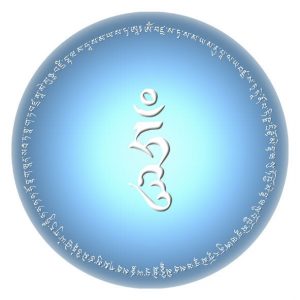
oṃ vajrasattvasamayam anupālaya vajrasattva tvenopatiṣṭha dṛḍho me bhava
sutoṣyo me bhava supoṣyo me bhava anurakto me bhava
sarvasiddhiṃ me prayaccha sarvakarmasu ca me cittaṃ śreyaḥ kuru hūṃ
ha ha ha ha hoḥ bhagavan sarvatathāgatavajra mā me muñca vajrī bhava mahāsamayasattva āḥā
Explanation of the 100 syllable mantra
By Jamyang Khyentse Wangpo and Kongtrul Lodrö Thaye
Here is the translated meaning of the 100 syllables:
This was according to Manjugosha [Jamyang Khyentse Wangpo].
Alternately, according to Guna [Jamgön Kongtrül] the first part is the same followed by this slight difference:
H.H. The 17th Karmapa Trinley Thaye Dorje Teaches about Cause and Effects
H.H. The 17th Karmapa Trinley Thaye Dorje is teaching about cause and effects at the Karmapa International Buddhist Institute, India.
H.H. the 17th Karmapa Trinley Thaye Dorje Teaches about “What is Buddhism?”
The video is a trailer from a DVD of H.H. the 17th Karmapa Trinley Thaye Dorje teaching in Hong Kong explaining “What is Buddhism” If you would more information about videos on the Karmapa’s teachings please visit the Karmapa Documentary Project website – http://www.karmapa-news.org
H.H. The 17th Karmapa Trinley Thaye Dorje Teaches about Meditation
H.H. The 17th Karmapa Trinley Thaye Dorje is teaching about meditation at the Karmapa International Buddhist Institute, India. This is an extremely clear and valuable insight into meditation by the Karmapa.
For more videos like this please visit the Karmapa Documentary Project website: http://www.karmapa-news.org
The Relics
Khenpo Chödrak Tenphel
Relics, in Tibetan ring bsel (1).
Ring, means a price, a value, and here it means something that is beyond a price, invaluable.
Bsel, means to give a value, here no wealth could pay the value of this object, which is beyond all price.
This etymology reflects appreciation for the Buddha in the minds of Tibetans and their devotion to them because they do not speak of relics but of something invaluable.

There are four types of relics:
1/ The first type refers to the physical remains of a Buddha or a master, koudoun ki ring bsel. The most valuable relics are the physical remains of the Shakyamuni Buddha. Then come the relics of a bodhisattva that is on one of the ten bhumis, then those of an individual who has obtained the fruit of one of the levels of realization of the Theravada. The higher is the realization of the individual, the greater the blessing of relics. If we compare bones fragments of a great master with those of a mundane person, we will see differences concerning in particular the color of the bones. At the National Museum of Delhi are fragments of bones of the Buddha Shakyamuni, in a glass box and can be seen that they are bright and yellow as charged with light. Praying and developing bodhicitta in the presence of such relics is very meritorious because the blessing is such that practicing virtue in their presence is very powerful.
2/ The second type of relic refers to fragments of clothing, hair or nails of a Buddha or a master. If such relics are worn they protect against the difficulties that may arise from the evil intentions of nonhuman beings.
3/ The third type of relics appears in the form of pills the size of a small seed; these are physical remains that originate from the white element of the body appearing after the cremation of the master in the ashes. They come from the substances of the body, and are of different colors white, red, blue, etc.
4/ The fourth type of relics is a relic that has the form of dharma words, such as mantra, etc.
Constructing a stupa, a reliquary containing one of these kinds of relics, in a place, a country where none of these relics previously existed, is a very meritorious virtuous act.
Notes:
(1) Ring bsrel: “Relics”.
It is often seen in Asian culture that small globules appear as the remains of the bodies of holy persons. They are taken as a sign of spiritual fulfillment.
Several types of “relic” are distinguished; they are usually whitish and lustrous like very small pearls but also in other colors such as red and blue.
Especially holy relics are known to reproduce themselves spontaneously (the author has come across this personally in reliable circumstances twice). In that case the originals are called the mother and the reproductions are called the (bu) offspring.
Relics from especially holy beings are sometimes a little larger; more like the size of a pearl, and have holy pictures on them.
Tony Duff (illuminator dictionary)

